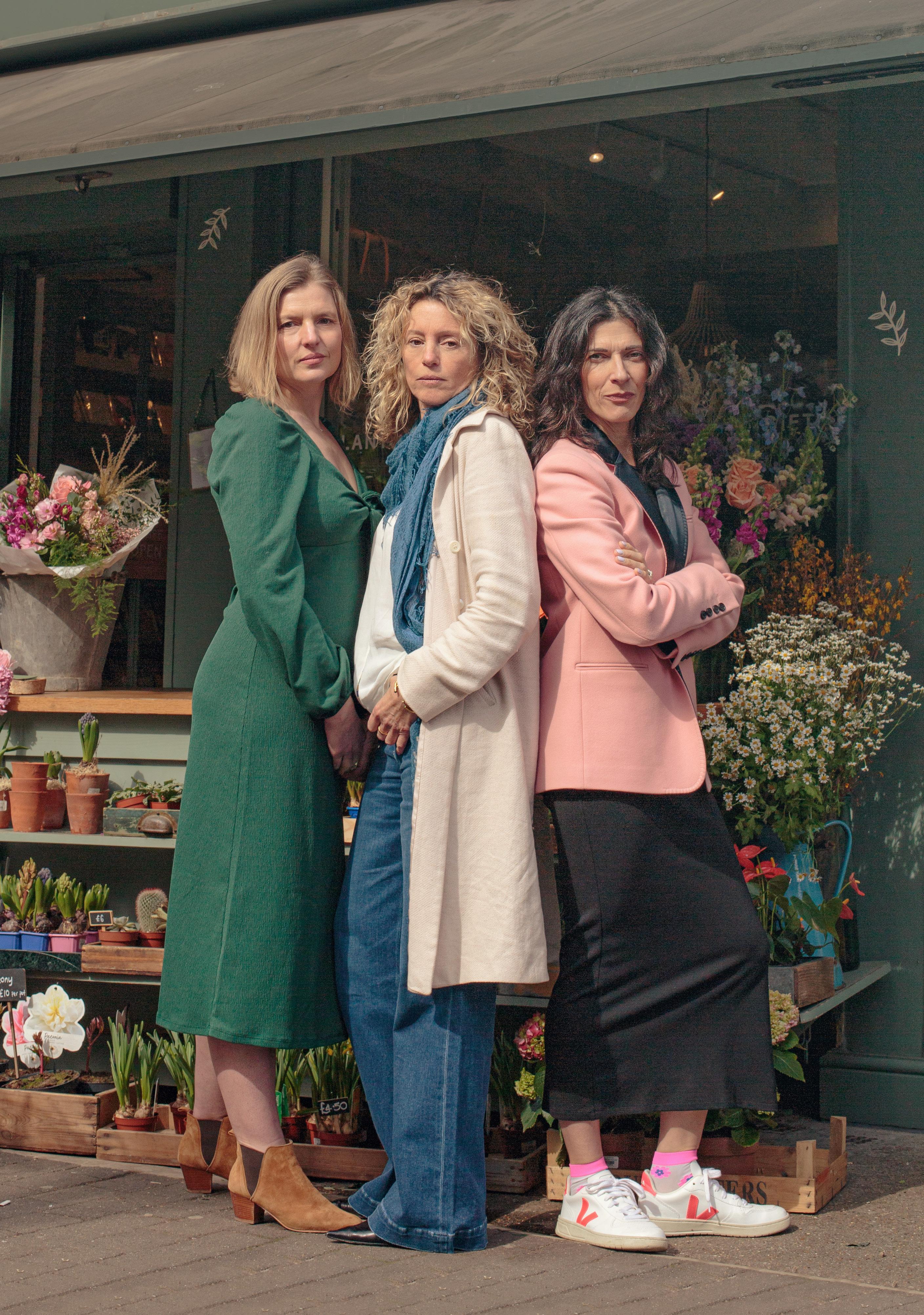
02 / Spring Summer 2023
Issue
FOUNDER & EDITOR-IN-CHIEF
ART DIRECTION & GRAPHIC DESIGN
COPY CHIEF
CONTRIBUTING PHOTOGRAPHER
CONTRIBUTING WRITERS
Francesca R Zerenghi
Mark Lamsdale
Sienna Beckman
Hannah Drew
Léa Aubigne
Carlotta Beck Peccoz
Emma Carys
Mila Fielker
Lauren Devine
Denise Di Castro
Oriana Gregorj
Anna Halász
Caroline Hodge
Sarah Scott
Tom Watts
PUBLISHERS
Stuart Walters
Sam Skiller
Cinegirl is published bi-annually. Cinegirl is printed in the UK and distributed world-wide. All rights reserved.
Reproduction without permission is prohibited. We make every effort to ensure the accuracy of all of our articles, but we cannot accept liability for loss or damage arising from the information supplied. The opinions expressed do not necessarily represent the views of the publisher. For subscriptions, feedback and address changes please contact us at info@cinegirl.net.
Cinegirl Issue 02 Spring Summer 2023 info@cinegirl.net www.cinegirl.net @cinegirlmag
02
LETTER FROM THE EDITOR-IN-CHIEF
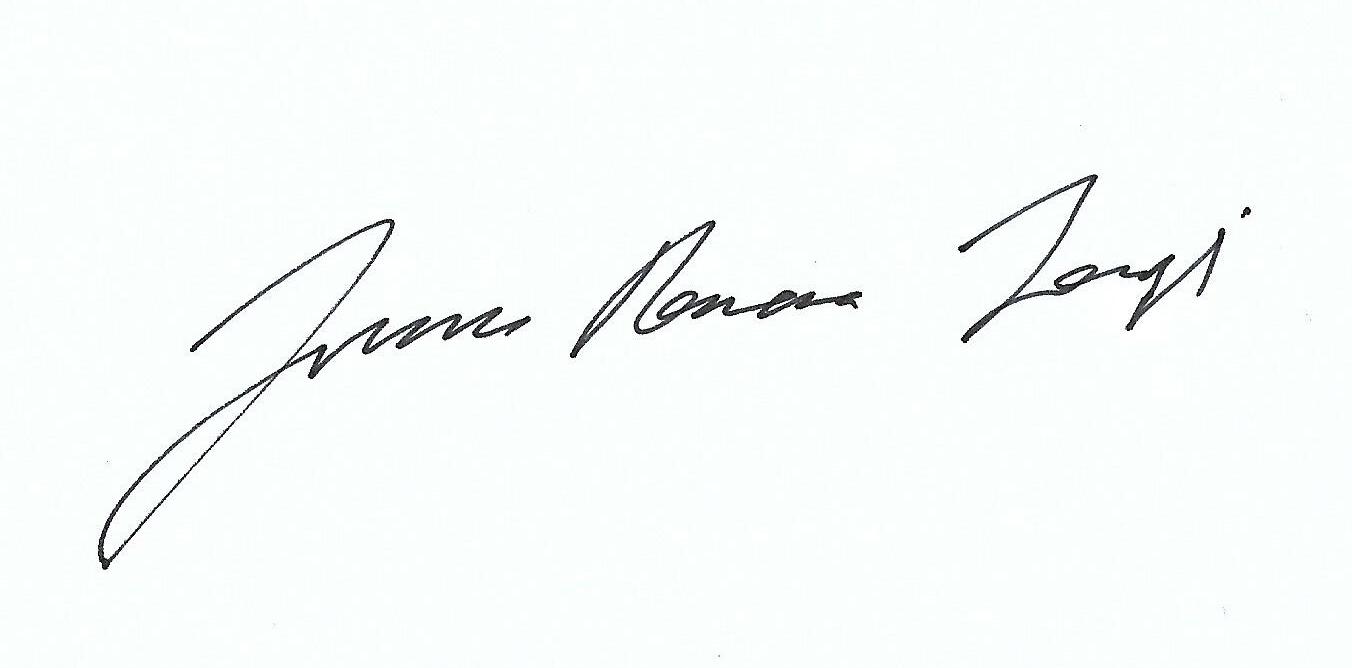
Dear Reader,
If, like me, your social media feed is generously bursting with floral grams and reels, however, you need to reconcile with the unfathomable truth that you are indeed living in an almost persistent cloud-stretched grey island, then in the words of Jim Reeves’s song, ‘Welcome to my World’. This is when the tune pops back in your mind.
Of course, our Spring Summer 2023 Issue will warm up those vernal hearts and smiles, thirsting for sunshine and antihistamine. Come on, you know you miss the latter. As this is our second printed issue (I am still in awe), I thought of sharing with you how I read Cinegirl.
First things first - the sniff. Please tell me that you detect this gorgeous paper and shutter your eyes for a couple of seconds and simply inhale. PAUSE. You see what I mean now.
Simultaneously to that, your fingers should massage this gorgeous paper. No, it is not hand-picked, but it has been meticulously chosen from a vast array of different paper stocks.
Secondly, I quickly skip all the way to the back and admire the gorgeously crafted artwork by @titoune.illustration. After which, I go all the way back to the beginning and start with the front cover. I mean - wouldn’t you? That is of course, if you just can’t stop yourself from peeking into the pages. Don’t be naughty now.
Thirdly, always have your phone ready. Ready to screenshot those fine and exquisite laps of yours with Cinegirl gracefully resting on them, and share and tag us @cinegirlmag, because you simply cannot resist sharing your life with the rest of the world - and most importantly, with us.
Now, this is how you read Cinegirl.
Sending you all abundant warm wishes,
Francesca R Zerenghi Editor-in-Chief
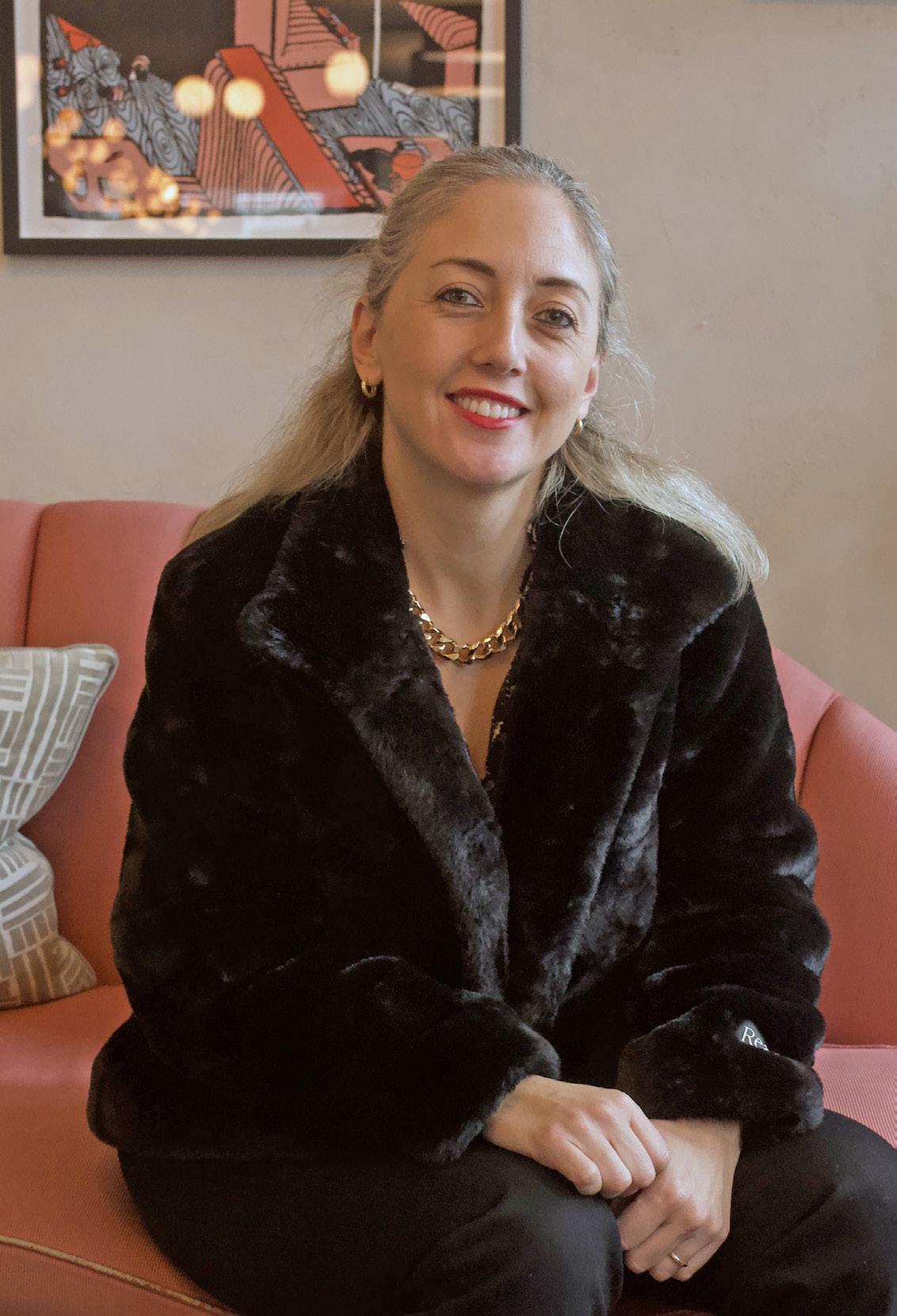
03
TABLE OF CONTENTS
HOW TO BE A DIRECTOR (AND OTHER ENTRY LEVEL JOBS)
SUGAR HIGH
CELEBRATING INTERNATIONAL WOMEN’S DAY WITH CINEGIRL CLUB: DISCUSSING STUNT PERFORMANCE ON SCREEN
SPOTLIGHT ON: LAUREN PROUD
ZELDA WYNN VALDES
– YOU KNOW HER COSTUMES, BUT DO YOU KNOW HER NAME?
STRAIGHT 8 – THE ONE SUPER 8 CARTRIDGE NO EDITING FILM COMPETITION
THE INSPIRING STORY OF MADAM FILMS – AN EMPOWERING FEMALE-LED PRODUCTION COMPANY
CVP/ARRI OPERATING WORKSHOP
HUMAN RIGHTS WATCH FILM FESTIVAL
ALL EYES ON ESEA!
CINEGIRL ATTENDS THE BSC EXPO 2023
LUCREZIA THE COLOURIST
FROM THE SILVER SCREEN
FIRE OF LOVE: A ROMANTIC ODE TO THE PRIMORDIAL
IN CONVERSATION WITH SOPHIA GIBBER – LONDON & ROME BASED PRODUCER
Q&A WITH CINEMATOGRAPHER SARA DEANE
INTRODUCTION TO DOCO STYLE & REMOTE LOCATIONS FILMING
YOU’VE HEARD OF FAST FASHION, BUT HAVE YOU HEARD OF FAST FILMS?
FEMALE FILMMAKER FOCUS: MICHELE MEEK – DIRECTOR, WRITER AND PROFESSOR
CINEGIRL’S PICKS – FILM FESTIVALS AND TRADESHOWS
TITOUNE ILLUSTRATION
06 11 12 17 18 20 22 27 28 29 30 31 32 35 36 37 38 40 41 42 43 04
CINEGIRL CLUB
Our members will network, unwind, receive industry guidanceresulting in genuine contacts and relationships. Join
cinegirl.net/cinegirl-club

to The Cinegirl Club, a place where authentic events take place, bringing talent and industry together.
Welcome
our mailing list to receive updates on Cinegirl Club.
Credit: Nic Roques
05
HOW TO BE A
DIRECTOR
(AND OTHER ENTRY LEVEL JOBS)
by Tom Watts
The best way to understand someone else’s experiences and perspective is to ask them and listen. Controversial, I know. Being aware that I don’t know what I don’t know when it comes to being a Director and therefore not knowing what knowings I should know, I approached a knower who knows.
I met with Michelle Savill in a bustling cafe in Soho. She had kindly taken time out of her very busy schedule as Director on the Netflix series, Sex Education, to talk about her career as a Director and share her journey, experiences and perspective.
Tom Watts (TW): How did you become a Director?
Michelle Savill (MS): I didn’t plan to be one. I did a law degree. I worked a bunch of jobs and I did a bit of journalism. It took a couple of years to land there. I didn’t really know what I wanted to do, but kept thinking ‘Well, that’s what I don’t want to do’. I went to university and wound up in a film course. I had been obsessed with film throughout my childhood and teenage years. As part of the curriculum, we had to make some short films, which I really enjoyed. Then I did an honours year and I made a short film for my thesis.
TW: Do you feel that each of those different life paths feed into your skill set as a director?
MS: I think so. I’m very adaptable and have taken part in many different paths in life. I travel a lot. Getting out of your comfort zone, meeting all sorts of people, and experiencing all sorts of jobs allows you to have more of
an insight into character, behaviour and psychology, which is ultimately what directing is. How can you relate or have empathy when you have a very limited life experience?
TW: What was it like to write and direct your first films?
MS: It scared me to write and direct. That’s why I did a fourth year at university. I wanted to do something that wasn’t just an assignment. I wanted to make a short film for myself. After that, I just continued writing and directing, but I don’t feel like I have to direct what I write.
TW: How do you work with an actor to bring out the performance you want from them?
MS: Honestly, if you’ve cast the part well, you don’t have to do a lot. You just let them go through it. The biggest challenge is trying to watch each take fully in the moment as an audience member, not as a director on a set. I have to push aside the stress and be in the present. If you don’t feel something or if your attention wanders, that’s usually a sign that it’s not working.
TW: So you like to give actors space and freedom to explore what they’re doing?
MS: I try to give some space and safety to play and be vulnerable, and I’ll always be vulnerable with them. I will bear my soul to that actor if that’s what they need and they can ask me anything. You’re a team and you’ve got to go there together. >>
“Getting out of your comfort zone, meeting all sorts of people, and experiencing all sorts of jobs allows you to have more of an insight into character, behaviour and psychology, which is ultimately what directing is.”
06
– Michelle Savill
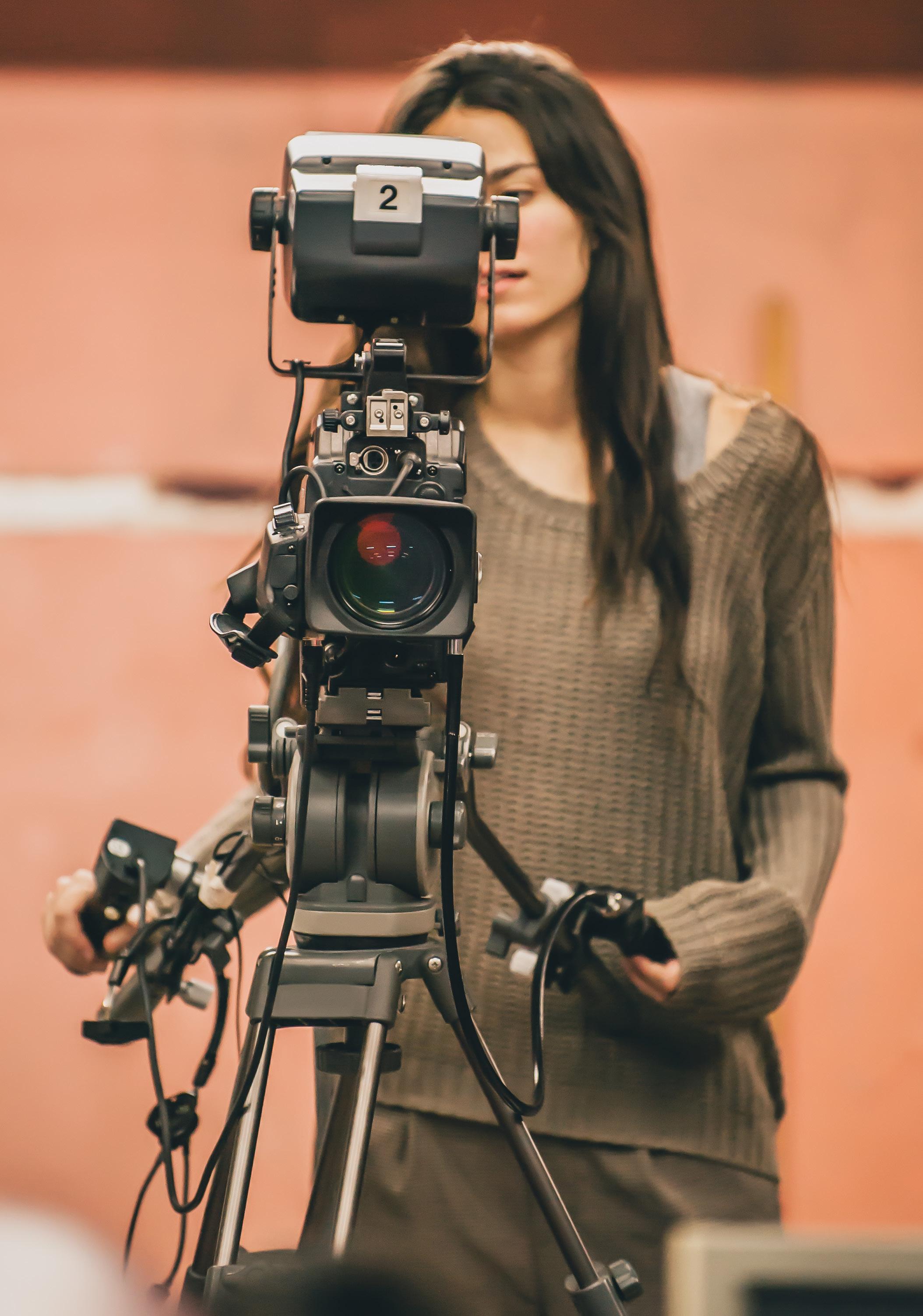
07
TW: When you start out as a Director on a new project, what’s the process of building your team?
MS: At first you have to do everything yourself, and then, as you start doing bigger budget projects, you’re able to work with people who specialise in certain areas. It’s good to learn all the different roles though. I met my Producer pretty early on and was lucky that she came on board and started producing some of my shorts.
TW: What should a Director look for in a Producer?
MS: You have to love working together, be able to be honest with each other and be able to work through any disagreements you might have.
TW: You mentioned psychology earlier, how does that feed into directing?
MS: I’ve always been interested in psychology, even when I was young. Part of directing is that it’s putting psychology into behaviour. Studying that is really important. Understanding your own psychology and why you do things also helps. You then understand where other people are coming from and it all feeds into directing them.
TW: What would you say to a Director who is early in their career?
MS: Don’t get hung up on one project if It’s not happening at the moment. try to focus on something else and always be working on multiple projects at a time.
Directing from a place of empathy. This is one of the main things that stuck with me from Michelle’s interview. In psychological terms, this would be cognitive empathy, which is the ability to understand and recognise another person’s emotional state, perspective and beliefs. All of Michelle’s experiences have fed into her understanding of how people behave and why. Understanding the ‘why’ is a powerful tool in creating a believable and compelling world that audiences will want to watch.
Starting as a Director, you’re going to have to wear a lot of hats to get your initial projects off the ground. There is a saying: ‘People want to get on a moving train’. Directors are the train driver; it’s your responsibility to get momentum going and be the driving force behind your career.
I next spoke to Director Ella Jones in the cafe attached to the Photographers Gallery. As I’m writing this article, I’ve just seen that she has had her film Polly (amorous) announced as one of the six projects that Netflix and Creative England are backing as part of the Breakout scheme. Very well-deserved congratulations are in order. I look forward to seeing it.
Tom Watts (TW): So why directing?
Ella Jones (EJ): One of the things I love so much about the process of making a film or TV series is the collaboration. I love how many different people and skills you need to make something. As a Director, you get to work with all these people who are uniquely talented in their specific areas and you’re steering the ship and harnessing all of that.
TW: How did your career as a Director start?
EJ: While I was working part-time at a production company, I started making short films with friends. It was amazing, because we didn’t really know what we were doing, just grabbing a light and a little Canon 5D and filming some stuff. We made a few shorts thanks to crowdfunding, with everyone just helping out, and I learnt so much. That was my film school, because I didn’t go to film school. I directed a short film that someone I’d be working with at the production company had written. It was accepted onto a BFI/Creative England scheme called Funny Girls. That then became a calling card. That short film was what got me my agent. Elaine, the writer of that film, then went on to get me my first TV work. That short was definitely the moment that I was able to get a foothold in the industry.
TW: So it’s a case of building up your skillset as director through self-funded shorts that then put you in a good position to apply for the short funding?
EJ: Yes, I wouldn’t have gotten into the scheme if I hadn’t made anything before. I had to have a body of work to apply and for the Producer to come on board.
TW: How long did it take to go from making shorts in your spare time to being a full-time Director?
EJ: From leaving university to being a full-time Director, it took me nine years.
“Make shorts! Get out there and make stuff. It’s the best way and it’s the only thing you can really take some control of. Everything you do is a really useful step along the way, and when you look back, you’ll realise how valuable those experiences are.”
08
– Ella Jones
TW: How do you think your career would be different without an agent?
EJ: I probably would have gone more down the film route if I didn’t have an agent. I had a Film4 commission before I had an agent. With film there’s more of a sense of growing a Director’s career from shorts to features. I was mentored for a bit through BAFTA by an amazing director called Becky Martin. She did Peep Show, Veep, and Succession and she’s never had an agent.
TW: Based on your own experiences, what advice would you give to new Directors?
EJ: Make shorts! Get out there and make stuff. It’s the best way and it’s the only thing you can really take some control of. Everything you do is a really useful step along the way, and when you look back, you’ll realise how valuable those experiences are.
Ella and Michelle both started making films by getting it done any way they could. Crowdfunding, working outside of directing, begging, borrowing, stealing, and getting that train moving. It’s easy to be despondent in the face of limitations, but creativity thrives in boundaries. We are creative people and problem solving is one of the most important skills to have on set. That problem solving starts with your first short film with the biggest question: how are you going to make it?
Ella really emphasises the collaborative elements of film. There is an art to building a team and it starts with understanding yourself. Do you understand your own strengths and weaknesses? Can you bring complementary personalities together and create an environment where they can flourish?
As your career as a Director starts to take shape, you will inevitably start thinking about agents.
I met with Talia Tobias and Christian Ogunbanjo from United Agents over a coffee in a quiet corner upstairs at the PictureHouse Central in Soho.
Tom Watts (TW): What are you looking for in a Director who you want to represent?
Talia Tobias (TT): It’s really good if someone has buzz about them that they have generated by themselves, by going out and meeting people, making shorts and submitting to festivals. It shows they’ve got a good work ethic. It shows us that we can then work together to build upon that strong foundation.
TW: What should Directors look for when seeking an agent?
Christian Ogunbanjo (CO): You want to work with someone you get on with. That’s the foundation of a really good, longterm relationship. No matter the backgrounds, do we get along? I can like your work, but maybe we’re just not suited for each other and that’s fine.
TW: That’s a really important point. We work in a relationship-based industry and a huge amount of access to work is through those relationships.
TT: When I was looking to get into production, I remember a Producer once saying to me, ‘When hiring people for any role, 50% of it is that they have to be good at the job, and the other 50% is that I have to like them. It’s so true. It feeds into that excitement when you pitch someone to a Producer and you can say ‘Their work is fantastic, and they’re genuinely the loveliest person and I love working with them’. I love being able to do that.
TW: There’s nothing wrong with not getting on with a particular agent, it’s just not a match. But there will be a match somewhere else for you.
CO: Exactly. Just take your time. I always advise new Directors to try to meet multiple agents. Then you can make an informed decision about who you want to go with, not just go with the first one you see.
TW: How would you approach networking?
CO: Just saying ‘Hey, I love to grab a coffee’. Do your research and find out a bit about them, their personal taste, what type of projects they work on, and go from there. Be specific. That could lead to something more than just an email saying ‘Hi, read this script’.
TT: Meeting people in real life is always better, even if nothing comes from that meeting. If you get on really well, the next time you send them a script or a project, then there’s a face to a name and they know who you are. It makes such a difference.
TW: Where should a Director be in their career when they start looking for an agent?
CO: You don’t need to know everything, but you should have a certain level of confidence in your abilities and where you want to go with your career. If I’m putting you in a room with Producers, they need to have confidence that you can direct.
TT: If a Producer is taking a risk on new talent, they want to have validation. If the Director’s projects have done well at festivals and someone else speaks highly of them, that means that lots of other people are excited about their work.
CO: They could have done adverts, a few shorts that did relatively well in festivals, and maybe have directed a couple of second unit shoots. Maybe they’ve also done a Director shadowing scheme as well.
TW: What stands out in a Director to you?
CO: It’s really about their work, at the end of the day. Does it move me? I’m going to be talking to a lot of people about them, so I should be passionate about their work. That’s huge for me.
TT: I like to look at how their work is shot. Is it beautiful? How are the performances from the actors?
CO: You’ve got to love being a Director. You’ve got to be able to take rejections also and learn from them, because there is always a lot of ‘no’.
TW: What do Directors need to be doing so that you can do your job of representing them?
TT: Give us the materials and the energy, in whatever way you can. That could mean making short films, building relationships, getting yourself attached to projects, and developing projects yourself in your own time. All of that is really helpful.
CO: You’ve got to be your own agent to an extent as well, particularly when you’re trying to get that first bigger project. You have to have a bit of industry knowledge.
Talia and Christian both emphasise how important the relationships with the people you work with are. Agents aren’t a homogenous group and it’s important to bear that in mind when you approach them. You’re not just looking for ‘an’ agent, you’re looking for the right agent for you. >>
09
Finally, I spoke to Casarotto agent, Emma Obank.
Tom Watts (TW): How do you work with your clients to help them with access to work?
Emma Obank (EO): The first thing I would do is call my top 30 production companies and say ‘Look I’ve just signed this hot new Director, I think they’re really exciting, and I would love you to check out their work’. It can take quite a long time for someone who has just done short films to move into directing TV. It might be that you have to go through quite a few hoops to get to do that and build experience.
TW: What do you need Directors to be doing to help you in that process?
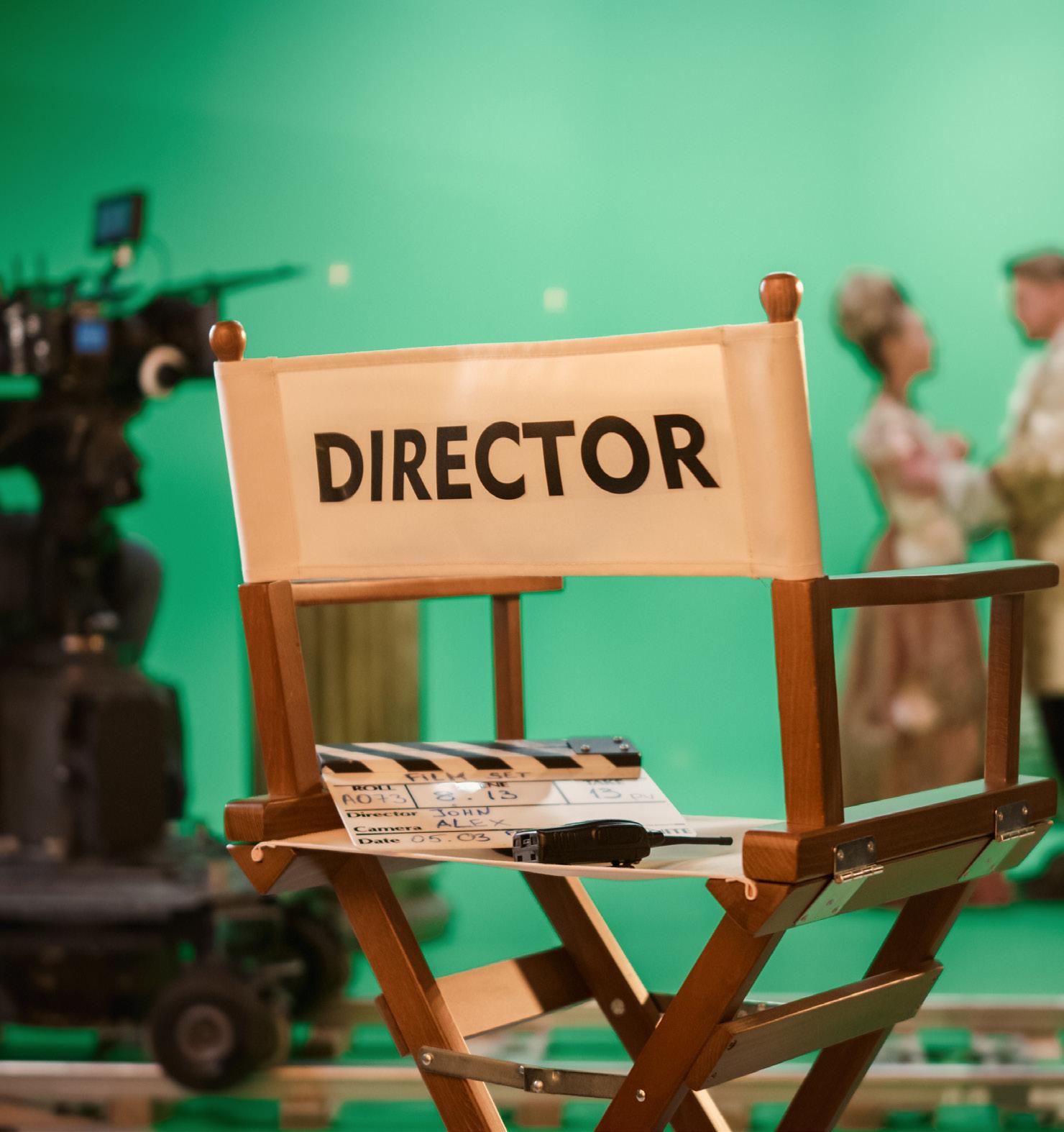
EO: If you’ve had one short film which was super successful, then you should be trying to get that next short made or creating some pitches for TV or film ideas. The more material we have, the better. And the more proactive a Director can be, the better. The more that we can say about how active someone is, the more we can do for them.
TW: What’s the best way to get in touch with an agent?
EO: We get hundreds of enquiries every week, and I only have a couple of seconds to look at them, so make that email stand out. Explain why you’re writing to that agent specifically and why you think they would be a good fit. Talk about your work and send the best piece of work that you have. As a Director or Writer, you’re a communicator, so use your email to showcase that.
TW: How important are showreels?
EO: I would always rather see one full project, whether that’s a web series or a short film. As a new Director looking for representation,
it’s better to have full work you can send over rather than just clips. That will show your talent more than anything.
TW: For the up-and-coming Directors reading this, what should they be doing?
EO: You don’t need an agent to write to a Producer. You can start trying to build up on your own relationships, creating work, and trying to get your first projects made. It might be that you have to crowdfund at first, because financing can be so difficult in the UK, but there’s always a way. You need to be trying to do as much as you can to move forward on your own
TW: What catches your attention in a Director?
EO: It’s different on every occasion. There are things that I’ve watched that have been really well put together - amazing cast, amazing costume, amazing script. Then sometimes it’s just a really edgy, cool idea that is something I’ve never seen before, and I fall in love with it. For me, the joy of the job is not the commission. The joy is seeing my clients achieve their dreams.
To summarise our Director crash course, build a team, make shorts, develop relationships, attend film festivals, apply to schemes, shadow, find a mentor, make some noise, be present in the industry and create a wave that you can surf forward on. You also need to be prepared to handle rejections and setbacks, and be able to dust yourself off and carry on. Keep growing as a professional and as a person, and you will make progress. Find an ambitious Producer, a really reliable DOP (contact my agent at Lucy@looptalent.co.uk …ahem) and get that train moving.
If there’s anything you want to discuss about this article, I’m happy to be approached on instagram @tomwattsdop. n
“The more material we have, the better. And the more proactive a Director can be, the better. The more that we can say about how active someone is, the more we can do for them.”
10
– Emma Obank
SUGAR HIGH
by Sarah Scott
Sugar. The human race loves it. And it’s not our fault. Our bodies are designed to run on carbohydrates and we are inherently attracted to these in the form of sweetness. This worked well for early humans who only got sugar from raiding a wild beehive or foraging for seasonal berries and fruits. The big problem for us in the 21st century is that sugar is in many everyday foods and it’s ruining our health.
Modern food provides us with an abundance of highly processed carbohydrates, as well as added sugars into wonderfully marketed packaging, that hides the reality of what we are putting in our mouths. So called ‘health foods’ like granola, health bars, sports drinks, rice crackers, salad dressings, and low fat products are all high in carbohydrates and various forms of (usually hidden) sugars. Companies hide sugar by listing a few forms of it in the ingredients list (to make each amount look small) or use words like rice or corn syrup. If a food has an added ingredient that ends in ‘-ose’ (maltose, sucrose, fructose, dextrose), then it contains sugar.
The glycemic load
When we eat sugar and refined carbohydrates, such as white bread and processed foods, we give our body a rapid spike in blood sugar. This results in the brain producing a surge of dopamine, which is similar to the way the brain reacts to substances such as heroin and cocaine.

Furthermore, with a rapid rise in blood sugar, our pancreas releases insulin to take the sugar from our blood and use it as energy. If we don’t use this as fuel, it will be stored mainly in the liver and muscle as glycogen (a short term fuel store) or as fat (a long term energy reserve). If we keep eating these foods regularly and are reasonably sedentary, our body has no reason to use what it has stored which leads to unhealthy weight gain and other health issues. Eating too much sugar negatively impacts our hormones, immune system, brain function and cognition, heart and circulatory system, and is associated with increased risk of some cancers as well as metabolic disorders such as diabetes. A few good reasons to reduce our sugar load!
Get off the rollercoaster
Being on a sugar rollercoaster of highs and lows negatively impacts our health in so many ways. It is therefore essential to keep your blood sugar levels balanced, which can be achieved through diet. Protein, fat and fibre do not raise blood sugar, so incorporating them into meals and snacks is a good starting point. Focus on non-starchy vegetables with a rainbow of colour, fish/meat, beans/legumes, whole grains and fruit. Look at food labels and avoid eating too many high carb/sugar foods and drinks. Remember, just because it’s in a health store or the health aisle of a supermarket, it’s not necessarily good for you.
Shake off sugar cravings
To help with those sugar cravings, supplement with Chromium Picolinate which can support insulin and glucose metabolism. n
11
“Being on a sugar rollercoaster of highs and lows negatively impacts our health in so many ways. It is therefore essential to keep your blood
CELEBRATING INTERNATIONAL WOMEN’S DAY WITH CINEGIRL CLUB: Discussing Stunt Performance On Screen
by Lauren Devine l Photography by Hannah Drew
We were beyond thrilled to ring in International Women’s Day with our event partners Mission Digital, Illuminatrix, Illuminatrix Rising, the Mark Milsome Foundation, CVP, Arri, and the British Stunt Register, facilitating open and honest discussion about stunts & safety on set.
Hosted at Arri’s Creative Space in central London, our panel was made up of the following voices with specialist experience in stunt performance and coordination:
Andra Milsome: Following the death of her husband, cinematographer Mark Milsome, who was killed whilst filming a car stunt sequence on location in Ghana in 2017, Andra founded and launched the Mark Milsome Foundation in 2018 to honour Mark’s passion for supporting young people struggling to break into the British film and television industry. Due to the circumstances of Mark’s death, the Foundation also now works to improve health and safety practices on set.
Abbi Collins is a British Stunt Register (BSR) Stunt Coordinator & Horse Master. Her credits include Bridget Jones’s Diary, Poldark & more, with over 35 years experience working as a stunt professional.
Annabel Wood has been on the BSR as a stunt performer since 2011. She has doubled multiple lead actors, played many featured roles, and participated in charity fight nights supporting injured stunt people.
Laura Smith is an award-winning film and television director who has directed over thirty episodes of television for the BBC and Channel 4, and is developing feature films with organisations including the BFI.
Our panellists participated in a candid discussion of their experiences as stunt professionals: learnings from their careers, observations of where we are now, and considering the steps we need to take to move the industry forward.
Francesca Zherenghi (FZ): Today is International Women’s Day - also known as just another day at Cinegirl - working to empower and elevate female and non-binary talent, which is a huge part of what Cinegirl Club is about. I’ve always been very interested in learning more about health and safety on sets, specifically with how the stunts that I see on screen work in production, so I’m thrilled to be joined by this evening’s panel of accomplished stunt specialists and safety advocates. I’d love for each of you to introduce yourselves in your own words.
Andra Milsome [AM]: I founded the Mark Milsome Foundation following the tragic death of my husband, who was killed in 2017, filming a car stunt in Ghana. >>
12
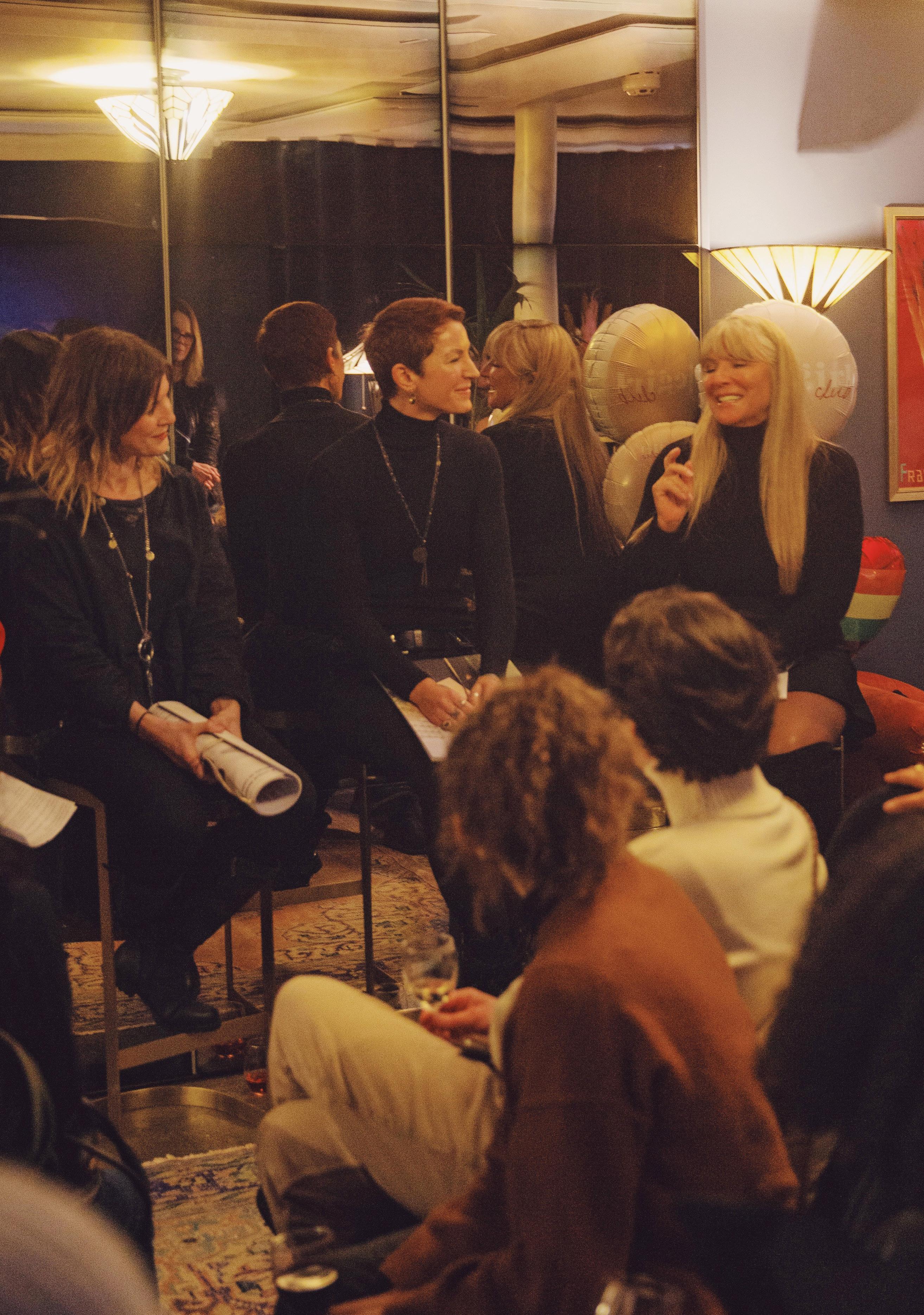
13
It was a completely avoidable accident. Since then, I’ve been trying to figure out how we can make inroads in this industry to change how things are done. In the last 20 years there hasn’t been a lot of change, and so our mission is to keep raising awareness, to identify holes and come up with solutions wherever we can.
Laura Smith [LS]: I’m a director and writer originally coming from a fine arts background. I went to the National Film and Television School and since then, I have been developing films with institutions including the BFI and Channel 4, as well as directing long-running drama, action and kids’ television.
Annabel Wood [AW]: I’ve been a stunt performer for about 12 years now, and joined the BSR pretty much at the start. I was a tomboy growing up, but I didn’t realise that stunt performers existed, until I was doing gymnastics and met someone training for stunts.
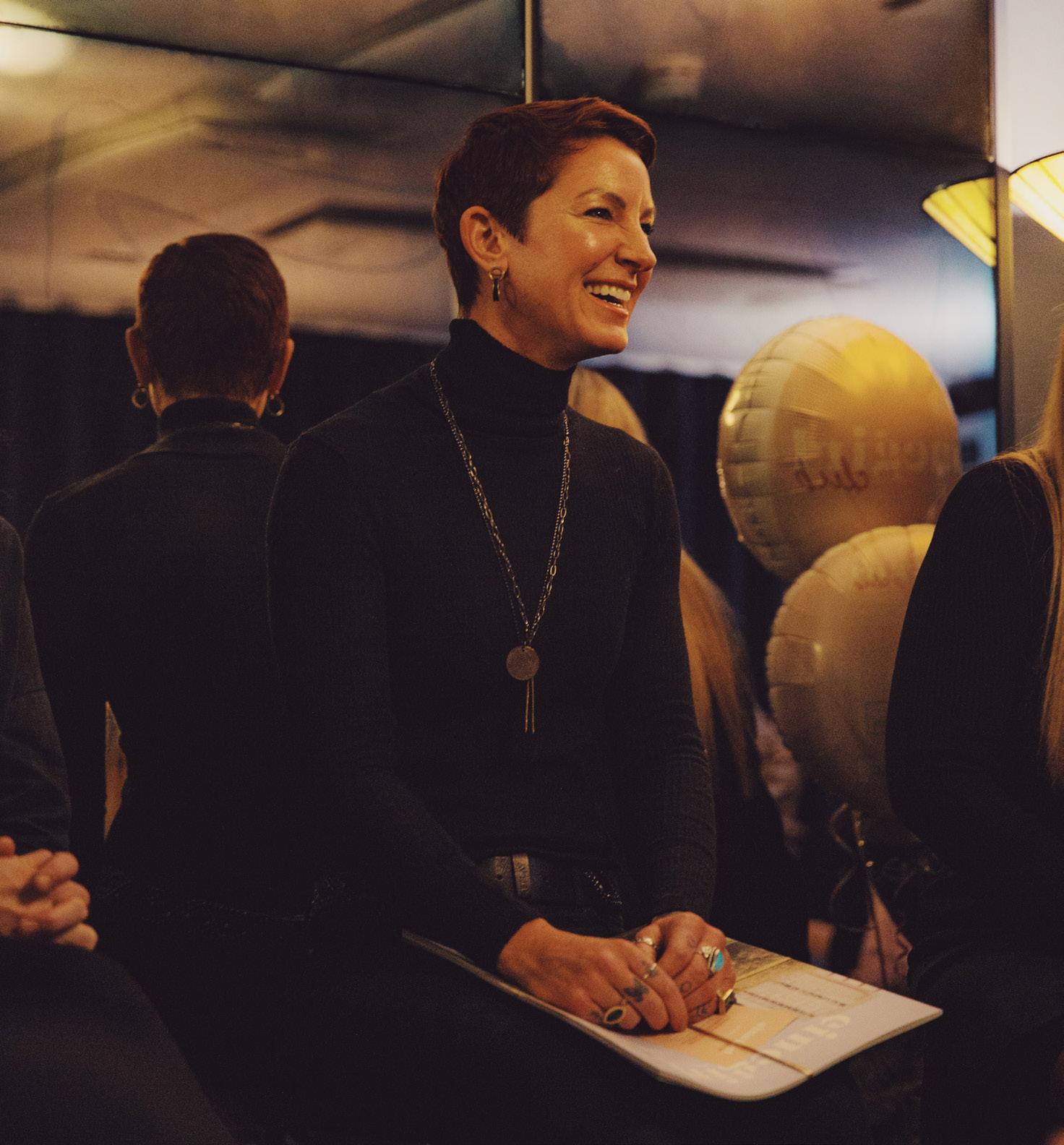
Abbie Collins [AC]: I was a stunt performer for 25 years before transitioning to stunt coordination around 15 years ago. I just retired in December. I loved my career, but was equally at peace walking away from it, because after 35 years I felt I’d achieved everything I’d set out to do - except drive a car through a big plate glass window! I fell into the industry after training as a horse riding instructor, and combining stunts with horses has been the perfect career for me.
FZ: What skills would you say you need to be a stunt performer?
AW: You need a minimum of six skills for the BSR, high level martial arts being key. Horse riding, car racing, high diving,
scuba diving - you don’t have to choose all of these things, but you must be accomplished in at least six. Along with these, you need 60 days of on-set background artist experience, to show that you know how sets operate. Every stunt is different, and you have to adapt to that on set. Some stunts or scenes might have a long rehearsal period, but many do not, so you have to be quick to learn, both mentally and physically.
AC: For stunt coordinating, you have to prove a certain level of stunt experience and then work through five levels of progression towards becoming an accredited member of the BSR. I made the transition from performing to coordinating over a few years; I took the opportunity to do a couple of coordinating jobs, and then started to build my reputation in that role. There are only 12 fully fledged female stunt coordinator members in the BSR in the UK; and probably only six of those work full time. It’s been tricky; I hate to say this, but the guys appear to want to keep us down. They don’t want us to get the big movies or the high-profile TV shows, and seemed annoyed when we do, which has been difficult.
FZ: Laura, you’ve worked with stunt sequences a lot. What does a typical stunt day look like for you on set?
LS: The most important thing as the director is to know that stunt shoot preparations start far in advance of the shoot day itself - in development and pre-production. How are we telling this story in the scene? What is the story perspective of the shot? What’s the genre? Comedy, thriller, horror - this impacts what you want the audience to feel. Then there’s a process of visualising it, with a storyboard or otherwise; and then I figure out the shots I need, and which will include the actor, and which I need a stunt performer for. With experience you learn
“Every stunt is different, and you have to adapt to that on set. Some stunts or scenes might have a long rehearsal period, but many do not, so you have to be quick to learn, both mentally and physically.”
– Annabel
14
Annabel Wood
to anticipate stunt-related production considerations, which you work through in consultation with the stunt coordinator. It is your responsibility to adhere to stunt coordinator recommendations and work these into your advance planning. Stunts need to be set in a way that is safe, and also in a way that is right for the story.
AW: As a performer I’m not involved so far ahead of shooting, but after working in the industry for a while, I have a good working knowledge of what goes into preparing for the stunt elements I’m doing.
AC: The performer’s communication with the stunt coordinator is crucial, following on from the coordinator’s work with the director. I always felt that my role was not only to get the director what they wanted, but to enhance the execution of the stunt on screen where possible. It’s brainstorming and collaboration, and clear communication.
FZ: I’d love to get into the procedural health and safety elements of navigating stunt work. What are some common mistakes crew can make when working to incorporate stunts on set?
AC: A huge one is not allowing enough time and rushing the stunt shots. A high percentage of the time, stunts are left until the end of the day; the majority of shooting time has already been spent on other shots, often leaving us with less than enough time to get the stunt work in safely. I did a show recently where 22 takes were taken to capture a candelabra, and then we had three minutes at the end of the day to get the stunt.
LS: This is why I prefer to do the complicated stuff - with stuntsat the start of the day.
FZ: In situations like that, where does the authority lie in making the call to continue or to stop filming? Are there parties involved that can complicate this process?
LS: As part of your prep, along with reading the risk assessments, you have to sign off on the schedule - which can be fluid, but only to a degree - with the idea being that you have a First AD with experience in the kind of work you’re doing.
AC: It can be very difficult for the First AD to simultaneously run the floor and keep to schedule, and this definitely impacts the execution of stunt on set.
FZ: I feel lucky to work in this industry, and believe it is truly one of the best to be in. Sadly, accidents happen, and whilst it’s great to see organisations like the BSR doing what they do, oftentimes it feels like we’re not listening and not learning.
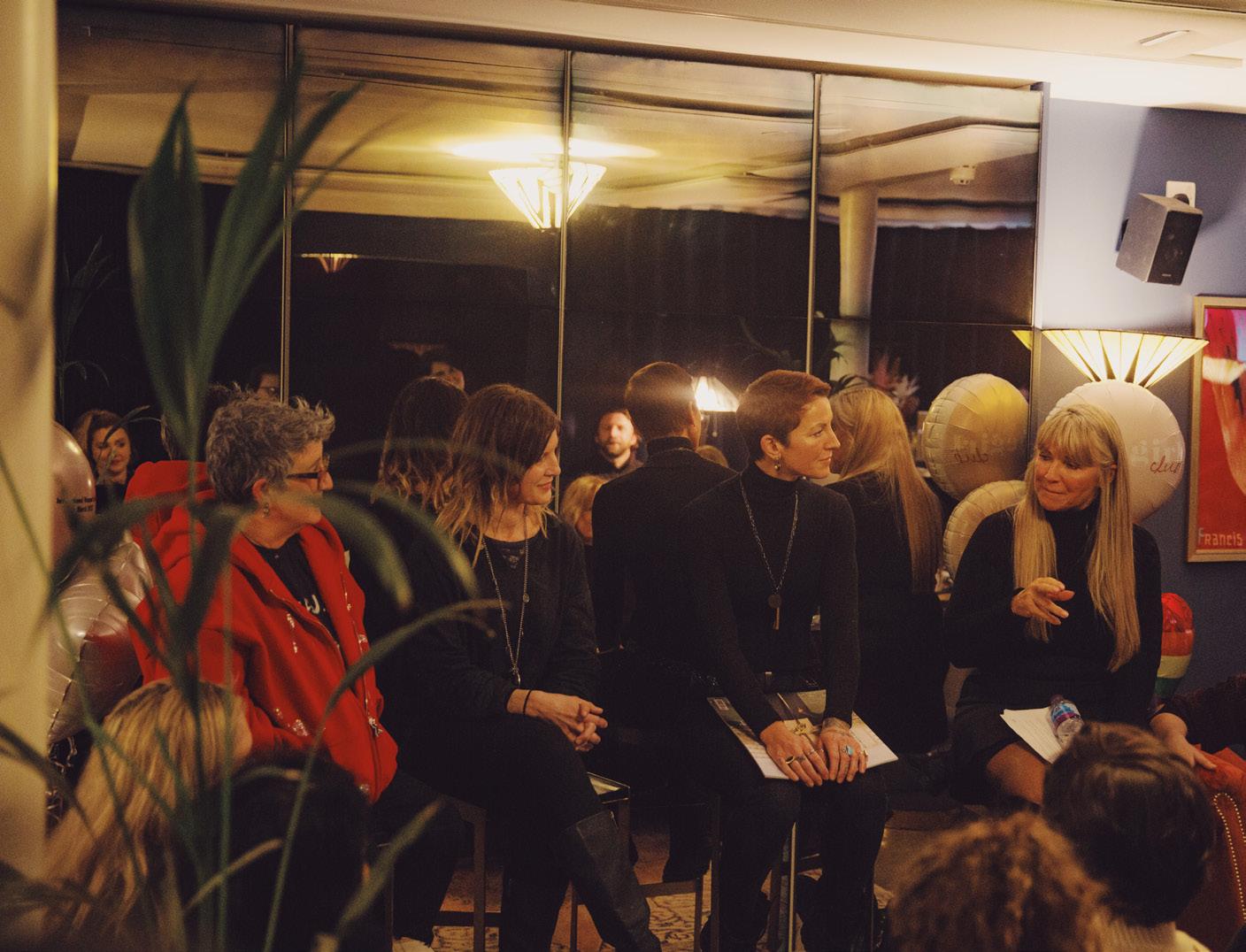
AM: There is a 1974 health and safety law that says that every employer needs to ensure that all employees go through H&S training. In movies this includes producers, and this is a legal obligation. In my experience, and I am sure this is the case with many others, it is not adhered to. How can we regulate this, or make it enforceable? Health and safety can come in and do their 40-page risk assessment, which the majority of people then do not read, except maybe the director. So the contents are not adhered to, and when time is tight at the end of the day, who is going to instigate that conversation and say ‘We are not shooting this today, because it is unsafe’? There has to be a way to make these laws enforceable, because when things do go tragically wrong, it becomes a case of departments passing the buck. >>
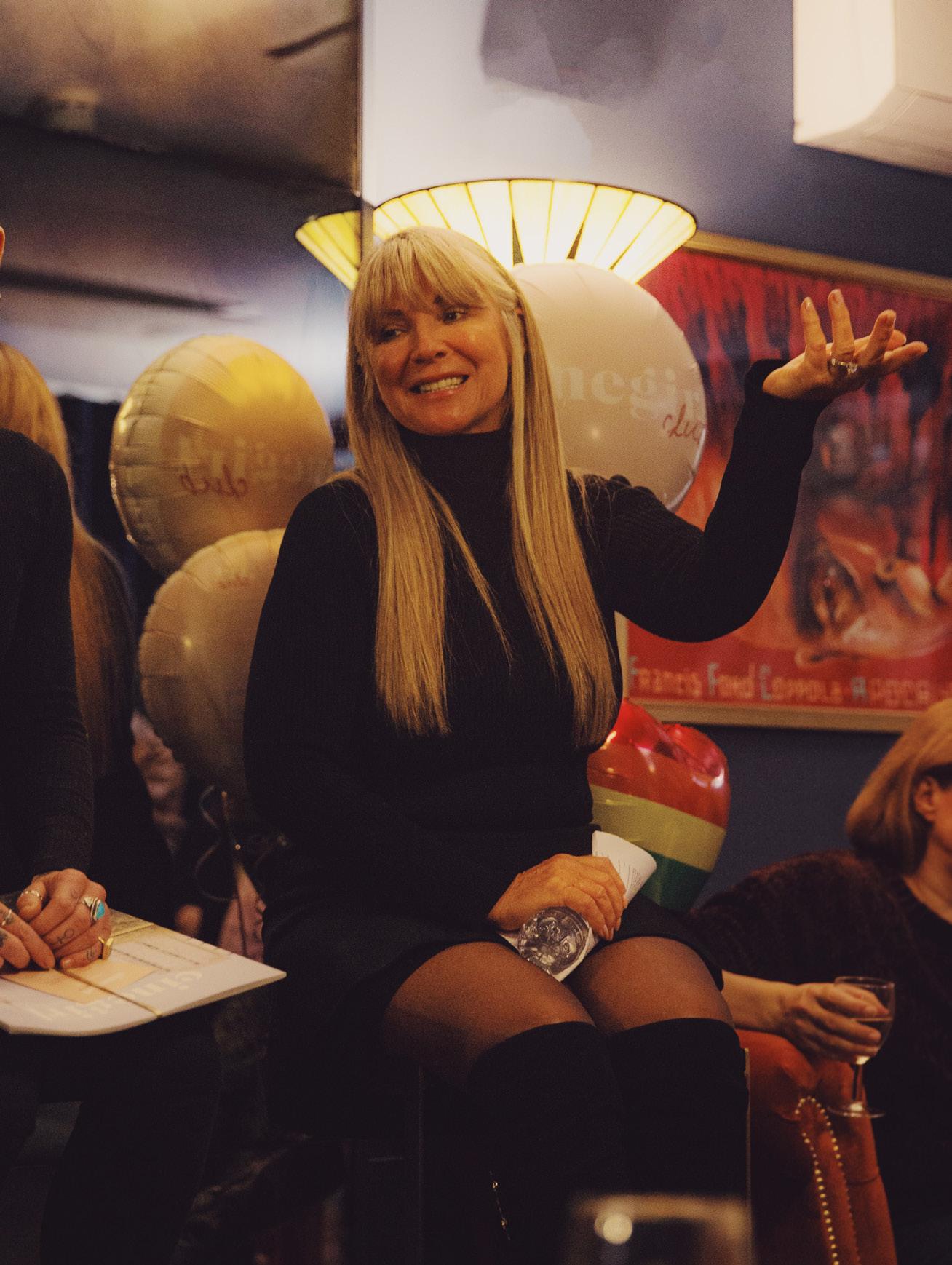 Abbi Collins
Abbi Collins
15
(l-r) Andra Milsome, Laura Smith, Annabel Wood and Abbi Collins
Audience: For crew members who for the most part are freelancers, there is a big fear that speaking up on sets about health and safety concerns could negatively impact their careers and put their positions at risk. How do we change this?
AM: We have absolutely heard this first hand. We’ve conducted anonymous surveys, and something like 65% of people said they would not speak up because they were frightened of losing their jobs. That’s an awful lot of people.
Audience: Hopefully we’ll start to see a lot more change come through with the implementation of the new Creative Standard, which has the authority to look at the creative industries’ standards. One of the things they want to look at is this plethora of independent incidents and stories; a large part of this is directed at issues faced by women on set, but this extends to any form of perceived bullying or intimidation. We are going to collect these stories and start to build standards around this evidence, and empowering crew to speak out is going to be an integral part of that, particularly when it comes to H&S.
FZ: For the stunt performers among you: what’s one of the most memorable stunts you remember doing, and what went into pulling it off?
AW: One was for a zombie movie, and I had to jump off a cliff in Mallorca. It was 55-60 feet high; I’d done my high diving, but only to 33 feet, so I was looking at close to double that. The dive was feet first, which made me more confident in my ability to pull it off. A huge thing for stunt performers is to be honest about your skills, and not agree to stunts which
you have any doubt in your ability to safely execute. There were also only going to be two takes, so I knew I wouldn’t be pushed too far with numerous takes of such a physically intense stunt.
AC: I have two that come to mind. One was a 125-foot fall from a cliff on the Isle of Man, attached to a fan descender, which is a cable on a drum with an operator to slow my descent before I reach the ground. There was no safety kit below me, so if anything had gone wrong with the descender, I’d have been killed, so that was very high risk. For another one, I had to drive a car head on at a camera and screech to a stop just before the camera. We practised with cardboard boxes in the camera’s place, so that I could get my mark, know when to hit the brakes, regulate my speed with each practice; then we put the camera in place. This one wasn’t life threatening but getting it wrong and destroying thousands of pounds worth of camera equipment would have been career-threatening!
On 28 Days Later, Jo McLaren and I were stunt performing in roles of characters that had each been infected with the zombie ‘disease,’ having a fight whilst on fire - fully burning from head to foot. We ended up doing this twice, and an awful lot of prep goes into a burn sequence. It was a night shoot, in winter, stripping down to our underwear and putting on layers and layers of protective gear and gel; I was so cold I found myself saying ‘Hurry up and light me!’
FZ: Our hope with Cinegirl Club gatherings, and with panel discussions like this one, is that the conversations we have here will resonate, and that we can collectively continue discussions of these important issues in our workplaces and in our everyday lives. n
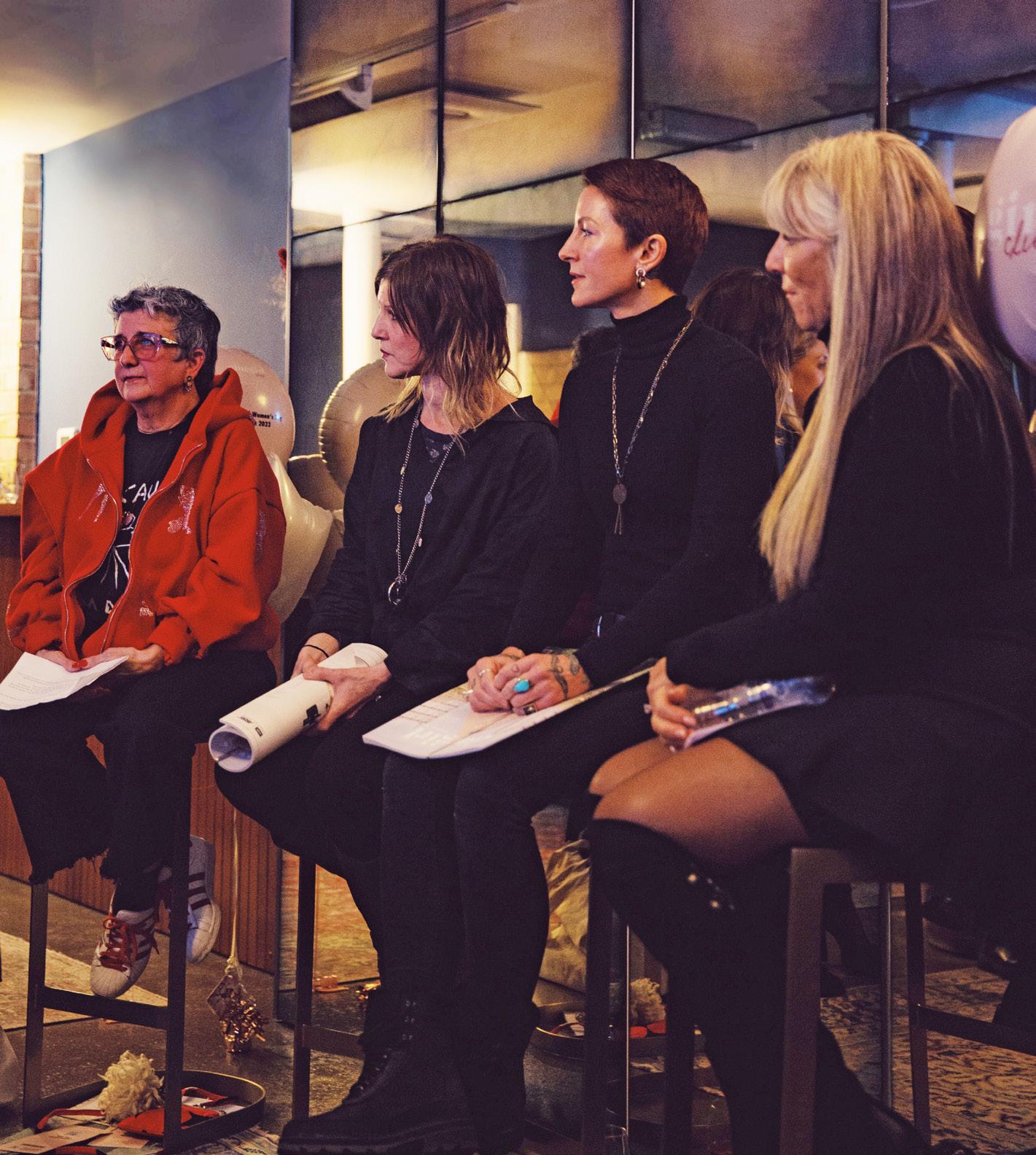
“There are only 12 fully fledged female stunt coordinator members in the BSR in the UK; and probably only six of those work full time. It’s been tricky; I hate to say this, but the guys appear to want to keep us down.”
16
– Abbi
SPOTLIGHT ON: LAUREN PROUD
Vice President of Marketing & Digital Experience
After studying marketing at Pennsylvania State University, Lauren spent 7 years in marketing and communications roles in travel and airline businesses, including British Airways, before joining ROSCO as a Marketing Manager in 2014. Since then, she has risen through the company ranks all the way to the Executive Team. She is the first woman on the team in their 113 year history.
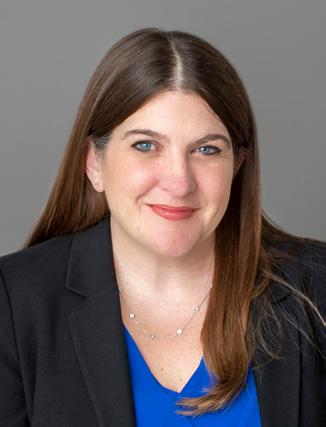
After breaking the glass ceiling herself, championing female talent both within the company and in the film and television industry, is a subject both dear to her heart and important in her strategy for the brand.
We (virtually) sat down with Lauren in her home for a chat about ambition and giving back.
How did you start working at a film lighting company?
I saw a job posting for a Marketing Manager position with skills and experience listed that were a perfect fit. It was a bonus that I was so interested in the products and ended up falling in love with the industry. I’m a creative at heart, so it was very exciting to me that Rosco was a company full of solutions for creative people.
In your 8 years at ROSCO, what would you say are your achievement highlights?
My proudest accomplishments are the strong marketing team I have built, the launch of the hugely popular DMG DASH pocket light during the pandemic, and the development of our successful Ambassador Program. When I started at Rosco, we were really still seen as a consumables company with a few good LED products under our belt, like LitePad. In the last eight years, there’s been a significant shift in innovation and our brand. I believe our customers now see us as a more techfocused company with industry-leading solutions.
Why is it important to you to support women in the industry? So often in this industry, I walk into a room and I am the only woman, or one of just a few. There’s so much to be gained by bringing more women and more diversity into the room. We bring different perspectives, different outlooks, and different experiences. We truly build each other up.
What are your future plans?
I plan for Rosco to build on the type of work that we’ve been doing. We’ve introduced ‘Ladies Night Out’ at a few trade shows and festivals, where I’ve seen true appreciation for the fact that Rosco simply created the space to come together and encourage gender balance, networking, and providing space for people whose voices have been marginalised. I’m excited for Rosco to be hosting an event for the Local 600 Black Women for the second year in a row, and am thrilled to see the career trajectories of our Ambassadors. I hope to coach and mentor young women who are starting their careers or simply trying to figure out how to ‘make it all work’. We need to build, create, and find opportunities for each other.
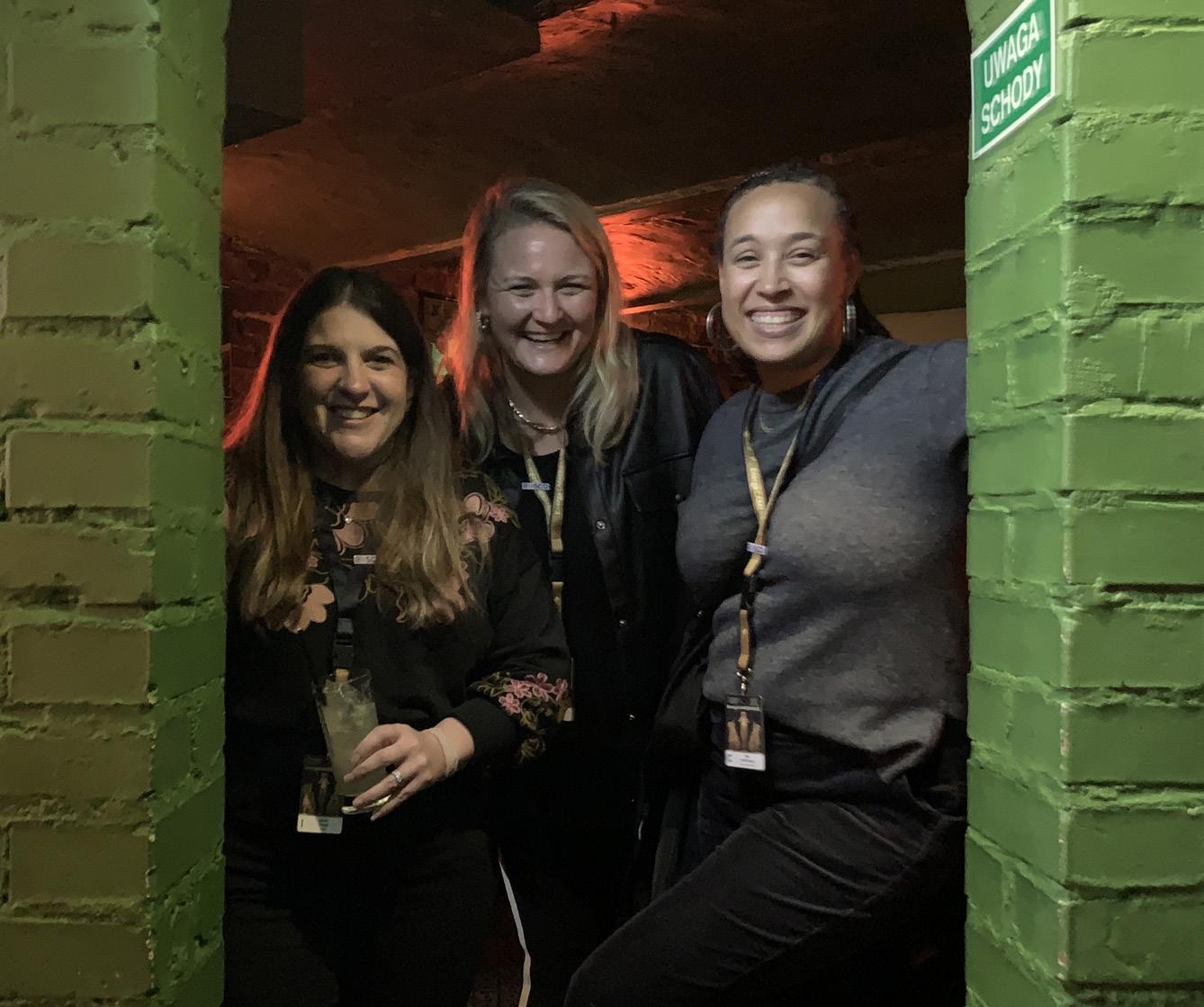
How do you think this proactive strategy has changed the way women in the industry see Rosco?
I hope that women see Rosco as an organisation that is helping create opportunities, whether on the manufacturer side, or on the filmmaker side. For our customers, we are educating, supporting organisations, and bringing people together. At Rosco, we have had an uptick in the number of women joining the company. We have amazing male colleagues and leaders who are supportive of our efforts, which is critical to making it work.
How have you managed balancing being ambitious in your career and being a parent?
I truly believe that the best mom is a happy mom. I’m lucky that I absolutely love my job and have a supportive husband and very understanding kids. I try to strike the best balance that I can, but also know that sometimes there are sacrifices that need to happen, either at home or at work, and try to give myself some grace when there’s disappointment on either side.
Do you have advice for women starting their careers?
My best advice is to be clear about your wants and needs for your career, and make sure you tell the people who can help you make it happen. Get out there, don’t be afraid to approach people you’ve never met, and build a network of people who will lift you up.
It’s going to be hard to pick one, but who would you pick as a rising star and one to watch?
At our Ladies Night at Camerimage last year, I had the pleasure of meeting Mia Cioffi Henry, a Local 600 Cinematographer. We had an incredible conversation about life, work, and motherhood. Her work as an educator and cinematographer is so impressive, as is her presence and I am excited to see her future successes. n
Sponsored feature 17
Lauren Proud, Caroline Rault and Mia Cioffi Henry at ROSCO’s Ladies Night at EnergaCamerimage 2022
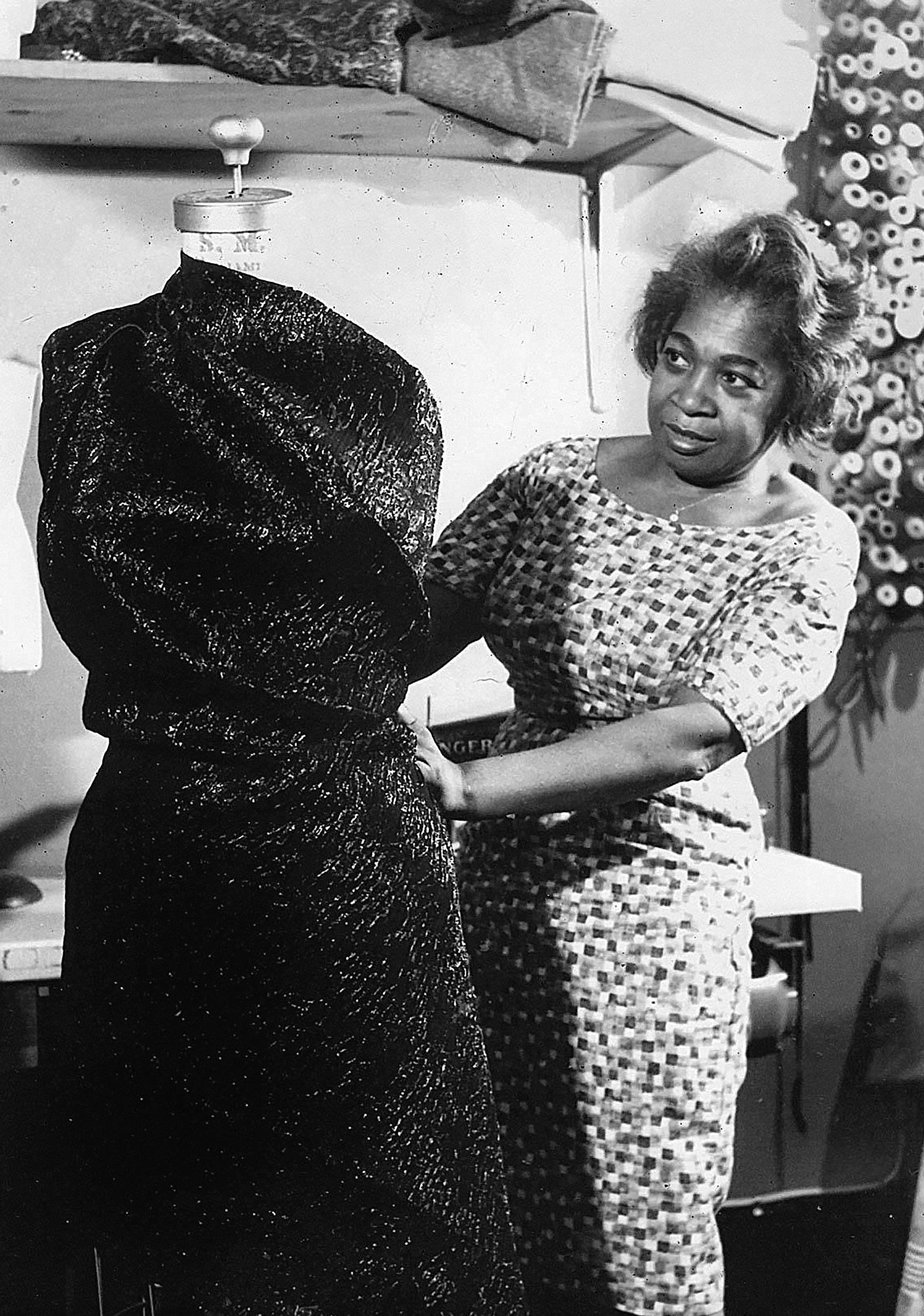
18
Zelda Wynn Valdes is credited with designing the original Playboy Bunny waitress costumes
ZELDA WYNN VALDES
You know her costumes, but do you know her name?
by Emma Carys
Whether its Regina George, Elle Woods or Bridget Jones, the film industry has included the iconic playboy bunny costume in its movies time and time again, but it may shock you to discover that this iconic look was commissioned to designer Zelda Wynn Valdes who was racially segregated and hidden away from the white clients at the boutique in which she worked. Her clothes, however, ended up being anything but hidden; they have been seen and celebrated on screens, stages, and magazines globally.
When Hugh Hefner decided to open a nightclub in Chicago in 1960, a silk negligee was his uniform of choice for the women who would work for him. It wasn’t until his business partner Victor Lownes insisted that waitresses should dress as bunnies to match their publication, that Valdes was contracted to create the bodysuits and bunny ears which would become symbolic of American pop culture and the first commercial uniform to be registered by the United States Patent and Trademark office. But Valdes’ relationship with the business mogul didn’t end there. Ever the businesswoman, Valdes took the opportunity she had working with Hefner to expand her business and used the nightclub as a catwalk to display her clothes in, in an event known as ‘Zelda and the Playboy’.
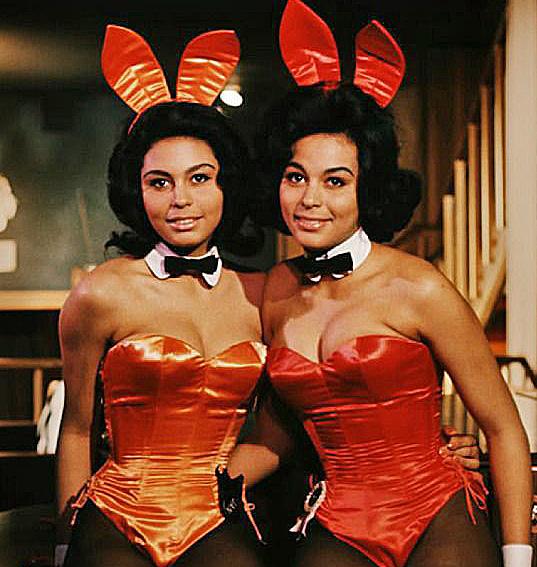
But this was by no means the only highlight of her career.
In 1948 Valdes became the first African American to own a store on Broadway in Manhattan, where she not only designed for the likes of Josephine Baker, Dorothy Dandridge, and Eliza Fitzgerald, but for ordinary black women who wanted beautiful gowns from a place in which they felt welcomed. Her tailoring skills were unmatched. She did an interview telling The New York Times:
‘I have a God-given talent for making people beautiful’. She also famously only ever fitted Eliza Fitzgerald once in the 12 years she designed for the singer, because press photos were enough for the seamstress to design gowns which would fit her clients perfectly, just by looking at them.
Rightfully so, she was then appointed as the president of the National Association of Fashion and Accessory Designers, an organisation of Black designers founded by humanitarian and educator Mary McLeod Bethune. Alongside this role, she designed for the dance theatre of Harlem. Until Valdes had arrived, Black dancers spent their careers wearing tights made for white women, but this would all change when Valdes decided to dye each pair of tights to match the complexion of the woman wearing them. Many to this day, attribute Valdes for being the woman who instigated diversity in classical ballet and the reason why ballerinas can now purchase point shoes in the shade of their skin tone.
So, Zelda Wynn Valdes. Now you know her name n
19
STRAIGHT 8 The One Super 8 Cartridge No Editing Film Competition
by Carlotta Beck Peccoz
If you are in film, you just have to do a straight 8.
Get a super 8 camera and a roll of film, and you are ready. The whole concept is to shoot your film in camera, without any editing or post production. Obviously there is no sound-sync on 8mm. And, if selected, you get to see your film for the first time at the premiere. The screening for the best 8 is in Cannes during the Film Festival.
It’s hard and nerve-wracking, but it’s the most exciting and creative challenge for any film lover.
Straight 8 has no limitations in terms of genre or narrative. The straight 8 collection is a fantastic array of different approaches and unexpected ideas; a looking glass of cinema as a rich and diverse artform.
In 2020, I directed my straight 8 A Portrait, a biopic doc about Christopher Hughes, Derek Jarman’s cinematographer. Despite the battered camera and, honestly, the complete terror of having no clue of what we were filming, we made the best 8.
It has been one of the most precious experiences for me. The film did very well in other festivals too (proving that you don’t have to have a big budget to bring a worthy story to the screen) and I felt like I found a community of like-minded film lovers in the straight 8 crowd. But mostly, making a straight 8 really taught me a couple of key lessons about filmmaking in general: the best story is often closer to you than you expect, and not having full control actually allows for true creative freedom.
Founded in 1999, straight 8 is entering its 25th edition. Submissions are already open for 2024, and I’d definitely suggest that you brace yourself, find a crew and go shoot your in-camera film!
To celebrate straight 8 and its maverick filmmakers, I’ve selected 8 female-directed shorts to give you a taste of the kaleidoscope of projects that can be made.
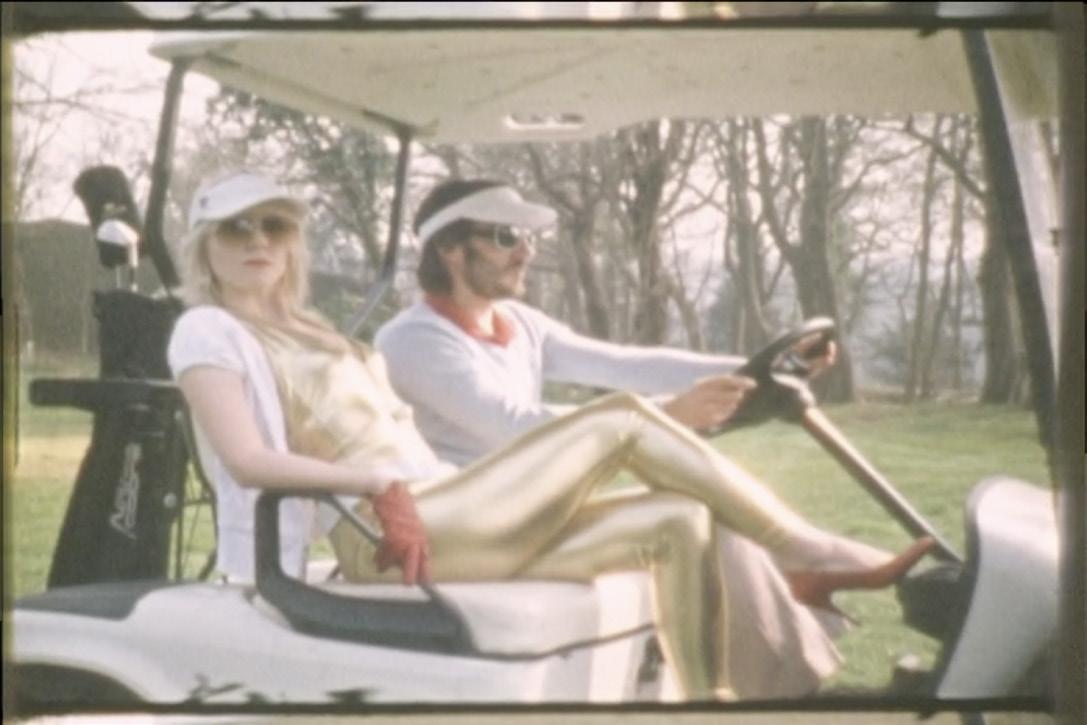
One of my all time favorites! Playfully naughty song and witty use of in camera editing and…balls.
Sadly the topic is becoming even more relevant in today’s US politics. Great tableaux and visuals accompany a poignant message about power, consent and the female body.
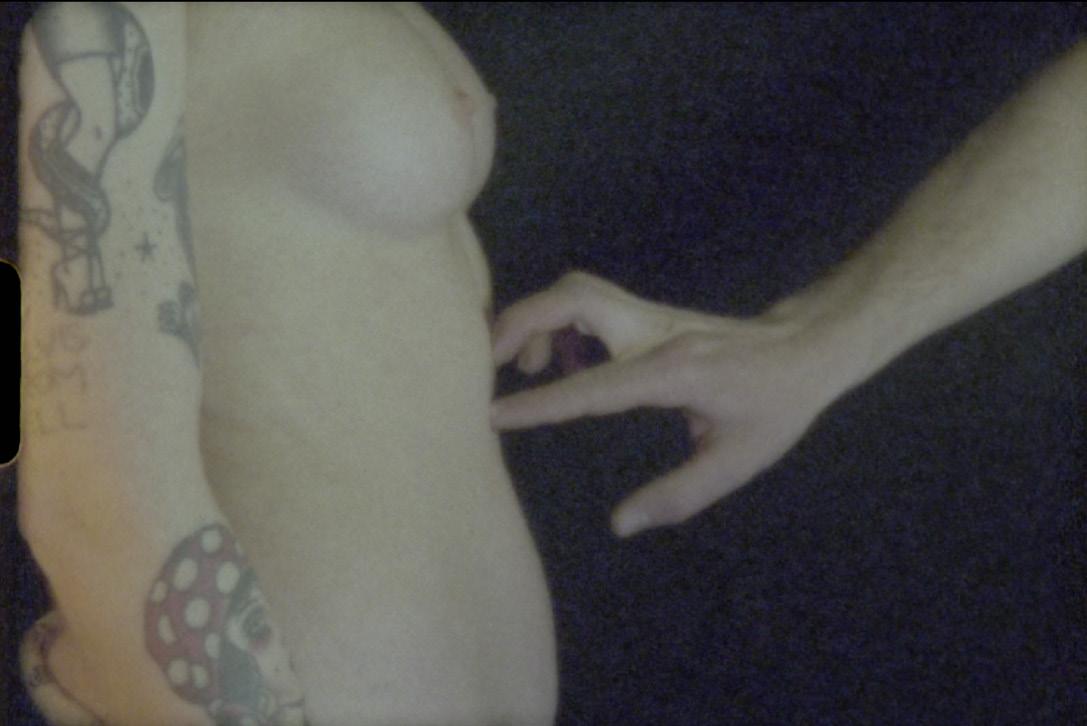 1 - Sticks & Balls by Jacqueline Wright & Alice Lowe (London, Best 8 2007)
2 - Perversion by Chelsy Mitchell & Rebecca Louise Tiernan (New York, Best 8 2017)
1 - Sticks & Balls by Jacqueline Wright & Alice Lowe (London, Best 8 2007)
2 - Perversion by Chelsy Mitchell & Rebecca Louise Tiernan (New York, Best 8 2017)
20
Check these and other amazing female-directed Straight 8 films in this Cinegirl Straight 8 showcase. Get inspired and get shooting! vimeo.com/showcase/10316006
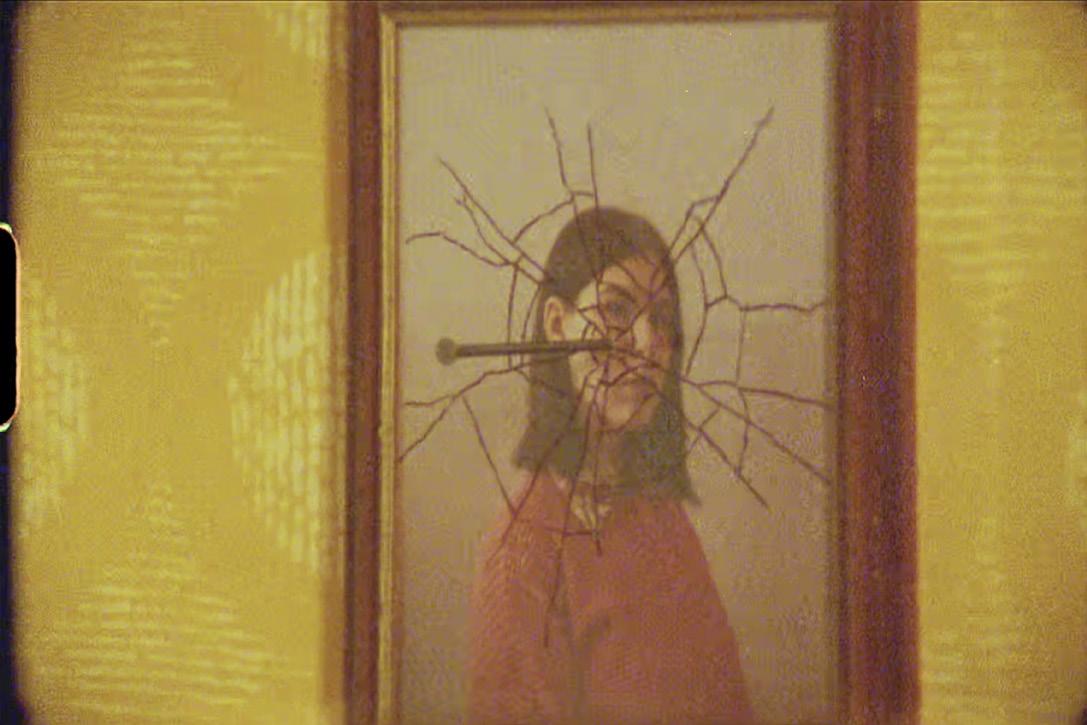
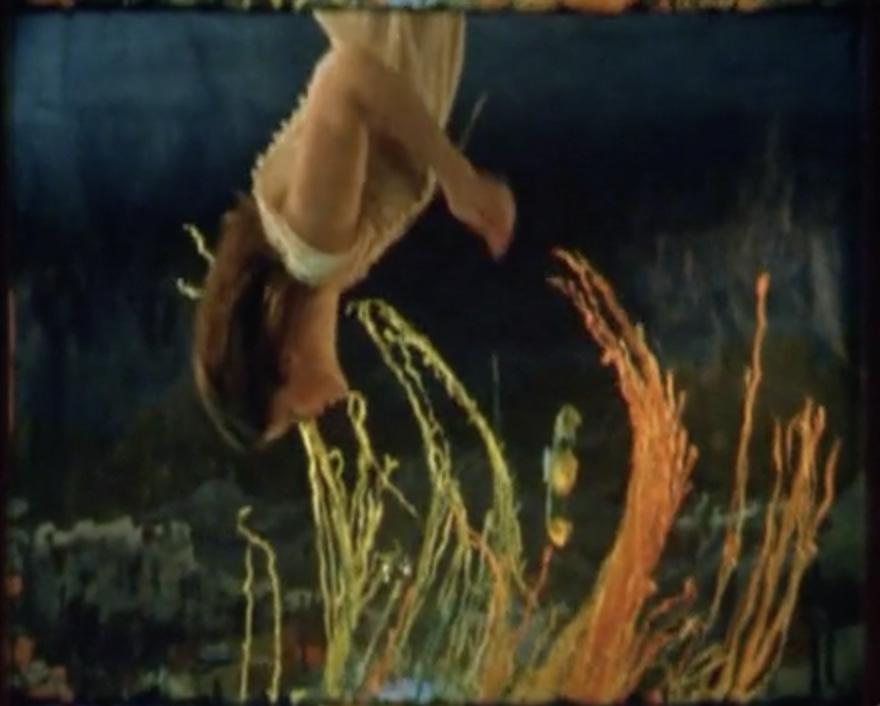
Save the dates:

May 22 - Straight 8 2023 Top 8 World Premiere - Cannes
May 27 - Straight 8 2023 Top 25 World Premiere - London BFI Southbank NFT1
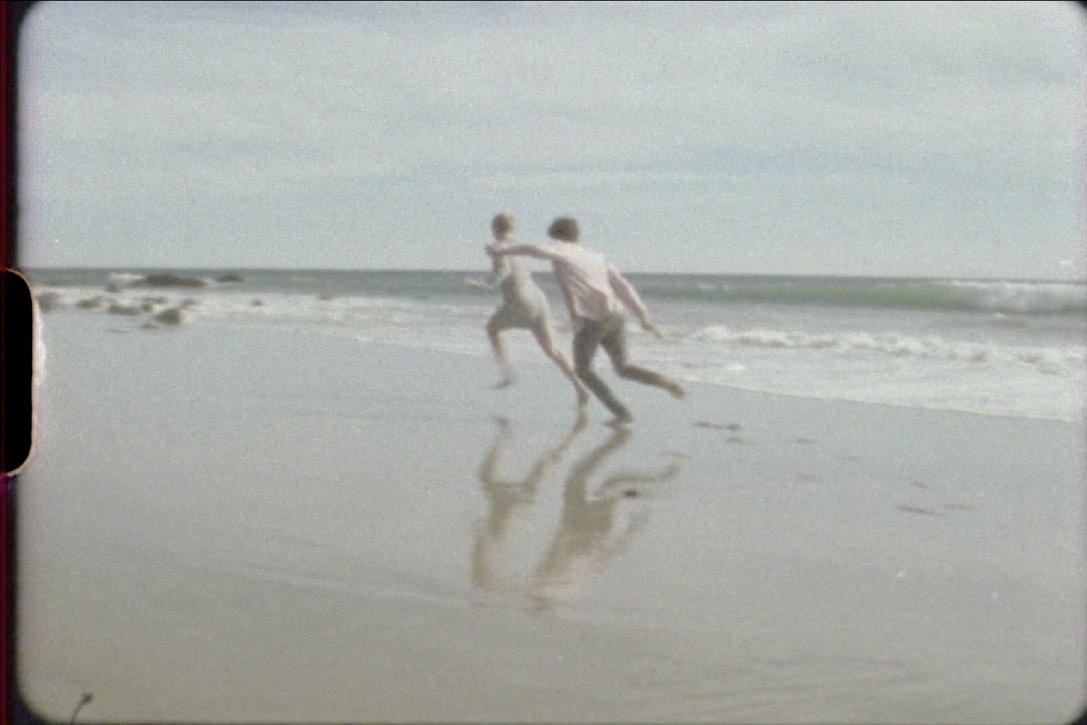
June 08 - Special Screening TBA - London BFI Southbank NFT1
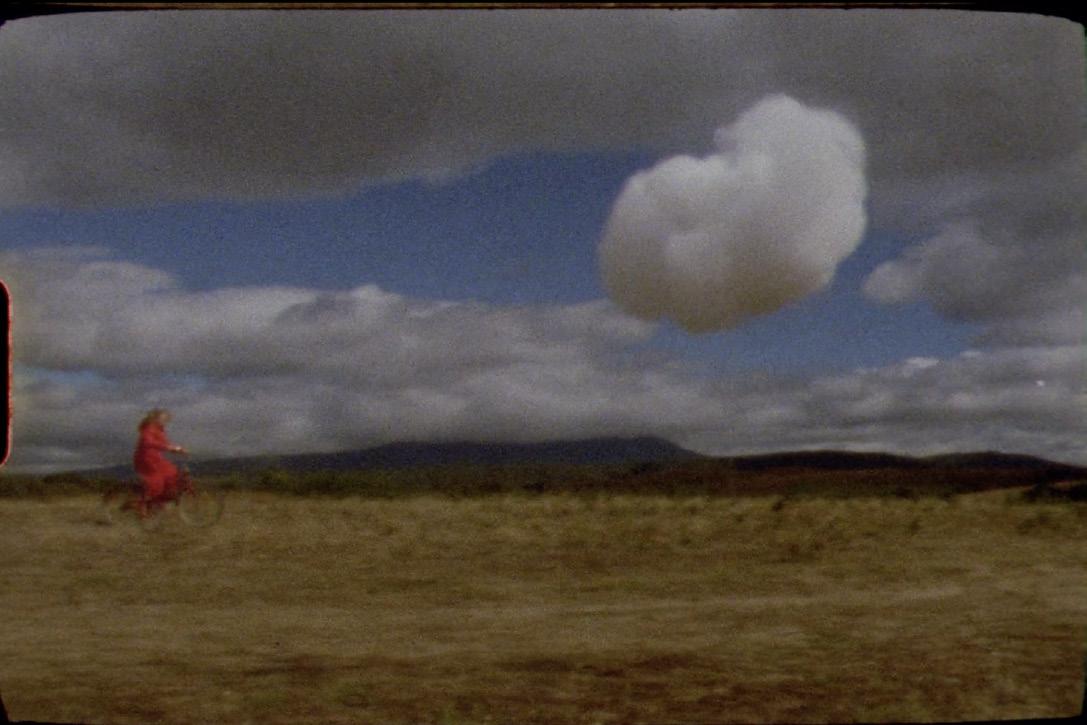
June 23 - Shootout 2023 World Premiere - Cannes
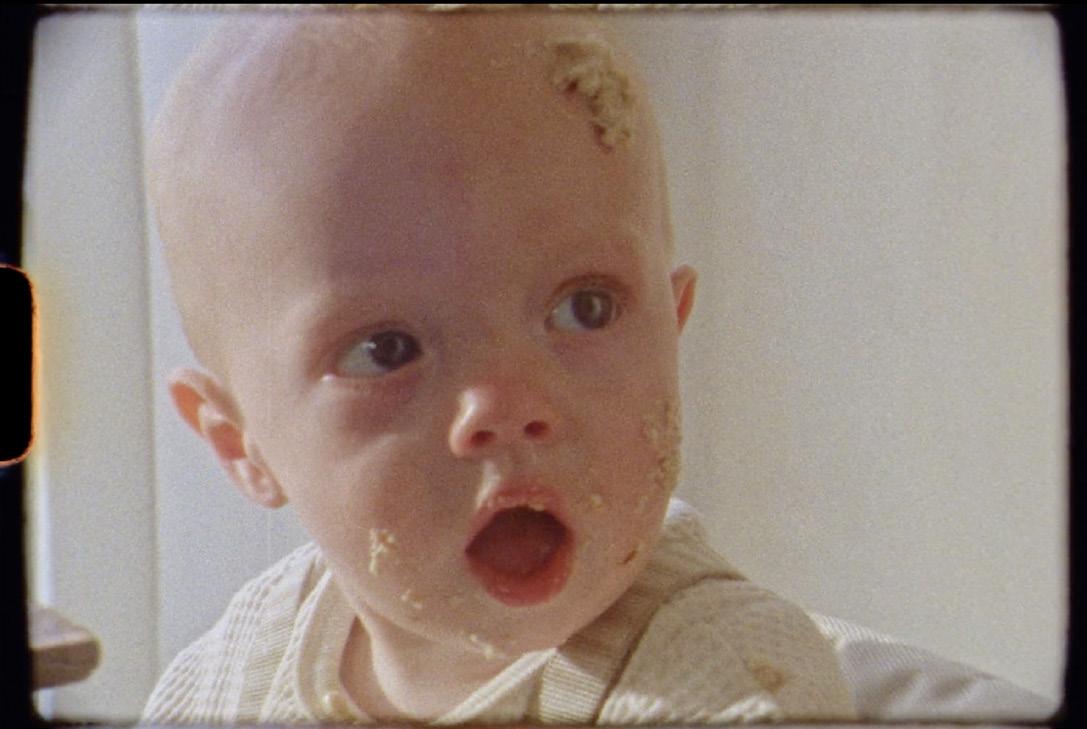
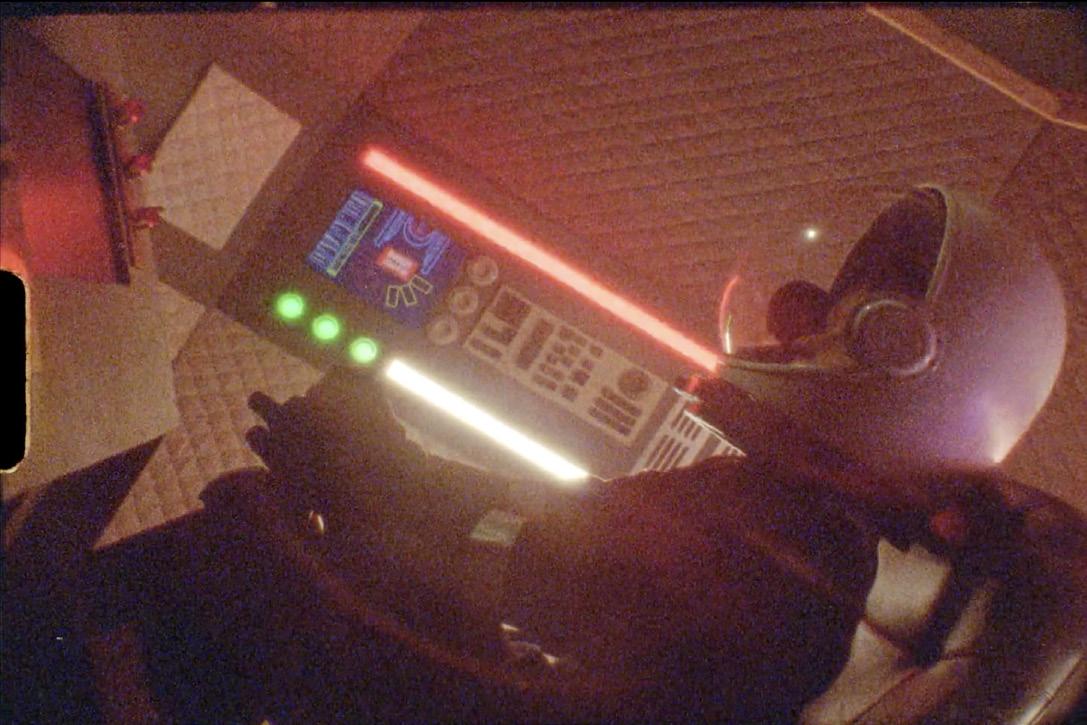
June 29 - Shootout 2023 Uk Premiere - Prince Charles Cinema, London
Bonus
3 - A Dry Heart by Sara Glaoua (Tasmania, Top 25 2021) A poetic film about a little girl and her sweet heart-cloud.
4 - In Love by Candice Nachman (Los Angeles, Best 8 2018) Not your usual love story. Unexpectedly gory genre subversion.
5 - Crumbs by Robot Chocolate / Gabriela Plačková & Robert Hloz (Prague, best 8, 2020)
Absolutely delicious stop motion animation about crumbs and a break up.
6 - Flummox by Lilly Lamia (London, Top 75 2008) Inventive use of the medium and mixed solutions for a relaxing escape from daily life.
7- Nine Thirty by Sophie King for Merman (London, Audience Award, Straight 8 Shoutout 2022) Funny comedy about parenting struggles, with the youngest and sweetest straight 8 actor ever.
8 - Alex Shipman - Eclipse 4 (London, Top 25 2020) & Inside (London, Best 8 2021)
entry in the list: Alex Shipman made twice the top selections with two different genre films, the sci-fi Eclipse 4 and the horror Inside. Very resourceful and creative.
21
THE INSPIRING STORY OF MADAM FILMS An Empowering Female-led Production Company
by Anna Halász l Photography by Hannah Drew
MADAM Films has been operating since 2013 to provide a personal, tailored and hands-on approach to UK production service, built on a foundation of deeply held production industry experience. All projects are passionately and attentively looked after from brief to delivery, meaning that client service and production expertise are continually cared for and at the top of their agenda from start to finish. Three women - Pippa Bhatt, Michelle Stapleton and Carly Stone - founded MADAM after observing an industry absence of service production led by producers experienced in working within the agency/client/director dynamic. The desire was to bring this knowledge to a flexible production service, with a collaborative and 360 degree approach. All three founders are parents, thus their aim is to create an inclusive working environment in the industry as well.
Anna Halász (AH): How did you get the idea to start MADAM Films? How do you know each other?
Carly Stone (CS): My first point is, we know each other very well. We all met at a former company called Crossroads Films, where I was the MD and Pippa was New Business Director. I was about to go off on maternity leave and we had a project come in that was quite difficult, due to the scale and longevity of it. We were introduced to Michelle to assist; she had taken some time out of the industry to focus on parenting. She produced the job for us and then ended up covering my maternity leave as well.
I’ll never forget the words Michelle said to me: You’re working so hard for someone else, why don’t you think about doing it for yourself? At that time, I was like, wow. I had always been on payroll. I had always been a part of a company and had never even thought about going out on my own, especially then, as I was about to have a baby. For me, that was a massive turning point: having a baby and starting a new company.
Michelle Stapleton (MS): It was lovely meeting the girls. I was going into an all-female-run company, which was great. I had started my first production company with a woman and at that early time in the industry, there weren’t that many women running their companies. It was amazing to be able to support them, while Carly was going off on maternity leave.
Pippa Bhatt (PB): What I remember about that time was that while Crossroads’ future was being reconsidered, we started exploring this idea that we could possibly do it better, or at least different, by starting something fresh ourselves. We would take what we felt the industry wanted in the future and build something else. The main need at that point was this sense of flexibility and ownership over our own time. My baby was around six-months-old. We knew that we wanted to have a balance between being working mums and pursuing and developing our careers, as well as being present for our families. It was not even a question of choosing between motherhood or a career; they were absolutely going to work side by side. The idea of having three partners was incredibly valuable, because it meant that if one of us needed some time off because of family, we could take that time and the workload wouldn’t just fall on one person’s shoulders. Three felt like a really strong number.
CS: When we first set up MADAM as a traditional production company, we were still working with ad agencies and pitching our directors. We started with a roster that wanted to come with us from Crossroads and continue having representation within the commercial market in the UK. After about two to three years, we pivoted the company to offer only production services. We saw a gap in the UK market for producing, >>
22
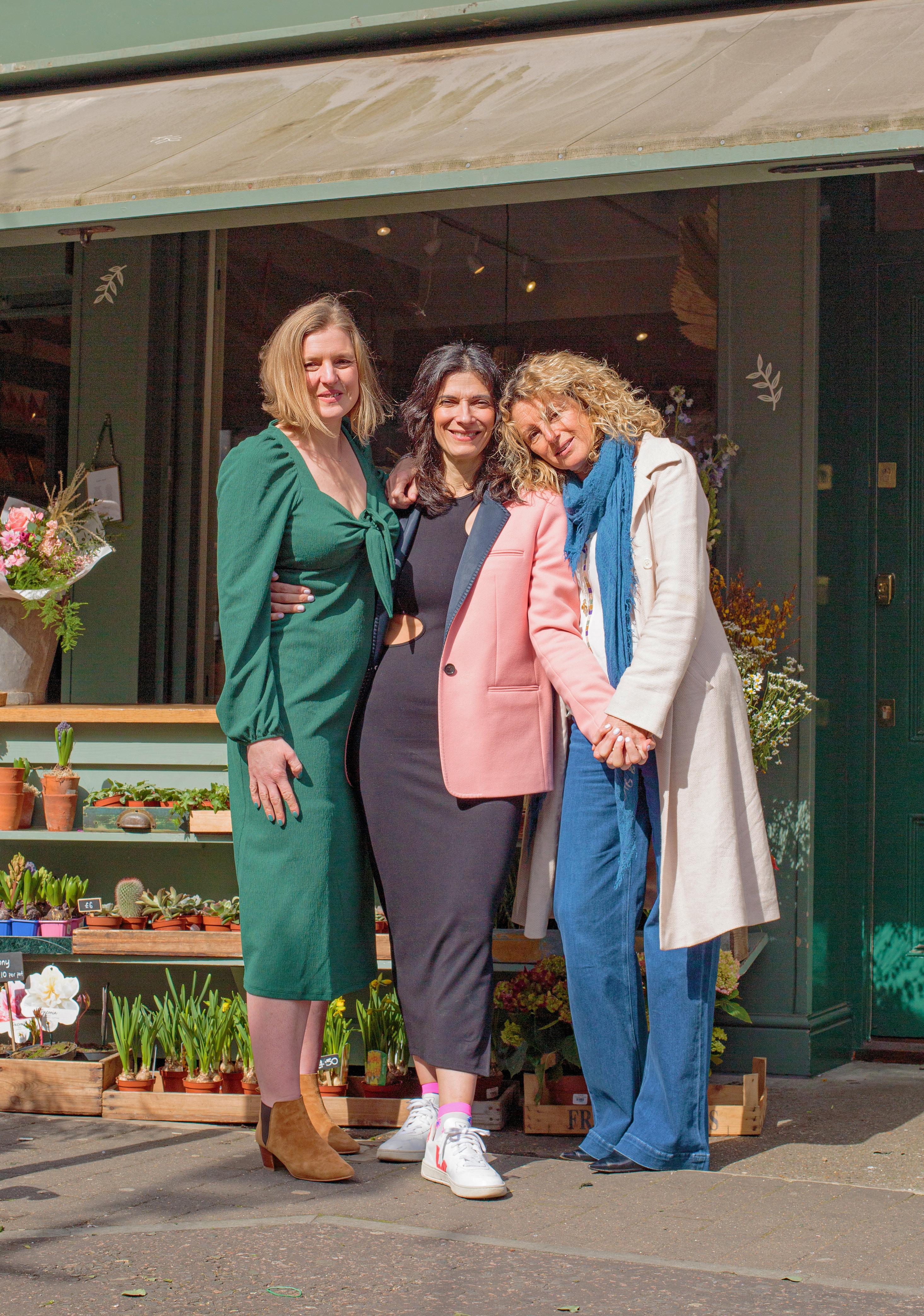 (l-r) Carly Stone, Pippa Bhatt and Michelle Stapleton
(l-r) Carly Stone, Pippa Bhatt and Michelle Stapleton
23
Location courtesy of Botanique Workshop at Exmouth Market
as opposed to creatively pitching, which was something that we just loved doing. We found that production services suited us more with regards to our families as well.
PB: It was a difficult time in the industry at that point. We needed to make a business decision about what was working and what wasn’t, and recognizing the importance of the skill set we offered to the industry. Our pivot of the business was based around the circumstances of the landscape of the industry at the time. We knew we needed to make a change, otherwise it wasn’t going to work. It wasn’t all plain sailing at the beginning.
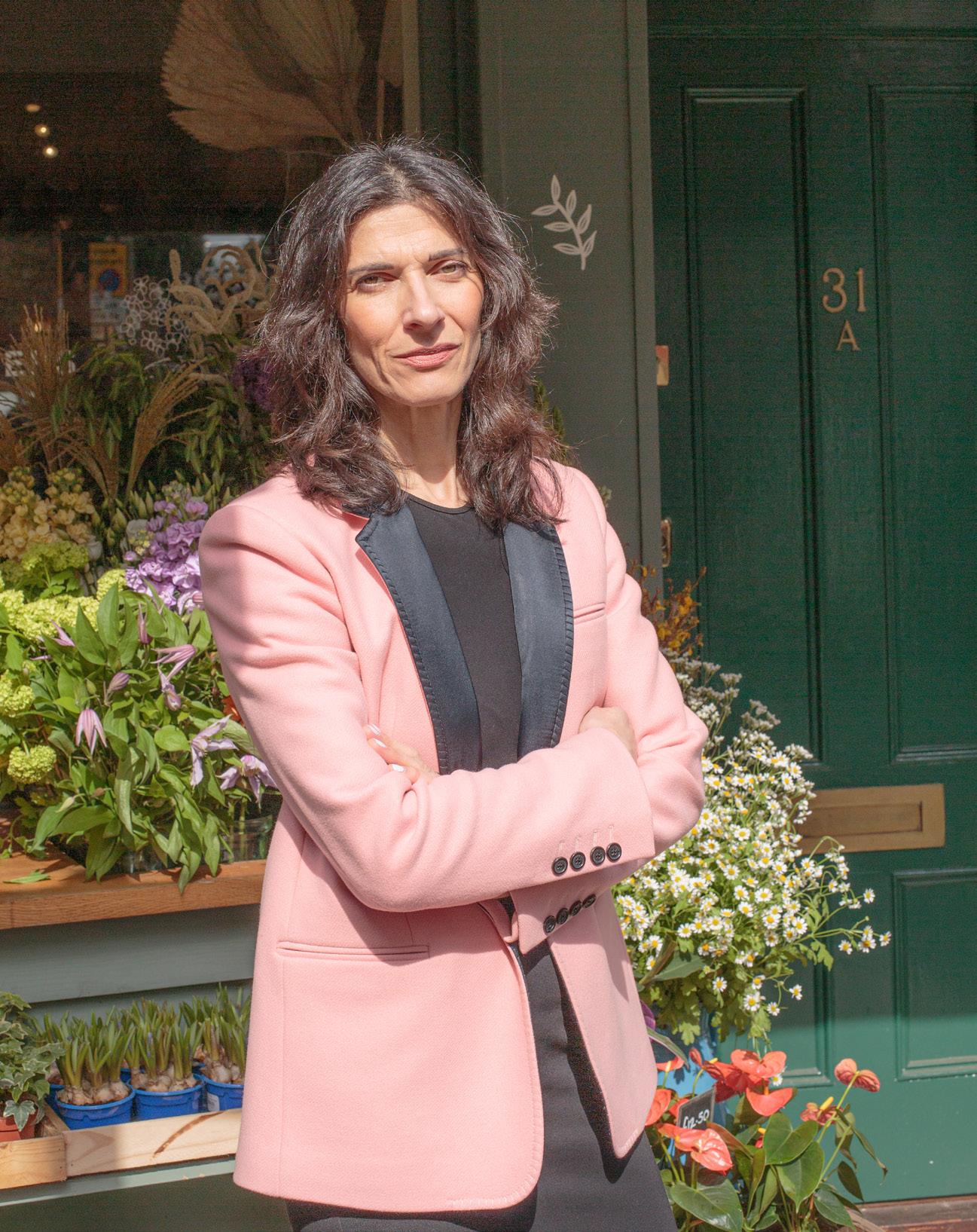
MS: We consciously steered the company and relaunched it. Our experience was showing us there was way more directing talent in the marketplace than there were scripts. So if we were just pitching directing talent, this diminished the ratio of successful pitches, which simply wasn’t sustainable for us.
PB: It was just knowing our strengths, wasn’t it?
MS: It was, yeah. As Pip was saying, it was a very definite conversation that the three of us had together. There are a lot of risks that go along with setting up a company. I had that experience before when setting up my first company at the age of 26, so my mindset was possibly a bit more aligned to it. It was important to consider that you are supporting families as well.
PB: I was a little more laissez-faire. I felt that we could definitely do it!
MS: Luckily, it did eventually take off, but we consciously made a decision to remarket and relaunch the company before it did.
CS: I think it’s a good time to bring up the name as well. We wanted a strong, female name. That was the brief. One day, Pippa texted us saying ‘What about MADAM’?
PB: It was all around that female figure who brings people together. Plus, we were three founding women.
MS: So, MADAM was born.
AH: That’s a very inspirational story. What kind of projects do you prefer working on at MADAM?
CS: For me, it’s anything with good people on board that fits our ethos. Working with a great crew is important. In our industry, there are so many personalities, characters, and egos, especially in service production. You don’t always know who you’re going to work with. We are still building those relationships with crew members across the globe. Personally, after doing product-driven commercials for 25 years, I’ve quite enjoyed working with the more content-focused, longform and documentary projects. I still love commercials, but I’ve enjoyed stepping outside of the advertising world.
MS: For me, it’s also the people we get to work with. I’ve done quite a lot of small, interview-style jobs with crew, where you are on the road at various different venues. I still love being on set and introducing people, getting different crew members working with each other and pulling different personalities together.
PB: It’s kind of twofold for me. Every time I step into a production is incredible, whether it’s an interview with one person in a room or a massive feature film-style set. We just worked with Warner Brothers doing scenes for a bigger project, but the scale of it was something special to see. But there is so much that goes on before you get to that point. When everyone is together on set and all those creative conversations are happening, that is just the pinnacle of everything. When it’s coming alive it’s really, really special. I do love big projects. I enjoy it when we’ve got a lot of crew. That also shows to me a level of expertise that I’m really proud of; that we have been entrusted to deliver that scale of production.
AH: Is there a particular reason that you mostly work on commercials and product-based content?
MS: Our careers were born out of advertising, so we started within the advertising industry. The process was then to set up a production company for commercials with a roster of
“It was not even a question of choosing between motherhood or a career; they were absolutely going to work side by side.”
– Pippa
24
Pippa Bhatt
directors. We had directors who also worked on long-form features and we had directors who we helped develop their careers from short films. I personally funded short films for a couple of directors to support them along with their careers, not just within TV dramas or features, but also their career within commercials.
AH: What is the process of finding new clients and projects? Do they contact you to produce or do you look for them?
PB: It’s a bit of both. When we first started, projects came to us by word of mouth and our peers in the industry, who recommended us to their clients as production services, because they knew that their clients would be well looked after by us. We’re part of the Production Service Network, as a UK partner. Other partners come from different global territories, and if they need to shoot in the UK, MADAM is the partner of choice for them. We also work with reps as a traditional model, particularly in the USA, where they’re selling and marketing us. We internally spend a lot of time on Google and talk to our contacts, asking them to recommend us to companies or people in their territories. Carly puts herself on a lot of panels now, building up that knowledge of MADAM.
CS: To add to that, the three of us all have years of building up our network of different global contacts. We’ve continued to nurture pre-existing relationships alongside attending festivals, running panels and interviewing crew members across digital platforms. It’s important to keep an active presence and keep telling people who we are and what we’re passionate about.
AH: That’s amazing that you have such an extended network now. What you also mentioned on your website is that it’s important for you to create a comfortable and efficient environment. In the beginning, you said that what you like about MADAM Films is that you provide flexibility to the clients. How do you achieve this?
CS: I think that that stems from our backgrounds, in terms of the level of service that our clients may want. If they just want logistics for crew coming in and shooting, whether it’s a big full-scale crew or smaller production, that option of flexibility is always there. We can tailor it, using our experience. There’s also a real part of our company culture of being able to create a nurturing environment and bringing through new talent, by getting trainees onto our sets and working with associations.
MS: We want to provide flexibility to our clients in the same way that we want to be flexible with ourselves, juggling the pressures of working and spending time with your family. We’re flexible internally as well as externally. It can be a worrying aspect of the industry for freelance crew. Heads of department in the industry don’t want to take too much time out, because they worry if they will still be at the top of someone’s list as a go-to crew member for productions. That aspect has been really important for us when we’re speaking with our crew, especially during Covid. Many people were worried about not being able to work, or that they had to be at home to look after family members. How would that impact them in the future? I personally had a lot of conversations with crew members to make sure that they knew that even if it wasn’t the right production for them at the time, they’d still be on our lists and in our minds.
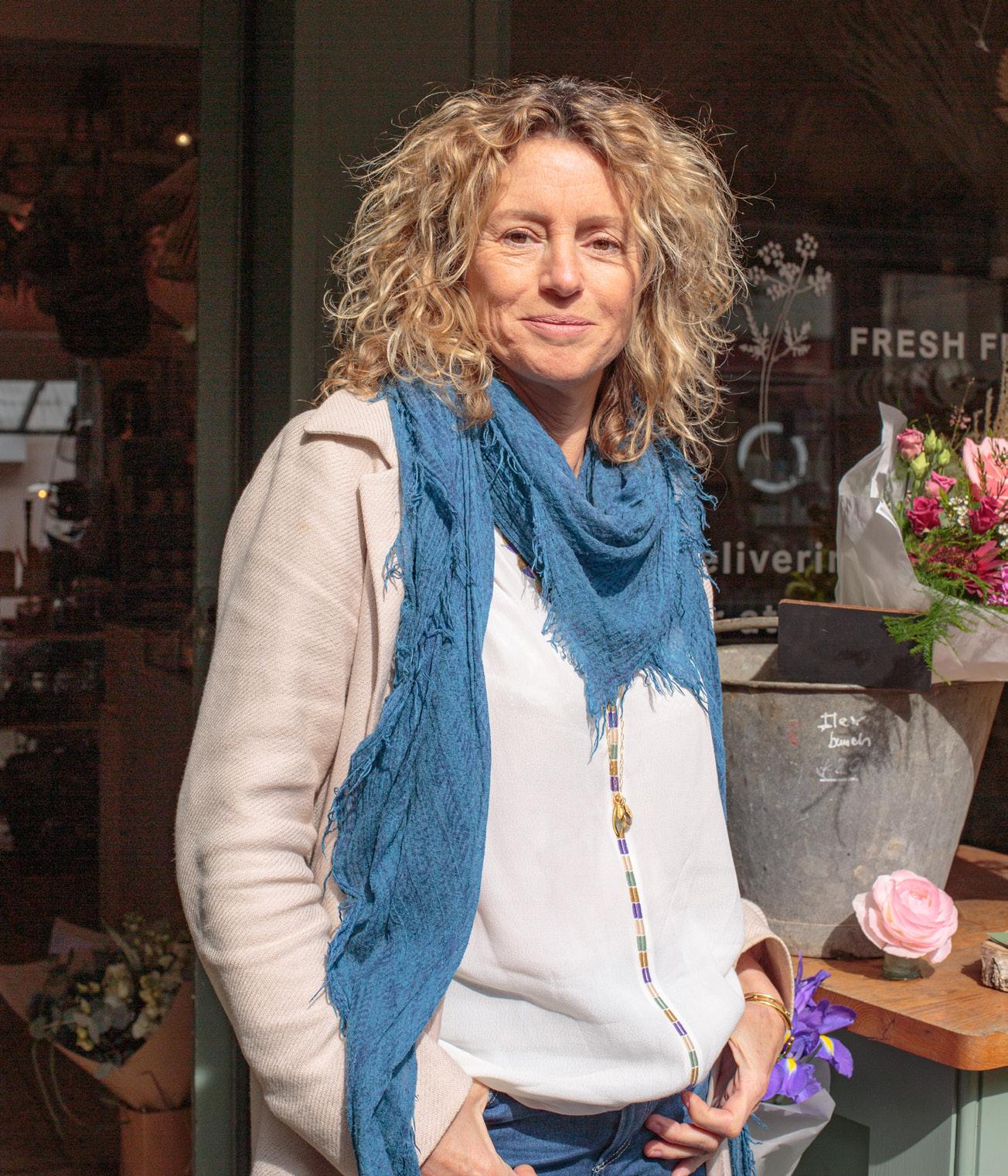
CS: On that note, actually, we had a shoot yesterday that was on a very sensitive subject. We had a predominantly female crew around the talent. One of our tech team members, it was her first shoot date back after having a baby and she was still breastfeeding. We needed to factor in her personal requirements. We gave her so much support and had a big conversation about returning to work and how she was feeling, just to make her feel as comfortable as we could. We had had our own experiences of having and leaving children at that young age to go on set. Our production manager was also six months pregnant. It was a really lovely, supportive vibe that we were looking after our crew and making sure that they felt comfortable and cared for on set.
PB: We put so much thought that goes into selecting which crew members for which job. We’ve invested quite a lot of time in putting together our company policies, which give very clear guidelines and statements about how we work as a company, what our expectations are, and what others’ expectations of us should be. I feel very proud of what we’re doing about making sure we and our workforce enjoy being a part of this company.
AH: That’s really important. To dive into other paths, I’m going to ask about other issues that are currently changing in the industry. Do you think that diversity and inclusion is changing in the creative industries? How do you support this change at MADAM Films?
CS: I definitely think it’s changing and there are so many more associations in the commercials market. You’ve got the APA [Advertising Producers Association] now, which is a union representative and they’ve been on a path for about the last two years to build up a resource guide, helping young people get into the market and doing mentorship schemes. You also have The Production Guild and Film London. They’ve kicked off with their D&I division, which is also helping to place talent >>
25
Michelle Stapleton
from all backgrounds into permanent positions. I believe that the situation is changing. There’s the opportunity for permanent, trainee and freelance positions across a real variety of associations.
MS: Personally, I’ve been in this industry since I was 17. I have seen a change. There were a lot of turning points before. There was a period in the feature film industry where a number of A-list people started talking out about certain behaviour that was going on at that time. From that moment, it started a movement that never ever got put under the carpet again, as it had been for so many years before. Once that movement started, it gained momentum. Importantly, a lot of renown male voices came to that platform supporting it in the right way. Then, bigger companies were seen to support and make the change. The flow continued and I think from that process, it’s spread out into all different industries, not just the entertainment industry. As Carly says, there are more associations out in the workplace now, and these issues are actually changing. There is always more that can be done.
I was supporting my producers over 20 years ago with full maternity leave. That was just unheard of at the time and I know that it still isn’t really managed today. Although, there is more now than there was, there are always areas that can be improved upon. It does feel that there is proper momentum now and that’s never ever going to go back. We can only go forward now.
CS: A lot of the focus has been on inclusivity within gender, race, ethnic backgrounds, etc. I think what is still lacking in our industry, which I’d like to see more at the forefront, are conversations and associations about disability. I think that’s not really coming through at the moment, certainly not in the commercials market. I believe that in the feature films market there are more associations that you can work with to make your employment selection and covering everyone’s backgrounds to make sure that everyone is having a fair chance at positions.
PB: Creative Equals just launched their new action plan around creating more opportunities for disabled talent in the workplace. This is specifically focused at brands and ad agencies, but as a model and as a starting point, it’s a great place to look to see how that can be incorporated across other sectors.
AH: I’m curious, what is currently the biggest challenge in the creative industries?
CS: Thankfully, it’s not Covid anymore. I think right now, in our industry, it’s the lack of work. We’ve gone from 2021, where there was an absolute abundance of work, people couldn’t keep up and there was no crew available. To now, March 2023, lots and lots of people are not working and there’s no demand at the moment. That is a big challenge. Our association, the APA, has acknowledged this. We’ve been through three recessions throughout our careers, between the three of us. I think for the UK, we’ve got incredible crews, amazing facilities, and wonderful locations. The government even announced that the film tax relief is going to be increased. That’s also opening the doors. However, I think the certainty in the commercial market has slowed down a bit.
PB: I think the whole global economy is pretty shaky right now, so I don’t think it’s an easy year for short-form, but I’m sure it
will all come through. We know that production in long-form in the UK has been really buoyant for a very long time, and it still seems to be an industry that’s doing quite well.
MS: My biggest personal challenge at the moment is to learn Spanish as quickly as possible, because we’ve just opened up an office here in Menorca!
AH: That’s great, overall! You already mentioned a couple of things that makes MADAM Film special, but compared to other production companies, describe one aspect that makes MADAM Films stand out.
CS: We love it, we breathe it and we care. And that is hopefully reflected in everything about MADAM, from our image to our productions, and to what our clients say.
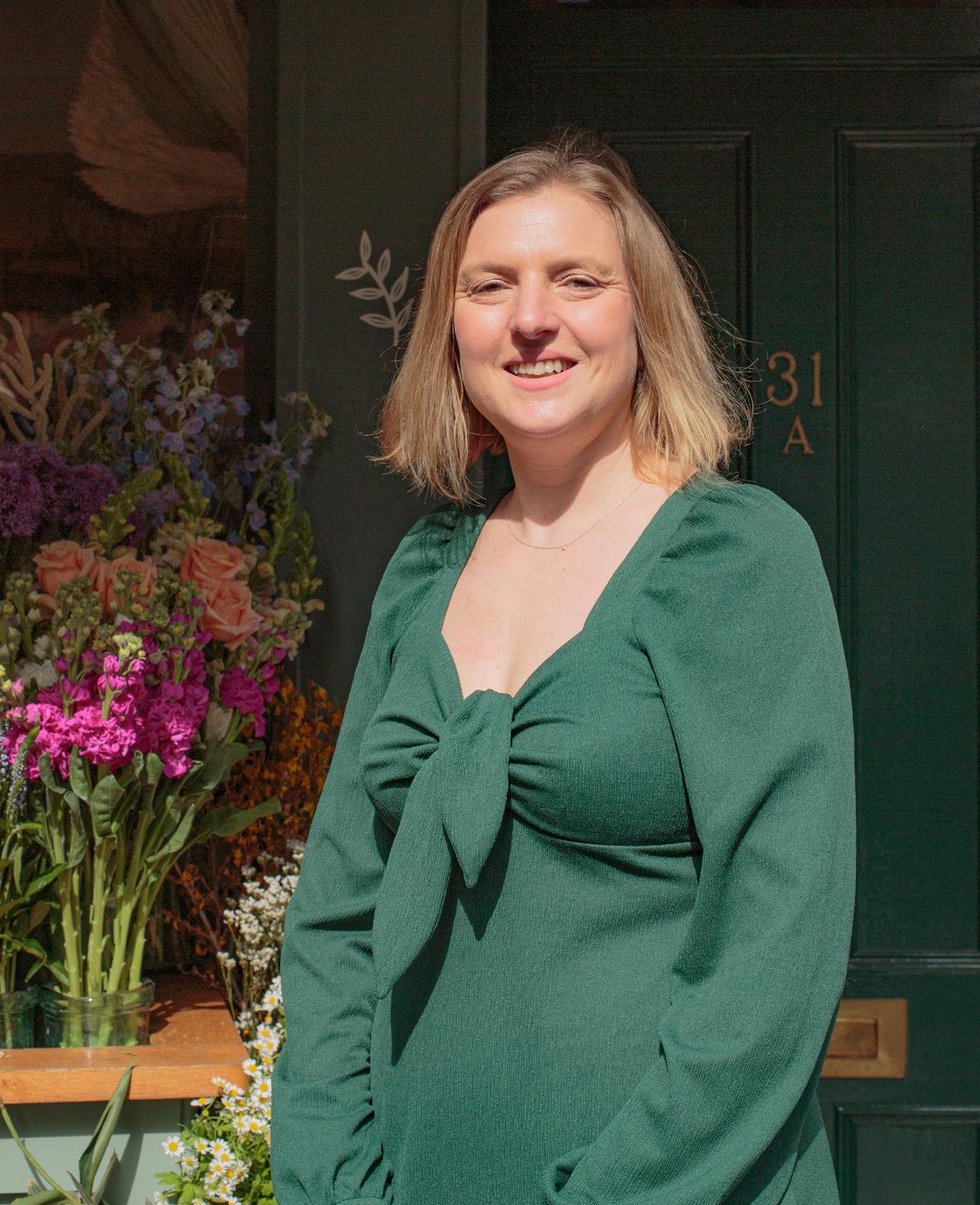
PB: We want to do the best job we can, every time. I asked my assistant what makes MADAM special, because we could probably talk about it for hours between the three of us. She said that it was that we stand by our values and we’re always working on evaluating that progress and trying to continue to be better. And I really love that, because I think that it encompasses everything. Moreover, she spoke about it being a collaborative space. We’re a small company; there are three partners and currently one full time employee. It gives a chance for everybody to have a voice and hear everything.
MS: I love the fact that we have been supportive to each other’s families, whether that’s personally or within the workplace. We’ve had our siblings, children and family on set with us, and that’s been fantastic to be able to share that experience. I feel it is incredibly unique and special. It goes one step further than just a business. It also supports the core values and the care that we have. n
26
Carly Stone
CVP/ARRI OPERATING WORKSHOP
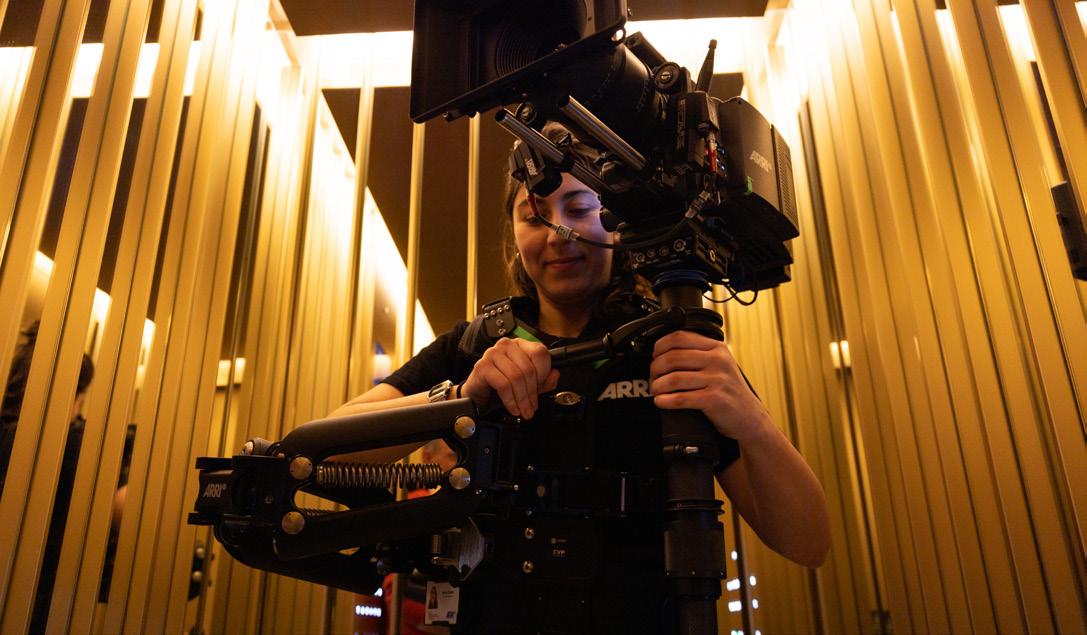
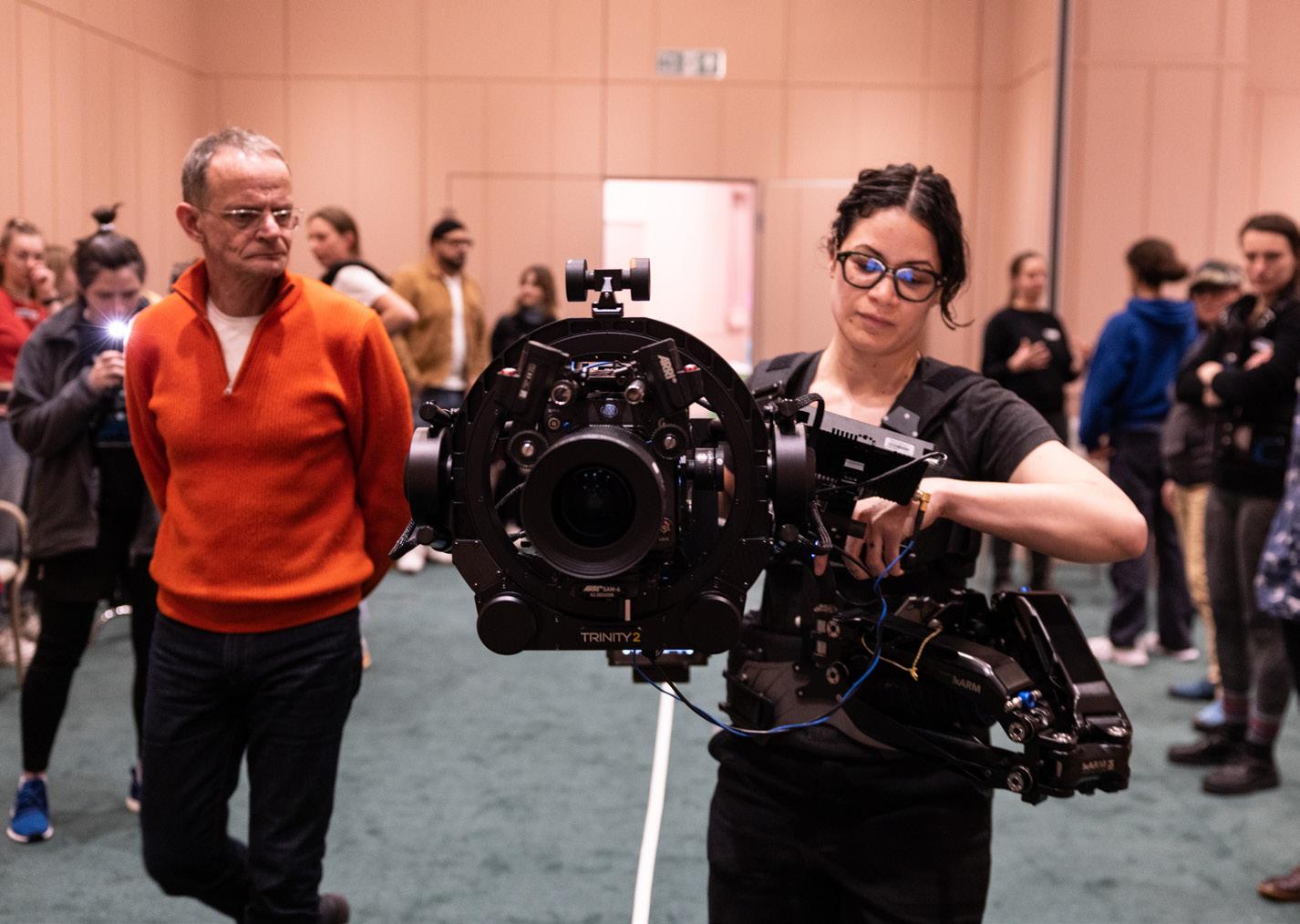
ARRI’s Camera Stabilizer Systems (CSS) offer both directors and cinematographers new angles and storytelling options. For more than 20 years, the original ARTEMIS has been a reliable tool, trusted by the industry. Now the ARTEMIS 2 continues that success story and expands on it through new features and a simple upgrade path to TRINITY 2. Between them, these two rigs cover all applications and on-set requirements, from feature films and TV series to commercials and live broadcasts.
With ARRI’s second generation of TRINITY and ARTEMIS, camera movement, connectivity, power management, user interface, and balance options are all enhanced. This new modular system offers a quick and easy upgrade by transforming the purely mechanical ARTEMIS 2 into the hybrid TRINITY 2, which adds electronic stabilisation for an even more comprehensive range of movements and angles.
Straight off the back of the BSC Expo, ARRI organised a womenonly workshop for a group of camera operators. This diverse group came together to get hands-on with the new TRINITY 2 and ARTEMIS 2. Stemming from varied backgrounds and experiences, the participants heard first-hand from CSS Product Manager Curt Schaller about the best operating practices and how to maintain one’s own personal well-being as a successful operator.
Some participants from the workshop shared their experiences. Iona Tărchilă, a Steadicam and TRINITY operator who assisted with the workshop commented: ‘With this event and future woman-only workshops at ARRI, I want to empower all people working in all genres to start operating the ARTEMIS 2 and TRINITY 2. From a physical point of view, I want to deconstruct the idea that only one type of body can operate such a system. By nature, women have wider hips, so the vests sit better, and our centre of gravity is nearer to the ground. From a creative point of view, every person has their own stories to tell because all of our experiences are different. I love the sensitive way LGBTQIA+ people approach stories, the respect they have for the ARTEMIS and TRINITY tools, and their behaviour and appearance on set.’ Abby Dowsett, operator from the UK mentioned ‘I loved the workshop. It proved to be a safe space to learn and develop my Steadicam skills as a beginner without fear of judgement’. Marylou, an operator from France, was happy to be included in the workshop. ‘I am a French Steadicam operator working mainly in Paris. I have operated for a year now and am still a junior. However, I’ve been surrounded by the most excellent French operators. I also had the good fortune to meet Curt who invited me to the TRINITY 2 workshop’. She continued ‘The best memory I’ll keep is the solidarity that all the women offered each other. Organising a 100% women’s workshop was a great idea to help each other and give each other advice. Having the opportunity to use TRINITY 2 and ARTEMIS 2, which are fantastic tools, in such an intimate environment was also very beneficial’.
ARRI would like to thank everyone for participating in the workshop. We look forward to more opportunities for sharing knowledge and experiences with the filmmaking community. n

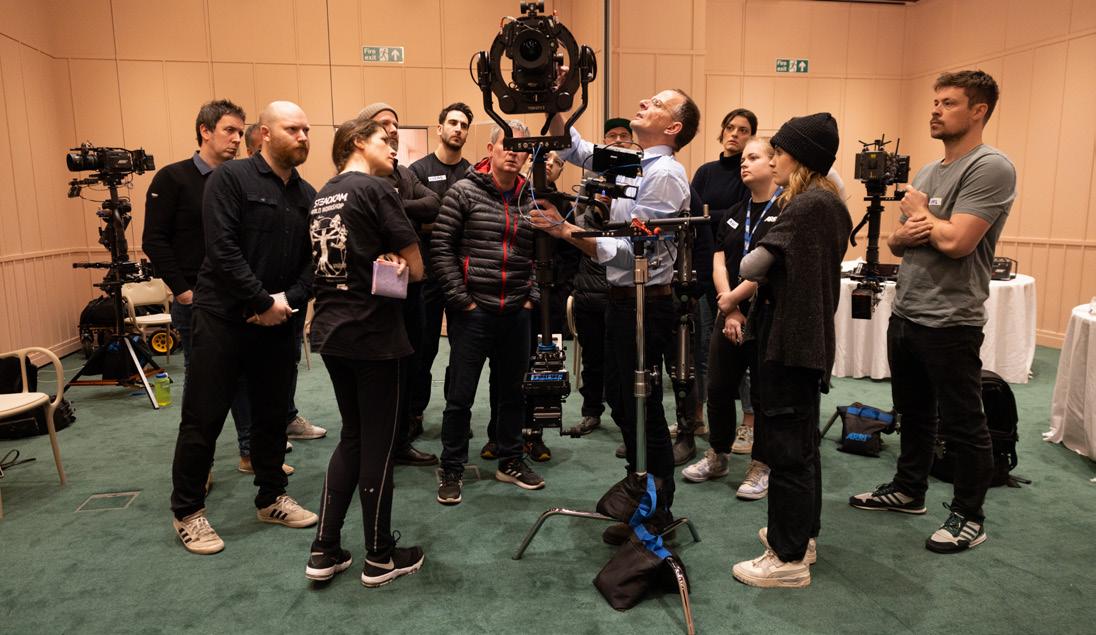
Sponsored feature 27
HUMAN RIGHTS WATCH FILM FESTIVAL
by Lauren Devine
The Human Rights Watch Film Festival (HRWFF) bears witness to human rights violations in direct storytelling and exposé form, creating an invaluable platform for individuals on both sides of the camera. The HRWFF’s 2023 program investigates pressing human rights abuses from some of the most difficult-to-access parts of the world, combining meticulous investigative filmmaking, determined film subjects and urgent stories in a series of timely documentaries shining a light on vulnerable communities and damning injustices, encouraging audiences to engage with and advocate for human rights wherever they are abused, oppressed, or denied altogether. Here are two films that stood out as highlights.
Seven Winters in Tehran
Directed by Steffi
Niederzoll
A masterfully paced story told with immense sensitivity, director Steffi Niederzoll gains unprecedented access to examine the case of nineteen-year-old Reyhaneh Jabbari from her arrest and prolonged incarceration through to her trial and death sentence, after the man who attempted to rape her died from injuries inflicted in self defense.
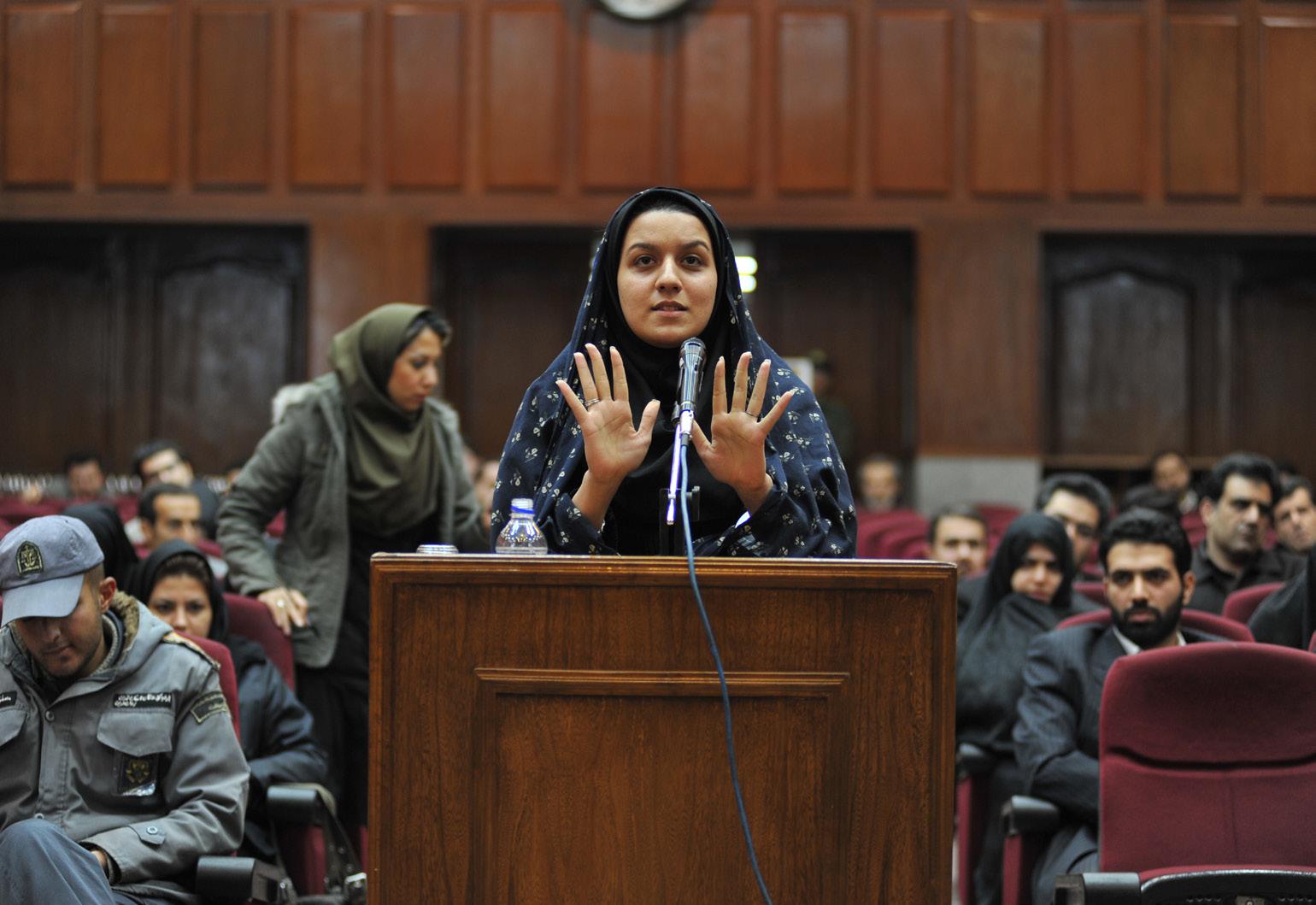
Featuring secretly obtained video and audio recordings from inside Iran, the film provides a nuanced insight into the misogyny that pervades the height of Iranian civil society and the dangers facing those who seek to challenge these power structures. Niederzoll documents the Jabbari family’s fraught struggles with the Iranian justice system as they campaign for Reyhaneh to be released, with this hard-hitting investigative journey finding heart in heartfelt tributes from Reyhanyeh’s family and fellow inmates who recall her strength in the face of intense coercion and abuse.
Reyhaneh’s voice is the film’s emotional compass, incorporated via recordings of phone calls and incendiary letters Reyhaneh wrote during her incarceration, read in voice over by Holy Spider actress Zar Amir Ebrahimi. In exchange for mercy Reyhaneh was pressured to absolve her attacker; she refused, and paid the ultimate price at the hands of laws under which Iranian women can rarely hope to win: ‘If you resist, you’re guilty. If you defend yourself, you’re guilty. If you comply, you’re also guilty’. A searing indictment of the violence so steadfastly woven into the fabric of everyday life for Iranian women, the hope of Seven Winters in Tehran lies in the communities inspired by Reyhaneh’s story to fight for those women in Iran who remain incarcerated.
Koromousso, Big Sister
Directed by
Habibata Ouarme and Jim Donovan
According to UNICEF, over 200 million women and girls have undergone female genital cutting (FGC) across three continents, with a projected increase of 86 million more cases by 2030. Opening the film with these statistics communicates the stakes for co-director Habibata Ouarme, an FGC victim campaigning for the reconstructive surgical procedure pursued by some women to be made available in Canada. The causedriven focus of this film is invigorated by the candour of subjects who recall their own experiences of FGC. In describing their ongoing traumas and journeys towards reclaiming their identities, Koromousso, Big Sister challenges cultural taboos surrounding female sexuality, and highlights the ongoing fight to oppose FGC. n
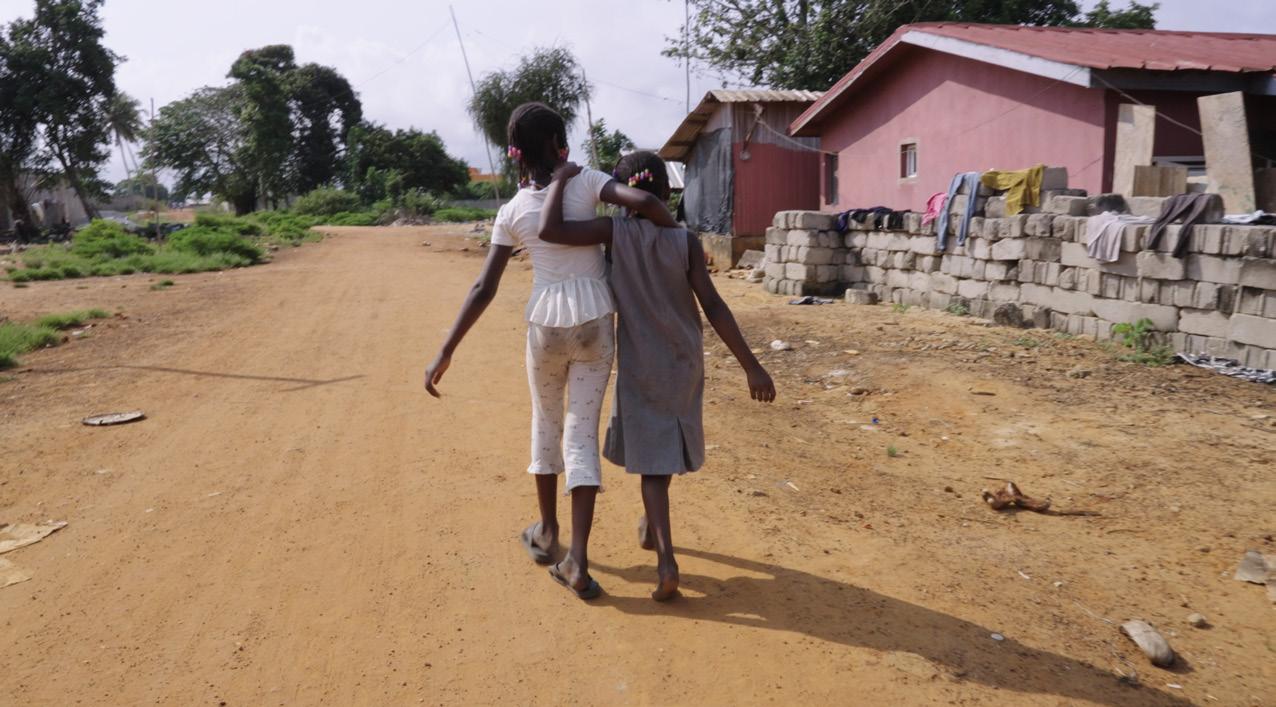 Seven Winters in Tehran
Seven Winters in Tehran
28
Koromousso, Big Sister
ALL EYES ON ESEA!
by Caroline Hodge
With the success of Everything Everywhere All at Once, it cannot be denied that East and South East Asian (ESEA) actors are having their moment in the spotlight. But ESEAs are more than just actors or directors or fight choreographers; they can be found in every department throughout the media industry. BEAM Network is helping to turn that ray of light on British ESEAs working behind the scenes by creating a supportive community that uplifts everyone.
ESEAs are one of the smallest minorities involved in the industry. Project Diamond’s data in 2021 showed that the percentage of ESEAs working off screen in television was redacted due to how small the sample size was. This is the drive for why BEAM Network was founded - to support those who feel isolated, unrepresented and who wanted to connect with others who shared their unique experience.
BEAM Network is now turning 6 years old and continues to grow. We now have over 1600 members, running online and in-person events like casual meet-ups, industry networking events, workshops and mentoring. When asked why more ESEA are not employed on relevant projects, the response is often ‘we do not know how to find them’. In response, BEAM Network
created a database that highlights to employers ESEAs with film and television experiences. Recently with the support of the Film & TV Charity, we celebrated Lunar New Year by hosting a first of its kind industry networking event specifically promoting ESEAs to UK television employers. In addition, we encourage cooperation and mentoring where there might be a skills difference, narrowing any perceived skills gap.
While our meet-ups remain popular, we are hoping to expand and diversify our events even further. If you would like to assist or invite BEAM Network to one of your events, or if you feel you could give some of your time for mentoring, or offer a one-off workshop, please reach out via email: beamedianetwork@gmail.com.
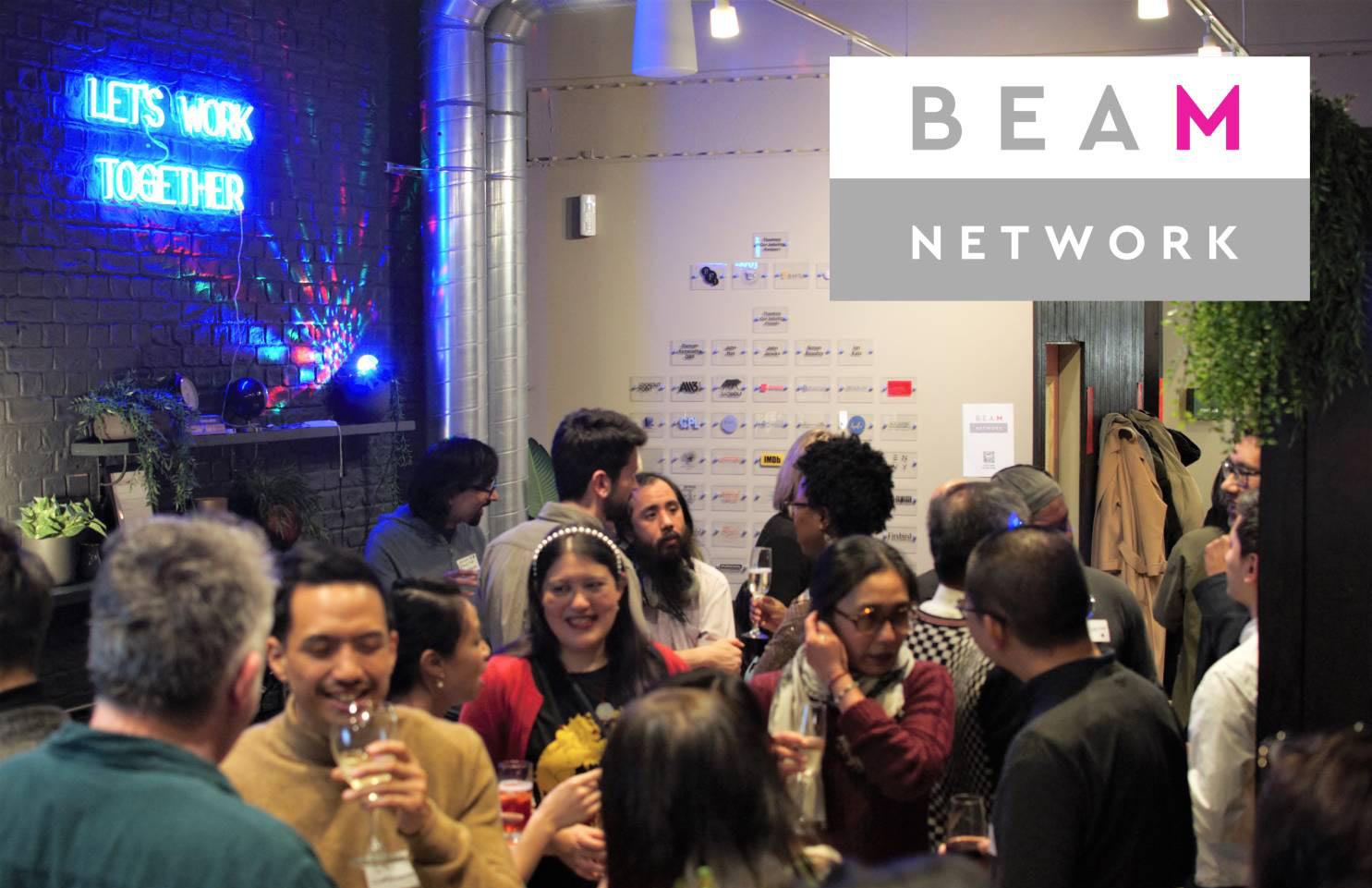
We are a community created by its own members, so if you are of East and South East Asian heritage and wish to join or perhaps run your own meet-ups, we would love to see you at www.wearebeam.network.
Connections. Community. Creativity. With better connections we can help tell the stories that better represent our cultures and community. n
29
CINEGIRL ATTENDS THE BSC EXPO 2023
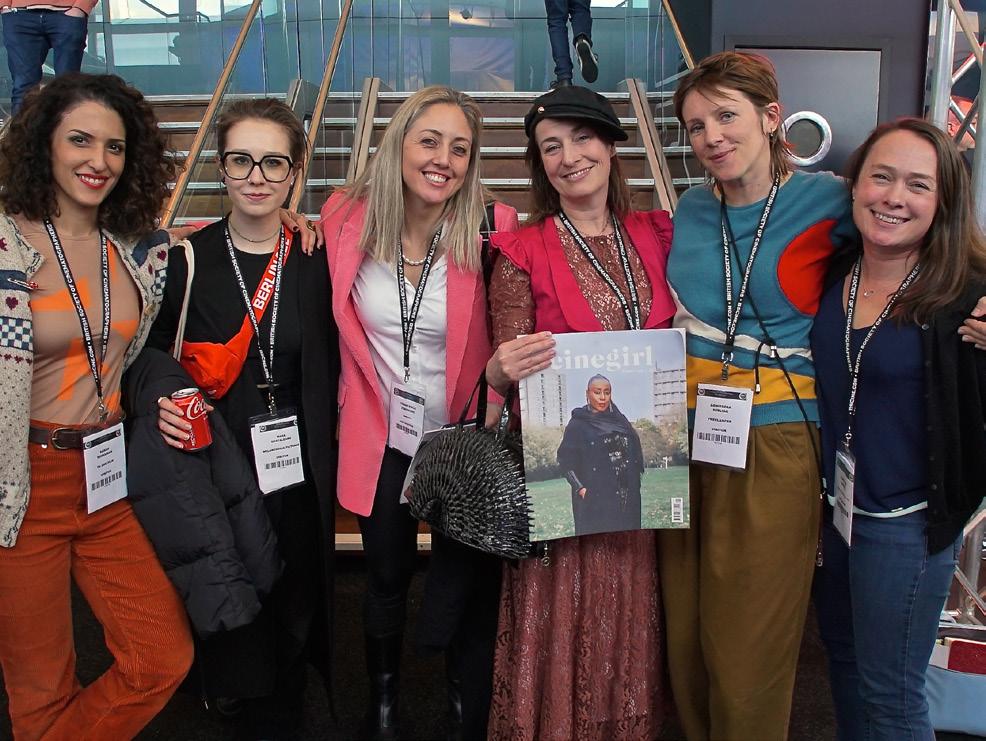
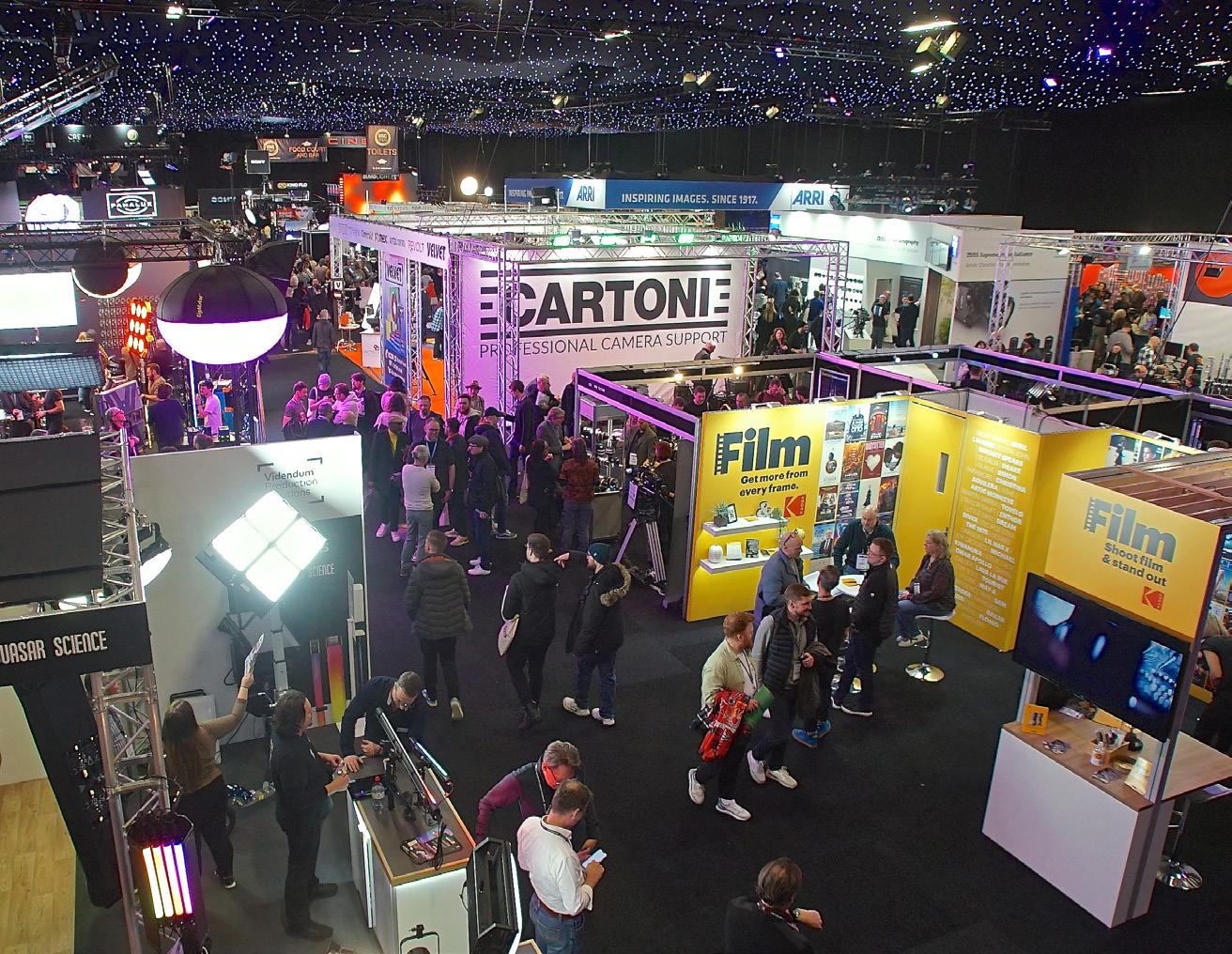
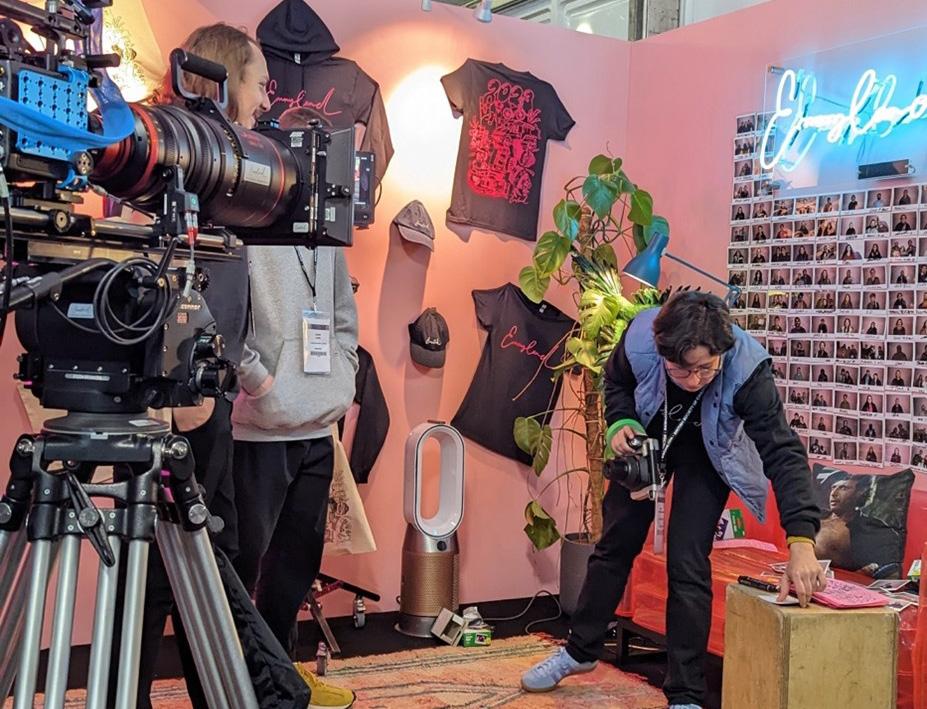 by Oriana Gregorj
by Oriana Gregorj
This year’s British Society of Cinematographers (BSC) Expo was held from February 17 to 18 at the Evolution Exhibition Centre at Battersea in London. As the UK’s premier event dedicated to the film production industry, camera, lighting, and media solution providers were present, showcasing all the latest filmmaking gear and tech. Not only that, but some of them also hosted seminar and workshop programmes to become involved with the attendees.
Both exhibitors and visitors were mingling, and amongst them, many women from different backgrounds. ‘One of the weirdest things is being in the women’s bathroom. When I came here 10 years ago, I never saw another woman in there, and this time, it’s exciting to be back, exciting to be exhibiting, and also, when I go to the women’s toilet, there’s a queue!” shared Emmy Robinson, from boutique rental house Emmyland, who were exhibiting at the expo for the first time.
From equipment rental to cinematography lenses and technology, Faye Napper also attended as an exhibitor for the first time, but her story is very different. Faye worked in BRITA for almost 10 years, recently transitioning to the renowned optical manufacturer ZEISS as Head of Marketing. ‘I’m learning a lot having not been in this industry for longer than 6 months. We already had some great conversations. Everybody seems to know each other. People have obviously worked in the industry for a long time. It’s like seeing old friends, almost. Seems like a good way to do business!’
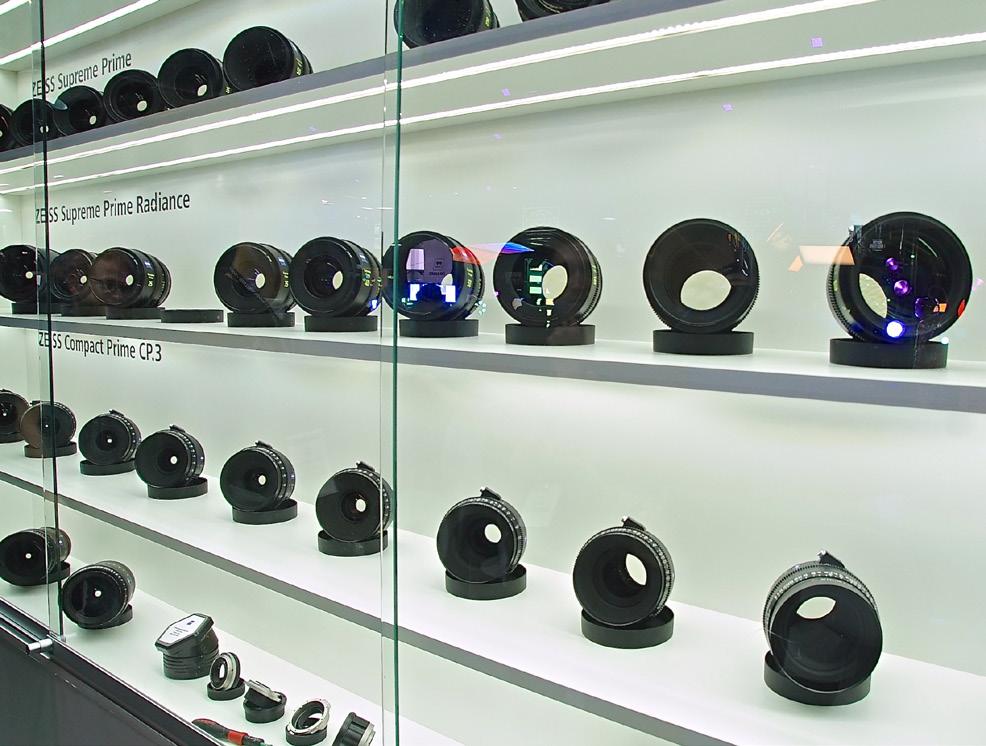
Not only physical equipment but also digital technology providers were present to introduce their virtual tools to facilitate solutions for film and media markets. Amongst them was Cindy Trinidad, who founded Rental Tracker Inc, the leading inventory and warehouse management software in the industry. ‘We started in the US, expanded throughout California, Canada and now we’re attending to the European market. Our customers have experienced major growth, and now we’re building a European based support group’. They have made significant steps to introduce their product within the European market; notable customers include Universal Studios and Warner Bros.
Overtime, the BSC Expo has demonstrated to be a key event within the European market, with exhibitors attending to promote their latest products, expand their network, spot business opportunities and get insight into the latest industry trends. Terra Bliss, Managing Director of Camera, UK & Ireland at Panavision, explains with detail the importance and essence of the BSC Expo: ‘Year after year, the BSC expo proves to be an important industry event. It is a wonderful opportunity for filmmakers, film fans, and fellow manufactures to explore the latest in filmmaking technology from all aspects of the industry. The Panavision group has been able to launch a number of notable products over the years, and it’s a fantastic environment to showcase our latest offerings across all our brands to our customers and filmmakers from all backgrounds. The BSC expo provides a platform to inspire the film community and we’re excited to be a part of it’. n
Emmyland
ZEISS lenses on display
(Credit: Richard Blanshard)
Cinegirl at the BSC EXPO 2023 (Credit: Richard Blanshard)
Exhibitors promote their latest kit
30
(Credit: Richard Blanshard)
LUCREZIA THE COLOURIST
by Léa Aubigne
Lea Aubigne (LA): Can I get a 30-second trailer of Lulu, the colourist?
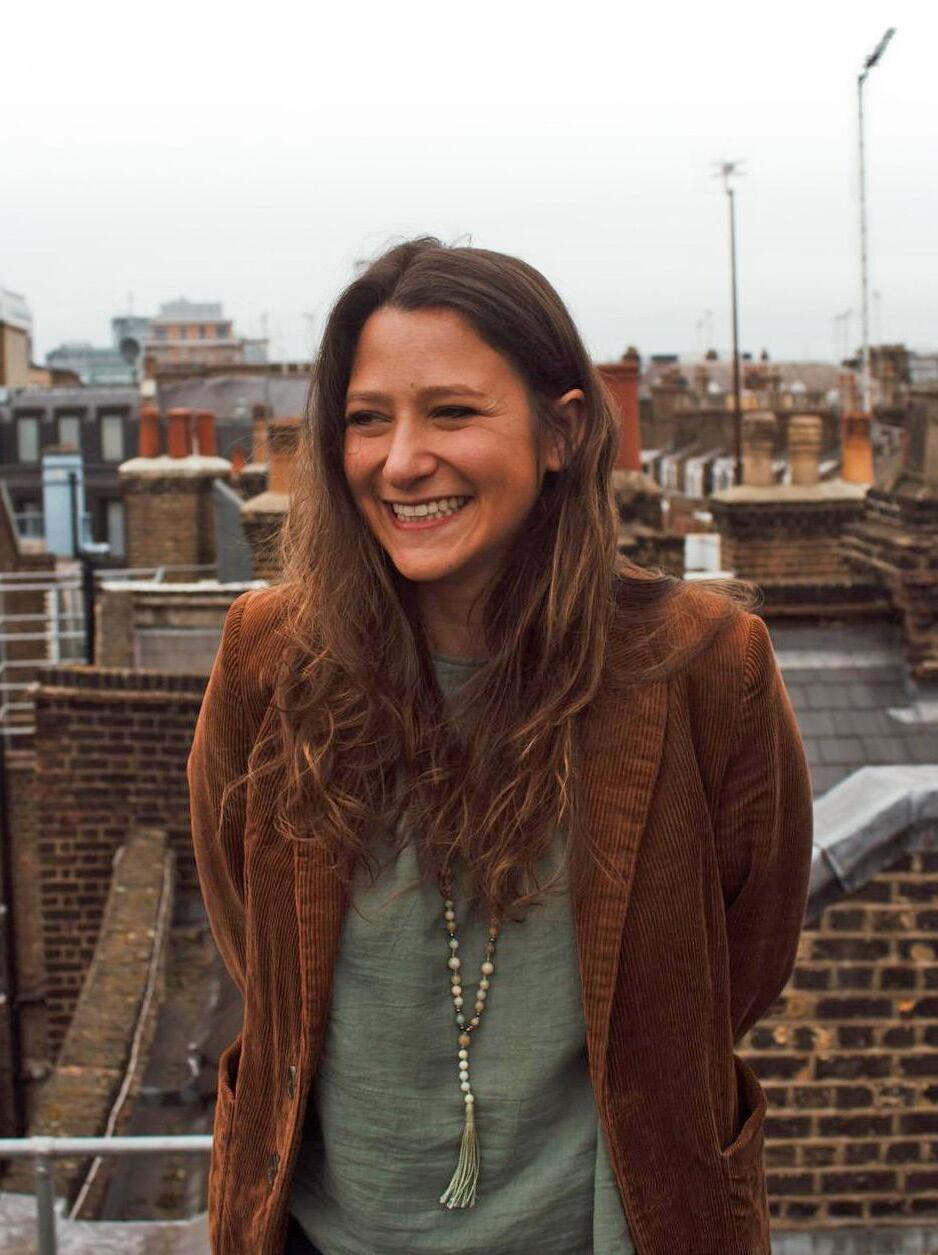
Lucrezia Pollice (LP): I come from a family of creatives: my parents are architects and light designers, so I’ve always been surrounded by the importance of light, art and photography. It took me quite a while to figure out what area of the arts I wanted to be in. I started learning photography, and through directing short films at university, I discovered colour grading. I thought it was magical and started pursuing that career. I worked my way up the ladder and recently stepped up as a colourist at Creep, a lovely small boutique in central London!
LA: How exciting! So, what goes into being a colourist?
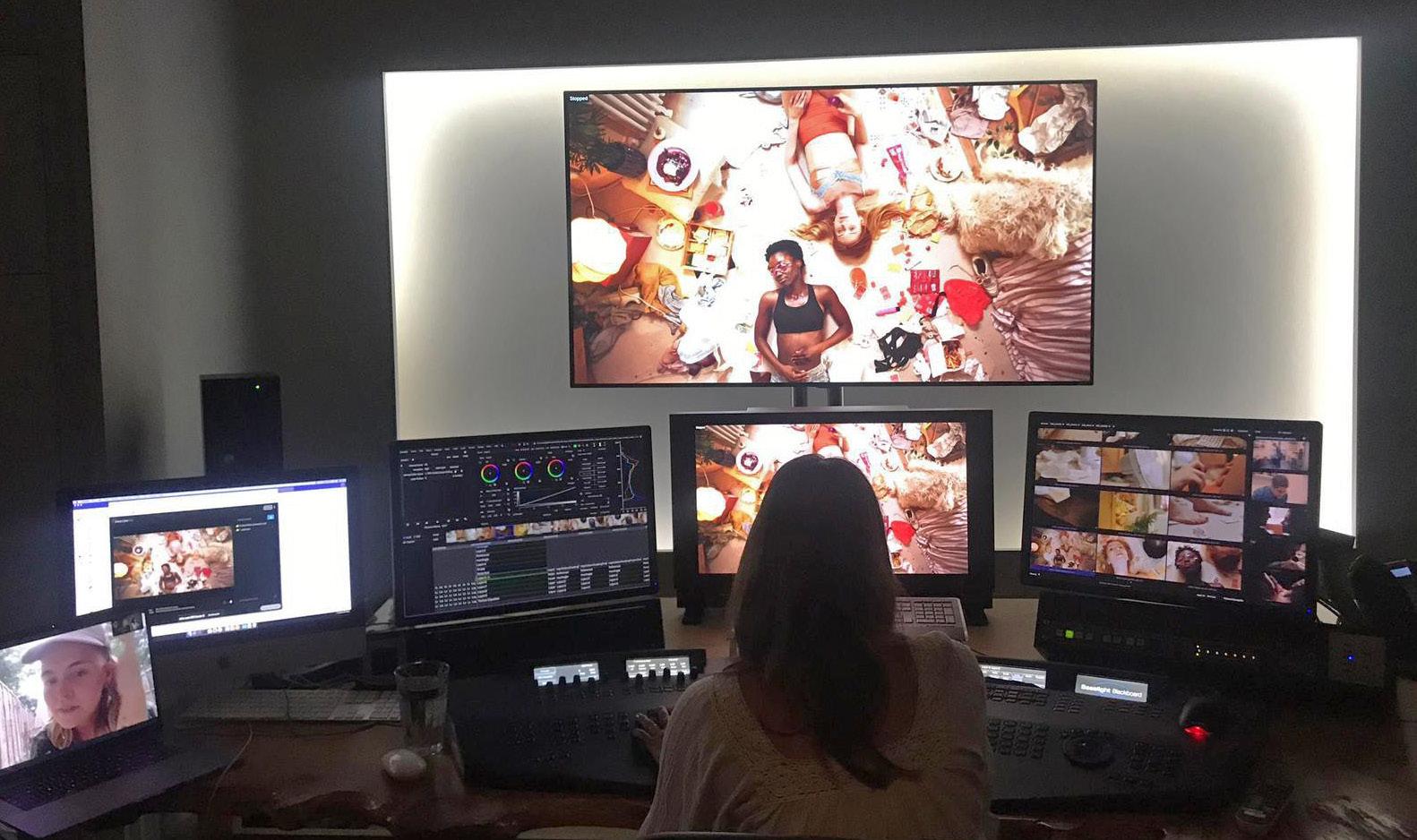
LP: The colourist is responsible for creating a look with the director and DOP, which gives the film the colour palette and the contrast it will have when it’s released to the publickind of like choosing a type of stock for film. As a colourist, you’re also responsible for ensuring the whole colour pipeline of the project is done correctly, collaborating internally with producers and VFX teams.
LA: It’s a lot more sociable than people would suspect!
LP: It depends on the colourist, but I like to make it sociable and have the grades attended, because collaboration is the best part of colour grading. I love being in a room full of creatives, with either
DOPs, directors, producers, or anyone who wants to be involved in the grade. When I get handed a project, I can make something that looks cool, nice, interesting and different, but I need additional information from the HOD’s to find the perfect look for their film. I need to understand the whole journey of the piece by flipping through the treatment to understand the HODs’ intentions and getting a brief of what happened on set and the direction they want to take now. With that information, we will experiment with different looks and find the one that works.
LA: How do you express your creativity?
LP: Creativity comes by listening to people and understanding where they’re coming from, problem-solving, and talking to people creatively. I don’t think you should notice the colour grade when you see a film. You should be able to recognise that it is beautiful, but that isn’t just down to the grade; it’s the production design, the costume, the make-up, the cinematography... So many aspects of a film come together to make it beautiful. As a colour grader, you’re bringing all the departments together and enhancing what’s already been created on set organically and homogeneously.
LA: Finally, what project did you work on that was essential to your career?
LP: Superdry was important to me, because it was my first big project. Thankfully it was with a director I knew very well, which was very reassuring, because I knew that he would be honest with me, which is key. I graded this whilst I was an assistant, meaning I was starting to grade at 6pm after a whole day of assisting, we would finish grading at 1am, and then I would get back to assisting at 9am. I learnt so much, but mainly that if you put your mind to it and trust yourself, you can grade beautifully and make the deadline. After that, I had a huge confidence boost. n
31
“As a colour grader, you’re bringing all the departments together and enhancing what’s already been created on set organically and homogeneously.”
FROM THE SILVER SCREEN
by Carlotta Beck Peccoz
This is not your typical jewellery brand. Made by film lovers for all cinema enthusiasts, From The Silver Screen transforms the silver from film processing into luxury designs inspired by the history of film. Keywords of the brand’s mission are sustainability, style and a very strong sense of community. Claire and Natalie are the founders and their two brilliant collections were just the first step for From The Silver Screen. They also started Film on Film, a series of film screenings and events, and launched a new production sponsorship initiative for analogue projects, The Processing Tank. Let’s dig into this (eco-friendly) mine of film goodness!
Carlotta Beck Peccoz (CBP): When and how did the idea for From The Silver Screen come up?
Natalie Daniels (ND): From the Silver Screen’s birth was during Covid, but the idea came about two years before. Claire and I used to work at Pinewood Studios for a film festival called Lift-Off Global Network. They used to organise lab tours with Kodak, and we saw the whole process of how film is developed. When we came to the section where they talked about the silver, the idea kicked in. I think it was 2017. We spoke about it but nothing really happened. We were so busy with work and just had this idea bubbling away. Then we both got furloughed with the pandemic and we just looked at each other and went ‘Shall we do this? Yes, let’s do it!’
Claire Richardson (CR): I always like to say to my friends that every time we had too many glasses of wine, we always ended up talking about the idea. We would look at each other and ask ourselves, why is no one doing it? So then finally, two and a half years later, we realised it was our chance.
ND: Our first contact was with Kodak and they showed us Cinelab. We spoke with Adrian Bull (Cinelab CEO) and he
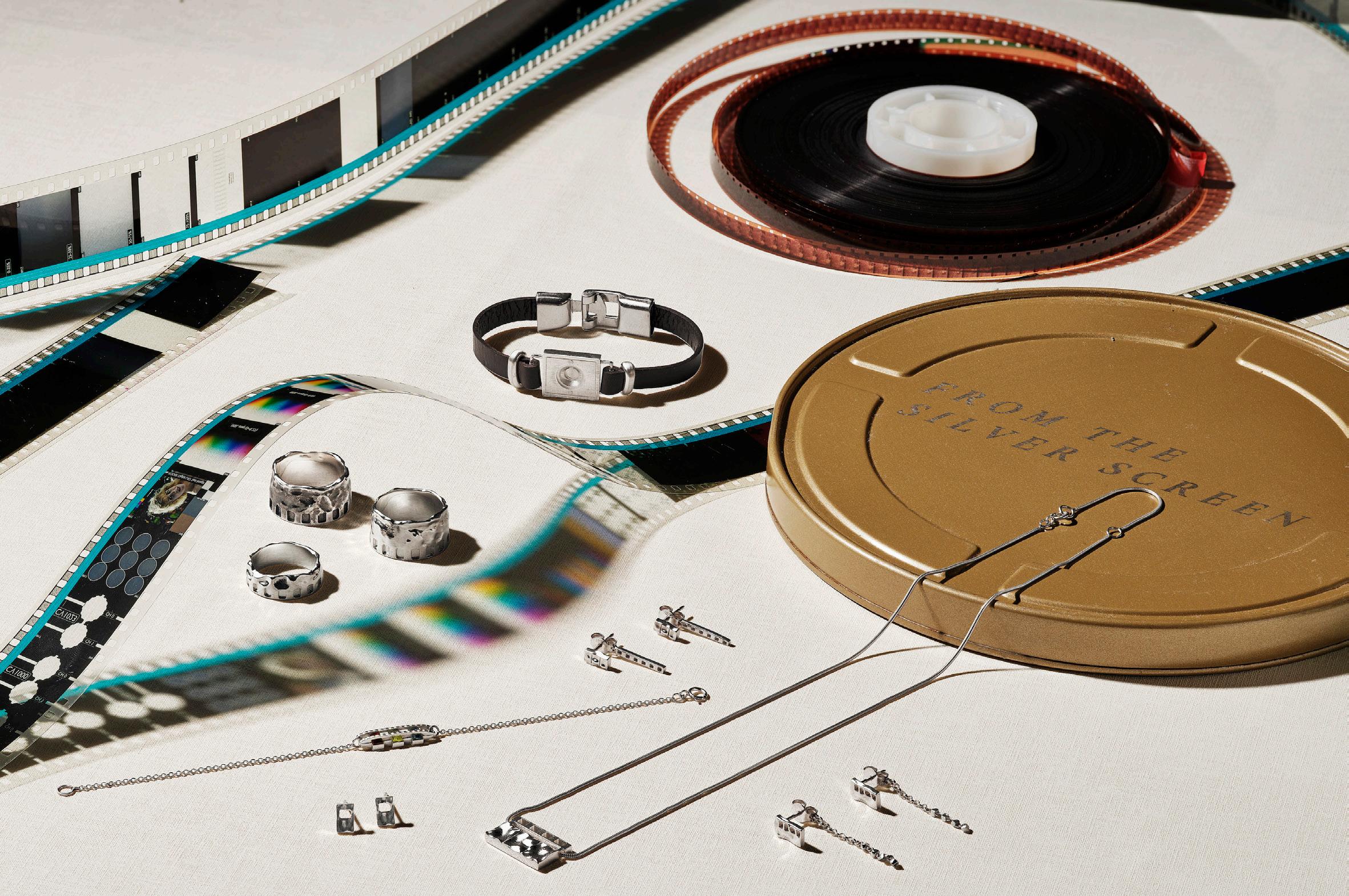
32
was instantly on board. We were really grateful, but we still didn’t know if it was going to work. Because the chemicals used in the process could affect the silver, so it might not be strong enough for making jewellery with. We were given caution by lots of different jewellery experts. So we did a test run.
CR: After the test run, we got the green light. The silver was as pure as it could be; it came back 99.9% pure from the lab. That’s when we did our first collection!
CBP: I love to hear about great projects that started during the lockdown. It was obviously a pretty bleak period for many people, but knowing it was also an opportunity for positive, new ventures to begin, makes it a little less terrible in retrospect!
CR: It was a bleak time in many ways, but I think one small positive is that some people had more space and time for creative outlets. In our case, it did give us the time to actually pursue what we had wanted to.
CBP: Could you explain how the process works to get the silver from the screen to your jewellery?
CR: Our jewellery’s life begins as microscopic silver halide crystals within film. These crystals are fundamental to the photographic process, because when exposed to light, a reaction darkens the film strip to produce the image. Cinelab extracts the silver from the film using fixer chemicals, and then goes on to use a magnetised current to separate the metal from this chemical mixture. Once refined, you are left with silver in its purest form. Too malleable as solid silver, the metal is then alloyed, to create the industry standard sterling silver, which the jewellery is created from.
CBP: That’s so fascinating and it’s an amazing way to offset the filming on film process.
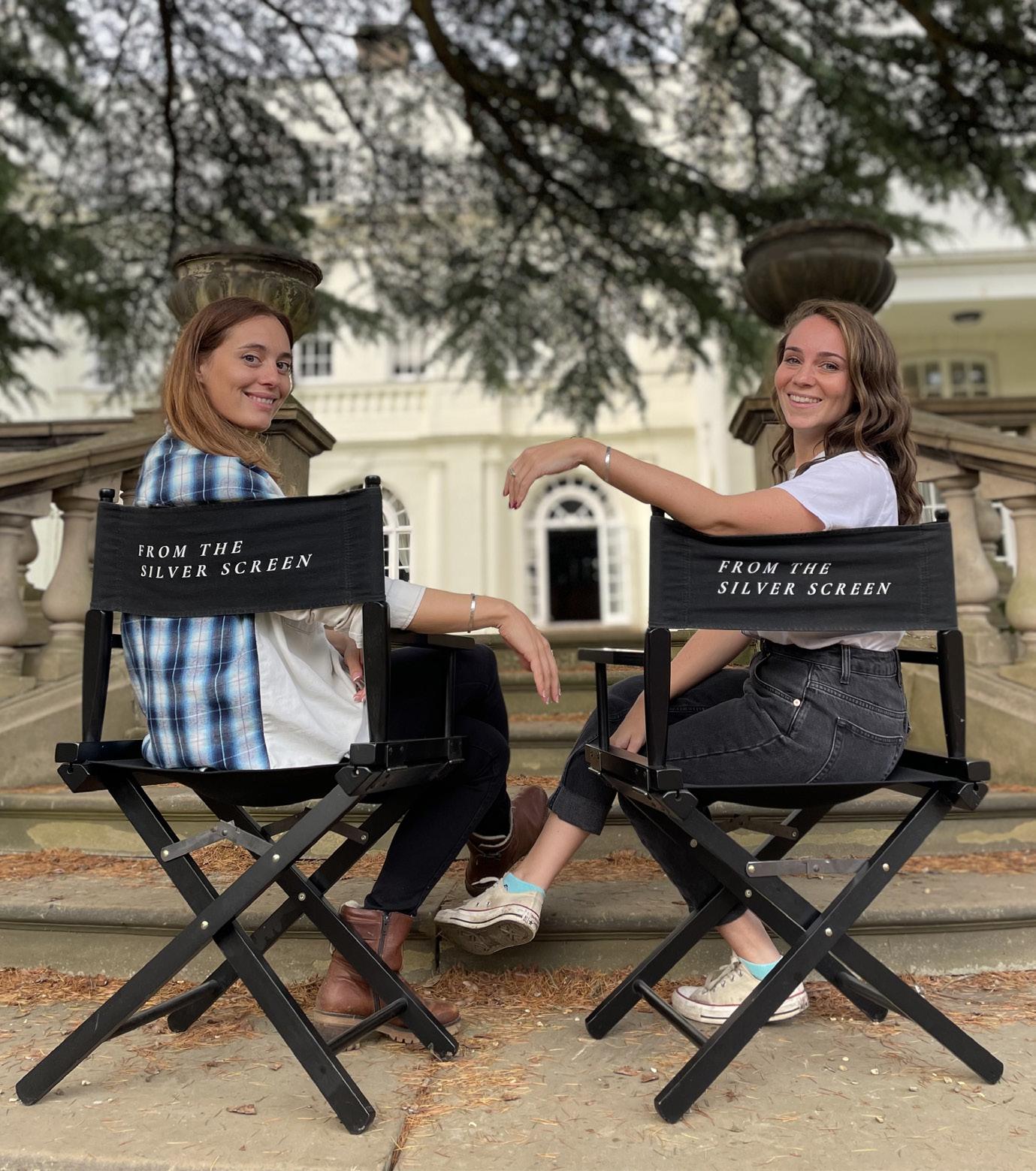
CR: Absolutely! And all of our materials, including the packaging, are made with the lowest carbon footprint possible. Everything is sourced in the UK and made within London.
ND: The packaging are real used film cans. Some of them have a couple of dents from their previous life, but that’s part of the charm. Claire and I have to clear all the production stickers and clean them all up before engraving them with our logo. It took more than 2 days to get through 200 cans, roping in some friends and family to help. It really is a labour of love!
CR: We have also changed our ordering method to pre-order only, in line with our green ethos. It prevents us from bulk buying and potentially not selling or not stocking enough of something. So we decided to do it on a demand basis.
CBP: Could you tell me about the designing process?
ND: At the moment, we design it ourselves. We have to have strong inspiration. It wasn’t easy at the beginning. But it was our first collection so we thought about firsts in film: the first sci-fi, the first narrative, the first documentary film etc. Hence the collection name, Film Firsts. Once we had that initial inspiration, the designs came to us quite quickly. That was a very interesting process.
CBP: Celluloid Classics, your second collection, just launched, could you talk to us about it?
ND: Initially we threw around some ideas to look at more cliché designs, like what you’d expect from a company that makes inspired-by-film jewellery: popcorn, cinema chairs >>
“Cinelab extracts the silver from the film using fixer chemicals, and then goes on to use a magnetised current to separate the metal from this chemical mixture. Once refined, you are left with silver in its purest form.”
33
– Claire
and 3D glasses. But it just isn’t what we want to do. We want to find cool stories that happened within cinema and promote them. Because the silver comes from the film strips, we went back to the evolution of the strip itself. We looked at how the sound was added to it, how the colour became part of film and what the process was in order to make that happen. So each piece is inspired by a part of this evolution.
CR: Another thing that is important to us is that all the pieces are gender neutral, so we want them to appeal to everybody who is a film-lover and enthusiast.
CBP: Now, what struck me the most about From The Silver Screen is that, after just two years of business, you have a whole community gravitating towards you. I came to one of your beautiful Film On Film screenings where you also launched the new jaw-dropping film fund, The Processing Tank, supporting productions shooting on film in partnership with Cinelab, Kodak and Arri. The sponsorship includes 5 days Arri Rental camera and lens hire package, 1600 ft (4 cans) of 16mm Kodak film stock, 1600 ft of free processing at Cinelab Film & Digital, plus a discount for extra film, and many other perks...
CR: Natalie and I have been working for more than 10 years in indie film, so we have always been passionate about indie filmmakers and the indie landscape. So it seemed like a nobrainer that whatever company we would have built together we would have also wanted to champion that world. So along with the continuation of analogue film, we thought, we can screen films and bring filmmakers together. And that led to us wanting
to take a step further and help people being able to shoot on film, because it’s so often out of budget.
CBP: Have you already received a lot of submissions for it?
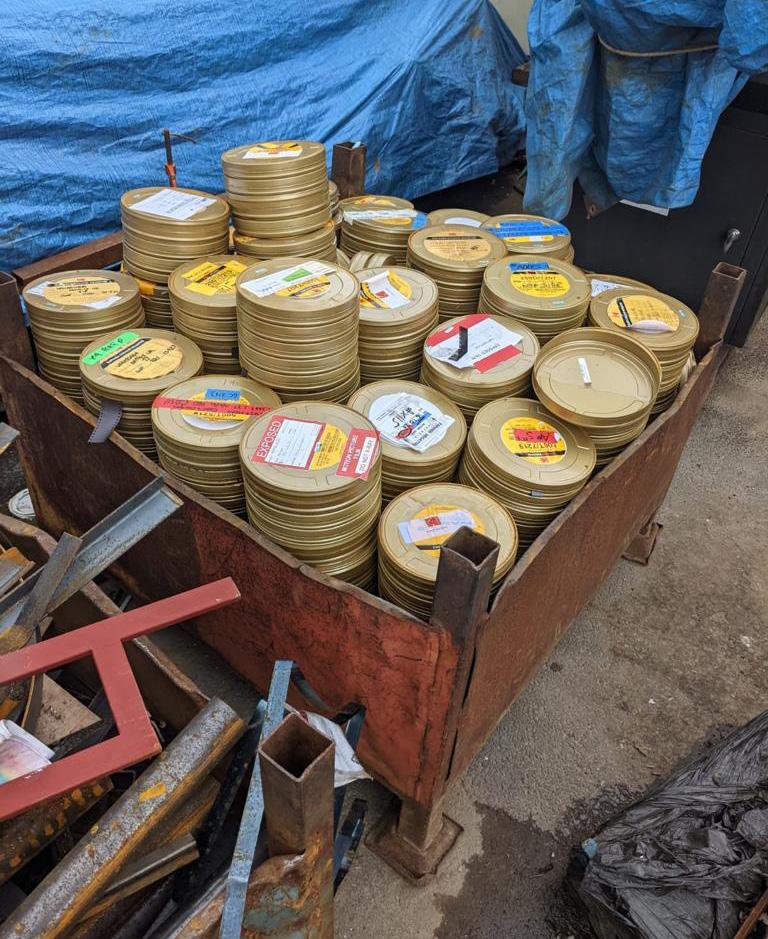
ND: Yes, so many! The first round of funding closes in May. But it’s on a rolling basis, so it’s always open for submissions. We are aiming to support three projects per year. It’s really exciting, because there are no limitations in terms of content. The only guidelines are that projects must of course be shot on film and be shot in the UK. We are captivated by the stories and concepts coming in.
CR: The jury panel is made up of the two of us and one representative from each of the sponsors, Cinelab, Kodak and Arri Rental. So the projects go through multiple people before the final decision. And on this note, we want to shout out to these companies because they are also so passionate about supporting the next generation and they genuinely care.
CBP: What does the future hold for you and From The Silver Screen?
ND: There are very exciting possibilities in the works. We are chatting with different people about how we can take the company to the next level. Nothing is solid at the moment, but this year, wheels have been turning quite quickly already. And we want to support filmmakers who make those films and give people a piece of film history with our jewellery. If you see what Cinelab has been processing over the last couple of years, there is some incredible stuff and your jewellery is made of that. And the film made thanks to The Processing Tank will also become jewellery. It’s like an ecosystem. That’s what’s exciting! n
“The packaging are real used film cans. Some of them have a couple of dents from their previous life, but that’s part of the charm. Claire and I have to clear all the production stickers and clean them all up before engraving them with our logo. It really is a labour of love!”
34
– Natalie
FIRE OF LOVE: A ROMANTIC ODE TO THE PRIMORDIAL
by Mila Fielker
Written, produced and directed by Sara Dosa, this documentary crafts an intimate portrait of French volcanologists Katia and Maurice Krafft, the daredevilish sweethearts who devoted their lives to uncovering terrestrial secrets. ‘What is it’, they ask, ‘that makes the Earth’s heart beat, its blood flow?’ On 3 June 1991, the Kraffts were caught in the pyroclastic flow of Mount Unzen as it erupted, tragically killing them and 41 others. It is through their close-up studies that Katia and Maurice contributed profound insight into the mysteries of nature. But their story also questions the presumed chasm that exists between scientific discovery and art, as it traverses a far more elusive in-between.
The Kraffts met in the late 1960s at the University of Strasbourg. The two kindred spirits shared a disillusionment with the human world and, after attending a protest in Paris against the Vietnam War, left to study volcanoes up close. Katia and Maurice would faithfully photograph and film their expeditions, with their 16mm footage at the heart of this documentary. Appearing as equal parts academic record and science fiction movie, it has a cinematic style that far exceeds what you might expect from two scientists documenting their fieldwork. Sequences of them in bright blue coats and cherry-red hats traversing along the mouths of volcanoes in a whimsical fashion are reminiscent of a Wes Anderson movie. In the film, they explicitly reject the traditional system of cataloguing volcanoes, and it becomes clear that this fanciful archive is inseparable from their scientific
objectives. As Maurice notes ‘Look at how small we humans are against this volcanic force. The only thing that will remain of our passage is that we can write, tell stories, and film’.
Their footage is also primaeval and otherworldly. You are confronted with the strangeness of this world: red-hot lava gurgling like caramelised sugar, undersea magma cracking as it emerges and cools, Maurice frying an egg on volcanic rocks. In an unforgettable moment, you witness the Kraffts, dressed in protective shiny spacesuits, venturing out onto the edge of a volcano as it spits out scarlet lava into the sky, vivid against the dark rock. This hypnotic imagery is complemented by the narration of Miranda July, whose bewitching voice-over establishes a thread of existential musings throughout the film. Dosa honours Katia and Maurice’s legacy in a way that feels playful, contemplative and utterly romantic. This is best encapsulated when July imparts: ‘And across humanity’s two million years, two tiny humans are born in the same place, at the same time, and they love the same thing. And that love moved us closer to the Earth’.
Fire of Love reminds us that human beings often feel they are adjacent to, rather than living in, the natural world. The Kraffts loved volcanoes, ‘indifferent in the face of their adulation’, and we must all reckon with the urgency of caring for this planet –even if it can never love us back. n
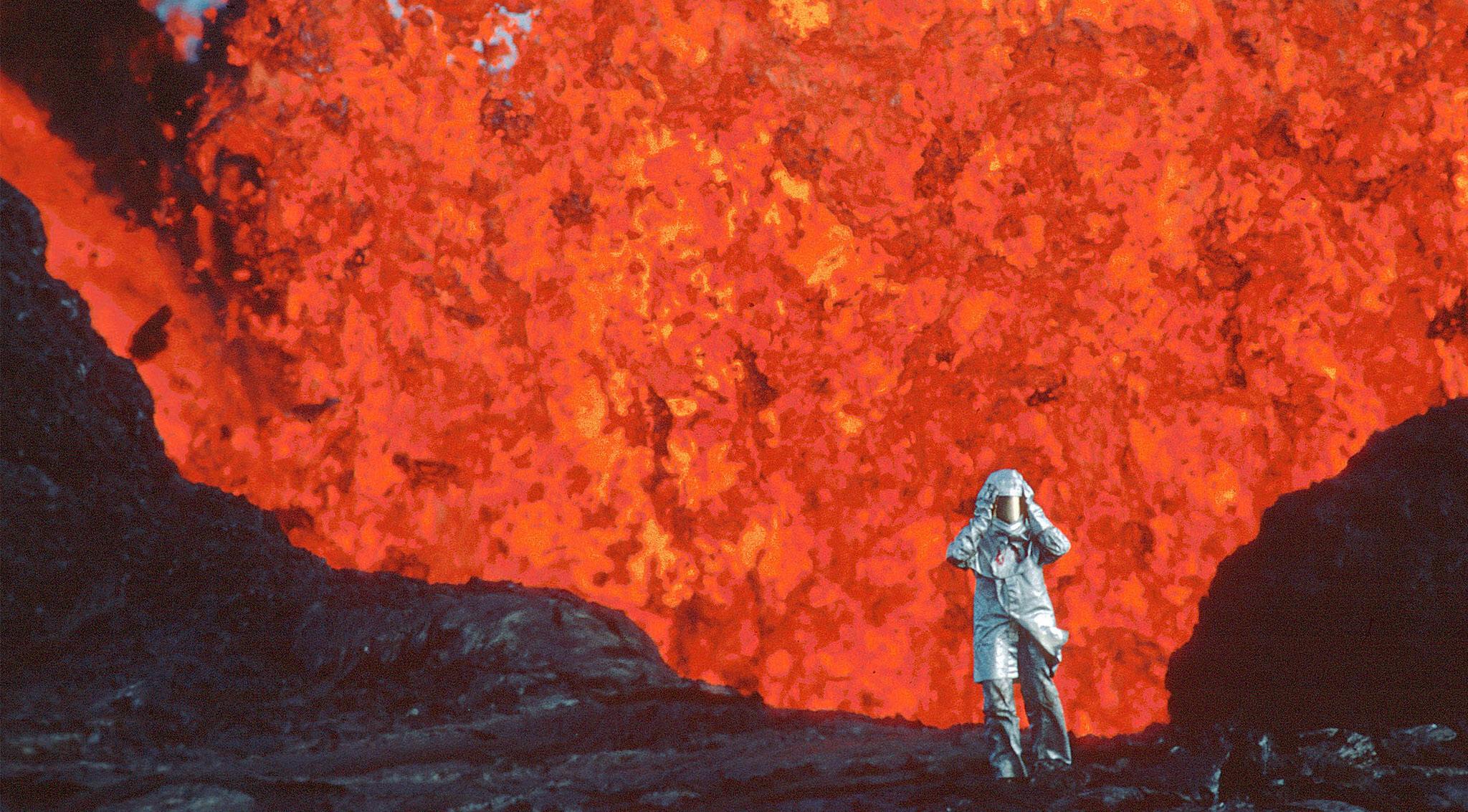
35
IN CONVERSATION WITH SOPHIA GIBBER
London & Rome based Producer
by Denise Di Castro
Denise Di Castro (DDC): What sparked your interest in film production?
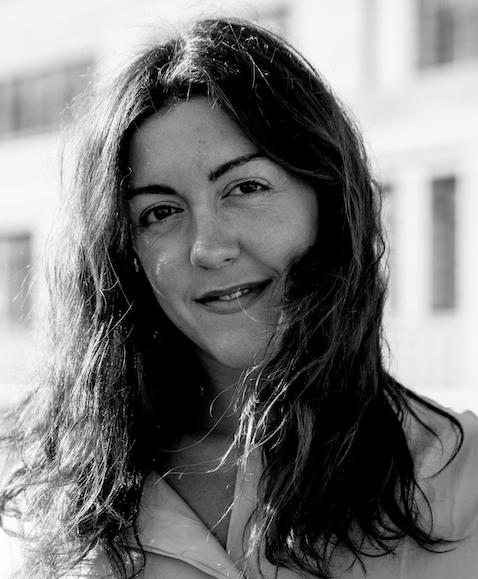
Sophia Gibber (SG): At first I wanted to write music for films. Before university, I ended up in Miami for two months, working for a small film festival. And watching the film submissions, I just thought, I want to be making movies. At Oxford University I studied English. At the time, the film society was tiny. It had one Canon 5D and about eight members with a lot of passion. I made a short film during my final year. I was always very drawn to storytelling and human behaviour - my dissertation focused on the origin of character and how the portrayal of character developed in Elizabethan and Jacobean drama. As a producer, I like to be on board for the whole adventure and go on a journey with my filmmakers. By finding a book, script, writer or idea, and working from the ground up, I love to find a way to transform a story into something that goes on screen and resonates with audiences.
DDC: What is your current role?
SG: I am a producer for BAFTA-winning outfit Agile Films. It’s an exciting time to be at the company and I work with some very talented people. I’ve got features in development with BAFTAnominee Philip Barantini (of the breakout film Boiling Point), Film4 and Stephen Butchard (The Good Mothers), the brilliant Phoebe Arnstein’s debut (we just shot her ultimate short that stars Erin Doherty with DP Michal Dymek), an adaptation of Screen Star of Tomorrow writer/actor Lizzie Annis (The Witcher) acclaimed one-woman play Trouble with The Development Partnership, and I’m producing Calum MacDiarmid’s debut feature Wasteman that will star David Jonsson (Rye Lane). They’re all extraordinary filmmakers and I feel very lucky to be working with them.
DDC: You created a bridge between Rome and London.
SG: I always loved Italian cinema and felt that there should be
a bridge with international cinema. The White Lotus does that exceptionally and proves that there’s appetite for it. There are so many talents and stories to tell here and I feel as at home in Rome as in London. I’m currently developing two Italian debuts with Elsinore Film and Young Films that I hope will resonate globally. One of those is the brilliant Giada Bossi’s debut - she’s a director we recently signed to Agile and is incredible.
DDC: Tell us more about Precious Hair and Beauty
What an unexpected perspective!
SG: John Ogunmuyiwa is a filmmaker I love, and who I feel is doing something really different at the moment in the UK, with his touches of magical realism. I immediately fell in love with his idea and script. It had a message, while being so uplifting and different at the same time. The project got funding right when Covid happened, which pushed back production and nearly doubled the budget. Luckily, our funders BBC Film, Loop Fund and BFI were incredibly supportive in helping us make the film. We were the first BBC Film to go into production post-pandemic. The short premiered at Sundance 2022 and has played in over 40 festivals. It’s been a beautiful journey! I think ultimately the best films come from the filmmakers’ truths – this film is an example of that. It comes from John recognising the beauty of the high street in South London.

DDC: What is your advice for the new generations?
SG: First and foremost, you have to love storytelling! It’s how you push through this industry. For me, the highs are very high, and the lows can be very low. There have been moments where I’ve questioned myself and tried to plan different routes. But then I realise there is nothing else that I want to be doing. Life is too short - enjoy working with your colleagues. Think outside the box, put in the hours. Your passion motivates other people too, and that will shine through. n
A ray of sunshine with a brilliant sense of humour and an inspiring career. Read on to discover the life and work of Producer Sophia Gibber.
36
Precious Hair and Beauty
Q&A WITH DP SARA DEANE
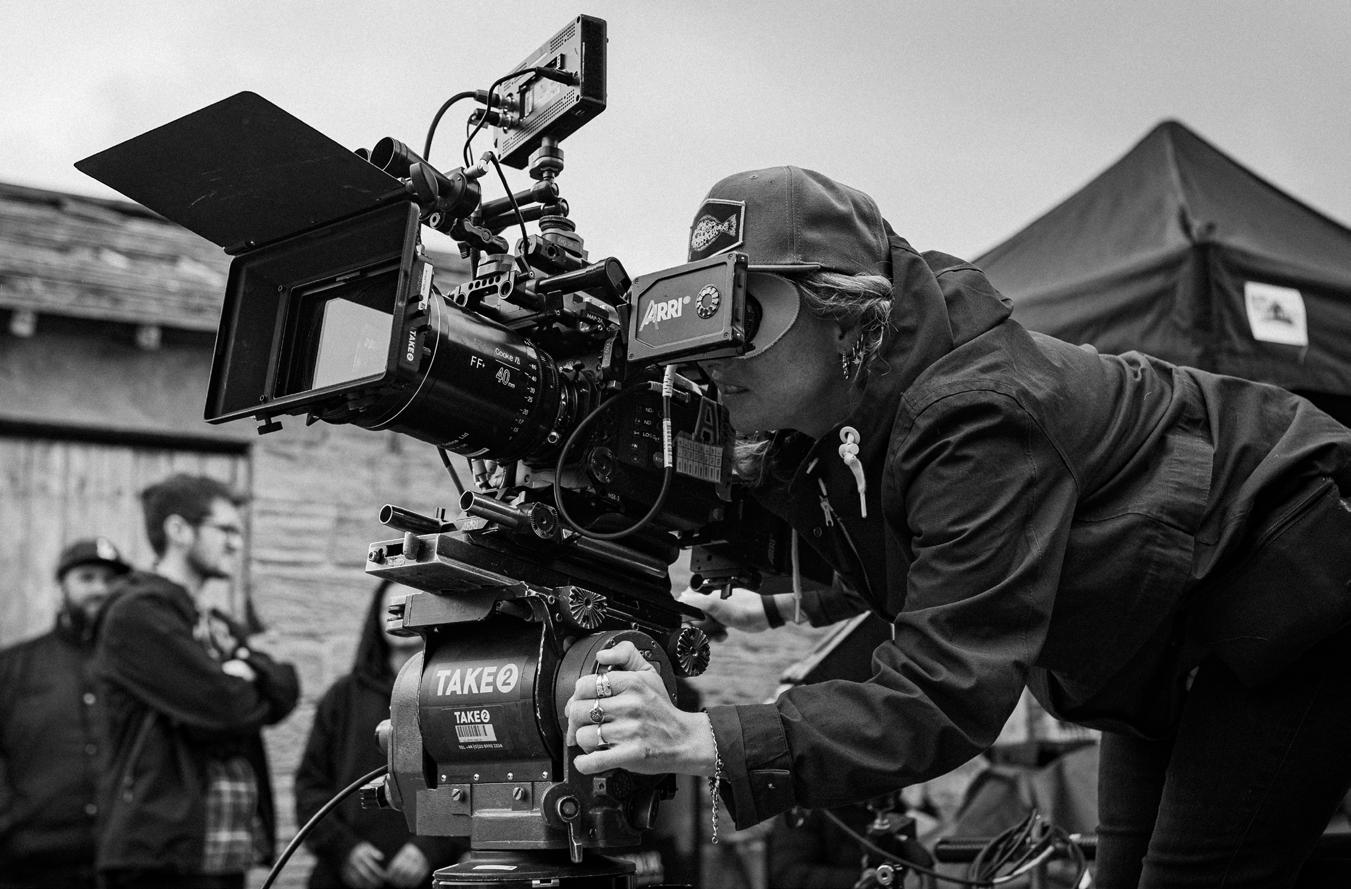
On the upcoming feature film Nandor Fodor and the Talking Mongoose
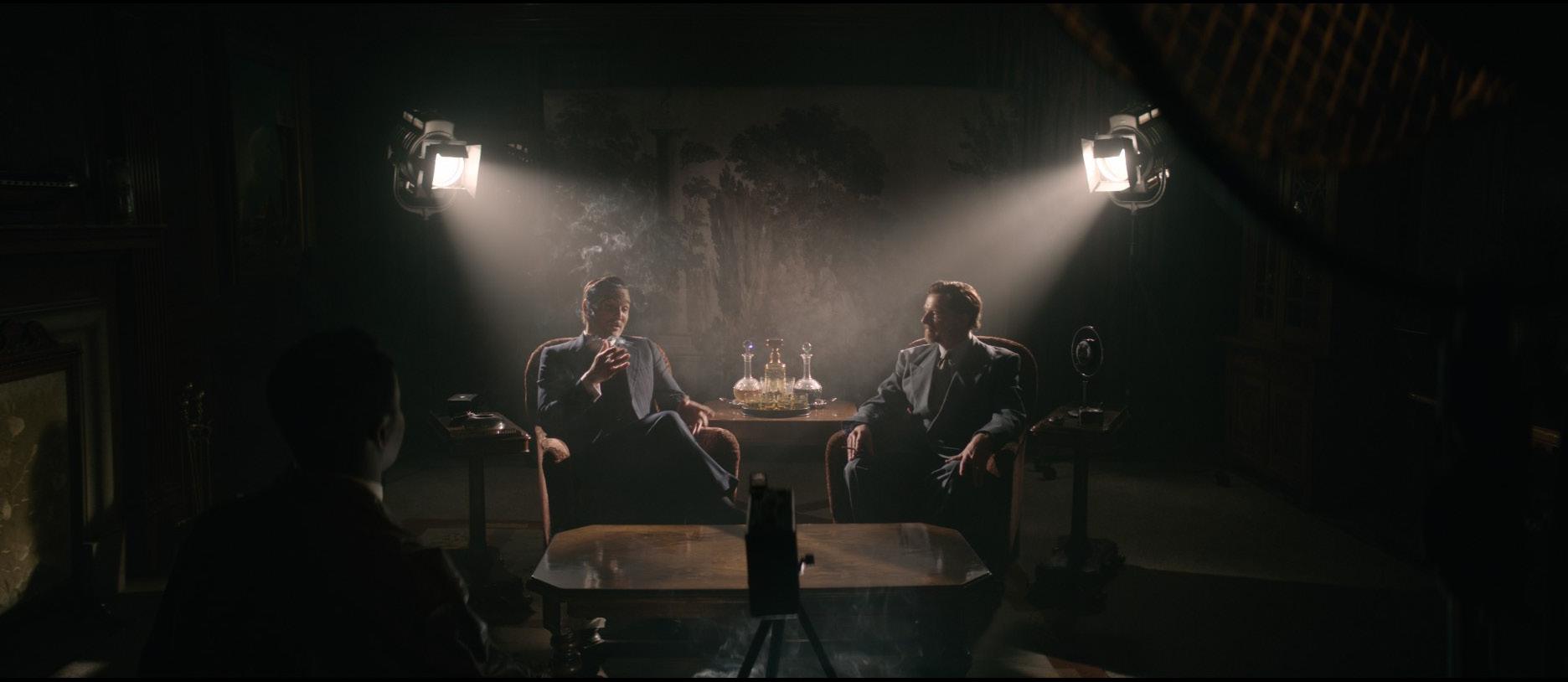
How did you decide that you wanted to become a DP?
Sara Deane (SD): When I was 15, the Children’s Film Unit made a film at my school, and I was immediately fascinated by what was going on behind the camera. So, I joined the unit, and from then, I knew it was what I wanted to do. At 18, I went to Bournemouth Film School and started getting work as a camera trainee. I spent five years working as a clapper loader, then went to NFTS. I graduated in 2009 and have worked as a DOP ever since.
How did you come to be involved in this project? Is there anything that drew you to the story?
SD: Well, it’s a fascinating story based on actual events. It’s set in the 1930s when paranormal investigation was viewed equally to any other scientific research, so it’s an interesting era. I was introduced to the director Adam Sigal through my American agent. After a short conversation on Zoom, he asked me to do it. It’s a fantastic script, funny and surreal. It’s about a talking mongoose and also what drives us to believe in anything. Adam had a clear vision. He wanted a classic film noir feel with a muted colour palette. I’m often drawn to colourful projects, so it was interesting to work on something different.
How did you approach creating the look of the film?
SD: I created a mood board pulling references from films, old photography, and art, including some of Andrew Wyeth’s paintings. The film is set on the Isle of Man, and much of the story takes place in a farmhouse in the middle of nowhere, so I wanted to show the landscape to be very isolated and desolate. And since the film’s present world has a desaturated look, I wanted to add some contrast by making the flashback sequences more vibrant and colourful. The director and I sat down for 3 hours, and he told me the entire storyboard of the film. One of the fantastic things about working with a director with such a clear, unwavering vision is that it gives you a lot of freedom with lighting because you know exactly how the scene will play out.
You shot on the ARRI Alexa Mini LF with Cooke Anamorphic/i FF lenses. How did you come to that decision?
SD: I knew immediately that I wanted to shoot on the Mini LF. I’ve shot a lot on the Alexa and can almost light to eye with it. I did a film two years ago with
the same set-up, and I just really loved the look. Large-format anamorphic is a lovely format to shoot on. I thought it would be great for this project, for this expansive landscape. The Cooke’s are sharp where needed, but the fall-off is beautiful. They’re soft, but they have bite; they have contrast, but they’re also gentle. They are the lens of contradiction somehow.
Procam Take 2 supplied the camera and grip; how was your experience working with them?
SD: It’s always a pleasure. I’ve known Sandro for a long time, and he’s helped me on numerous projects. The fact that he visits us on set and shows genuine interest in our work is a testament to his supportive and collaborative nature. We shot Nandor up in Leeds and Harrogate, and the team provided everything I wanted for the shoot. It was a really positive experience, and I immediately worked with them again for my next film, 5lbs of Pressure, which was shot in Manchester. I took the whole Nandor camera, lighting and grip crew with me.
Do you have any advice for aspiring cinematographers?
SD: I would say to concentrate your energies towards collaboration. If you can try to delve into the director’s mind and understand the vision, then I feel you’ll get the best experience of filmmaking. When everybody is on the same page and working together to create the same look, you’ll make something way better than if different departments are all thinking independently. So, my best advice would be to be a good collaborator. n
Sara Deane (Credit: Olexiy Kryvych)
Sponsored feature 37
Nandor Fodor and the Talking Mongoose
INTRODUCTION TO DOCO STYLE & REMOTE LOCATIONS FILMING
by Léa Aubigne
Studio and location shoots necessitate two different approaches. As you can probably guess, filming in a studio is much easier and more straightforward, since you usually have everything you need provided for you from the start. Plus you don’t have to fight against the elements. Then again, shooting in an easyaccess location and shooting in remote locations are also quite uniquely different. For this, I think covering a docu-style way of work is essential. Working on documentaries is an incredible experience where you’ll learn a new and more self-sufficient way of assisting your team that will help you assess your priorities. You become inevitably versatile, ready for the unexpected, with a Do-It-Yourself attitude, laying down an excellent foundation for you to tackle the world of remote locations.
The nature of filming a documentary usually requires a lot of moving around swiftly from one location or contributor to another, and following the characters around the relevant environments to compose their story in the most authentic and non-invasive way possible. We need to ensure that equipment is minimal, quick to set up, versatile, self-sufficient, light enough to carry around and, if flying abroad, compliant with aeroplanes and the countries you’re flying to. You want all that packed into the least amount of bags possible! For The Reason I Jump documentary, directed by the excellent Jerry Rothwell, we had to have an equipment package to fly to different countries such as India, and be ready to travel by train to Scotland. We were a crew of five most of the time, so we packed into two photography backpacks provided by the rental house with the camera built as much as possible, lenses, and essentials: batteries, chargers, cleaning kit, filters… With this system, we managed to move quickly from one location to another, fit into tight spots when needed and not overwhelm the contributors by surrounding them with tons and tons of equipment and things they weren’t familiar with. Documentary filming is a great school of learning. Amongst other things, it can help you understand what to prioritise. It’s crucial to be able to judge what equipment you need to bring versus what you can leave behind. Practising this will help you on bigger sets, especially when filming in remote locations.
On any project, you can suddenly find yourself at the top of a mountain, in the middle of the forest, on a cliff or the crew’s favourite, the beach (sand, salty water, tides, wind, difficult to
38
access… an absolute right of passage!). The first thing you’ll need to find out is access. What has production implemented to get people and everyone’s equipment to the location? How much space is allocated for the crew outside of the shooting area? How many people can physically be there at the same time? Many locations have a weight limit or the number of people limit, so re-organise your plans according to this. Are easy-up tents provided and set up for us in case of brutal sun, rain etc? How long are we going to stay there for? The amount of equipment you bring will differ according to the number of shots and type of shots planned. Staying a whole day and staying one hour requires different planning, just as shooting studio mode differs from shooting crane, drone, handheld runand-gun, or Steadicam. With this information, you can figure out what can be left behind and what is necessary. Take into consideration the time of day; will it be dark soon? If yes, are work lights provided?
Last but definitely not least, safety. What time does the tide come in or out, and what part of the cliff should we avoid standing on?
If there’s a stunt, listen out for the safety briefing and carefully follow the instructions on where to leave equipment, where it’s safe for the crew to station themselves and be very attentive to the other safety rules to follow. We, as a crew, will not tolerate another accident due to a lack of safety briefings on set (read that again). I’m taking a deliberate tangent here because it’s imperative. Even if you are at an entry-level position, if you feel unsafe on set, speak up! I wish I had when the crew and I were put in a dangerous situation, because ‘we had to get the shot’ and we were running out of time. This is how accidents happen and will never be a valid excuse from anyone; not production, not your teammates, no one. So please put your safety above everything else! Do not ever compromise on safety.
Tangent over, back to remote locations! Before getting there and judging what gear to bring and how to transport it, all these factors are significant. Even though production and locations would have told you this or written it down on the call sheet (CS), movement order (MO) and risk assessment (RA), doublecheck and maybe ask a fellow trainee to recce the location before arriving (or do it yourself). Let’s say you have to shoot on a beach, in a creek between two hills. Maybe think twice about
whether it’s worth taking magliners there or whether it’s better and quicker to take Foldit carts and a tarp to lay down on the floor and put the lens boxes on. Production may have some gators available, allowing your team to bring more equipment to said location.
Consider temperature shifts; bring a hairdryer, dog beds, electric blankets, and a portable battery if you can. On the last job, we used the ecoflow portable battery to plug the dog beds in and hair dryers to keep the lenses at an ideal temperature (stopping them from fogging up) and our chargers for our batteries. This meant we didn’t have to worry about sending someone to charge batteries at unit base, which can sometimes be a twenty-minute walk away and result in losing a crew member for forty minutes. Another tricky remote location is a boat! When a crew is sent out to film on a boat, make sure what you’re bringing is bagged (waterproof), and that you have extra polybags, blue roll, cloths, and Ken air/blower to keep the equipment as dry and clean as you can. If you’re sent out on a ferry boat for months near an island without easy access to a rental house, make sure you get tons of spares of everything before the shoot. If anything goes wrong, you need those extra bits to make it work on deck.
Working in remote locations can be challenging, with slippery slopes, tides, iced floors, and long magliner or Foldit pushes. It’s very physical, and you are more prone to injury and fatigue, so taking care of yourself and your team is essential. Bring some extra bits to make the day more comfortable: sunscreen, hats, boots, bike gloves, healthy snacks, reusable water bottles and coffee flasks, a portable seat or apple box, a change of clothes if you end up filming in the rain, and most importantly, a can-do attitude. When I had a winter shoot, working at minus degrees Celsius, I took a hot water bottle every morning and hand warmers to make my life that much more manageable on set, and sometimes if I were loading, I would get my heater in the freezing truck to heat my hands a bit before loading.
Ultimately it’s about making your life easier and more efficient through communication, anticipation and logistics. It sounds easy enough, but it can prove tricky, so these are excellent skills to acquire.
n
39
“Working on documentaries is an incredible experience where you’ll learn a new and more self-sufficient way of assisting your team that will help you assess your priorities.”
YOU’VE HEARD OF FAST FASHION, BUT HAVE YOU HEARD OF FAST FILMS?
by Emma Carys
With Vincent Lindon’s Cannes opening speech describing our approach to climate change as ‘dancing on the Titanic’, it felt appropriate to speak with CEO and Founder of the European Centre of Sustainability in the Media World and TEDx speaker Birgit Heidsiek, to discuss all things film and sustainability.
Emma Carys (EC): I’m interested to know where your interest in the film industry and its sustainable practices stemmed from?
Birgit Heidsiek (BH): I studied Political Science and I wrote about the difficulties of European Film Distributors, because at the time the market was dominated by American studios. I was a vegetarian and when I started to work in the film industry, it was difficult to find any vegetarian food. So I decided I should bring these two worlds together.
EC: And how would you define what you do?
BH: I raise awareness. There’s not much ‘know-how’ knowledge. I advise people who work in film production companies, crew members, exhibitors for cinemas, and film festivals. I even gave a lecture for scriptwriting, because if you write a script, it has an impact as to where a film takes place, and the filming locations affect almost the entire production and distribution chain.
EC: What is it about a film production that makes them damaging to the environment?
BH: The biggest issue is the energy supply. If you’re shooting in a location where you do not get the energy from the grid, you must use a different source - for example a diesel generator which pollutes the air and affects the health of the people around it. Other big aspects are transportation (if film crews have to travel across the planet by plane) and single use catering. If you think about 300 of the crew using 3 plastic water bottles a day, you’re already at 900 pieces of plastic in one day. Not to mention all the other waste.
EC: Do you think it’s important that the film industry talks about sustainability on screen?
BH: Of course. Actors can be role models and they could implement eco-friendly practices as normal habits on screen. There are companies that provide green product placement also. But on the other hand it shouldn’t be forbidden; Hollywood is still a dream factory.
EC: What is the biggest obstacle you face when advocating for sustainability in film?
BH: We have a systemic problem in terms of financing, because producers go where the money is and you cannot often finance films in just one country; it’s a catch-22. Green consultants are receiving calls from producers wanting to be a ‘green film’ 2 weeks before their shooting starts. In sustainable filmmaking, early planning is what is most important and allows you to make the most difference.
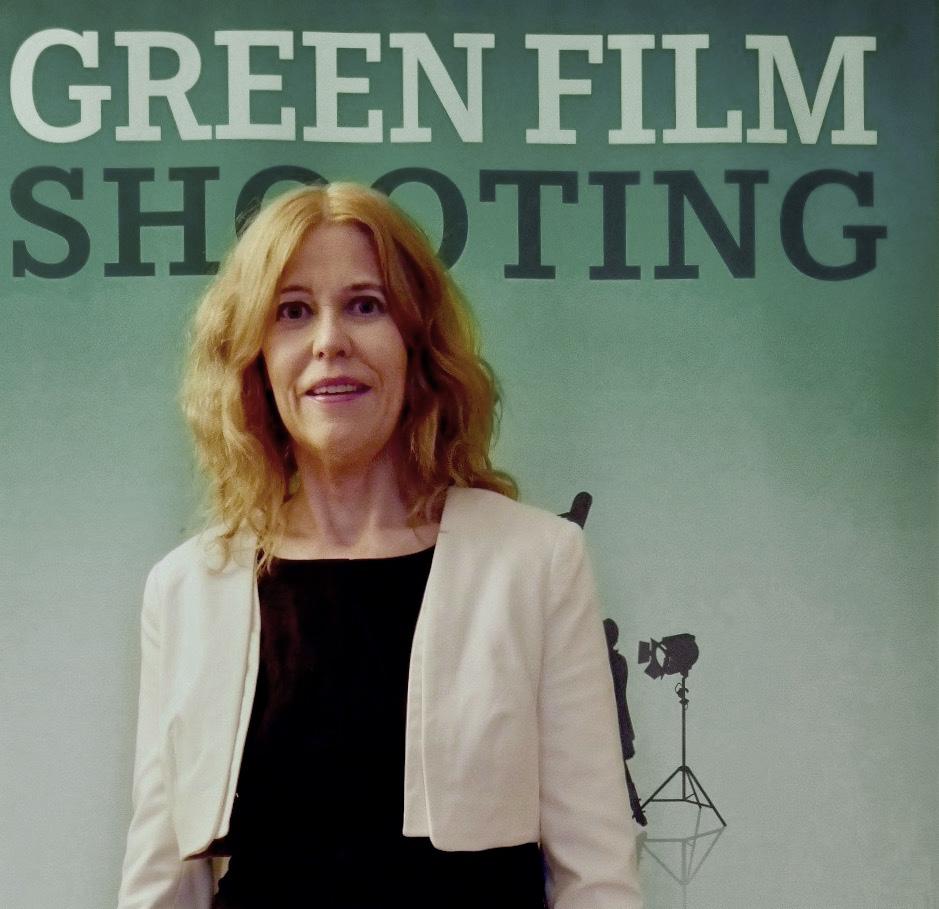
EC: What would you like to achieve and see happen in the next decade?
BH: My aim is very simple: ecological sustainability has to become normal as it was decades ago. We have fast fashion, we have fast food, but we also have fast films. We need to have a slower approach to making films where people have time to think and do things differently. n
40
“In sustainable filmmaking, early planning is what is most important and allows you to make the most difference.”
FEMALE FILMMAKER FOCUS: MICHELE MEEK
Director, writer and professor
by Lauren Devine
Lauren Devine (LD): What’s one of your earliest memories of being drawn to movies?

Michele Meek (MM): Some Kind of Wonderful resonated with me. I don’t know whether it was because I admired Watts’ gender-bending character or because I was attracted to her - maybe both. I saw it in the theatre maybe three times; that was one of the first movies where I saw a positive depiction of gender-bending that wasn’t a disguise or a joke.
LD: Do you have any favourite teen film depictions of gender representation?
MM: I loved how Princess Cyd normalised bisexuality with the teenage girl lead exploring experiences across gender and sexuality - when I was an adolescent, nobody really thought bisexuality or pansexuality were a thing.
LD: Your most recent film, Bay Creek Tennis Camp, features young transgender and non-binary actors. How did your experience working with these actors inform your approach?
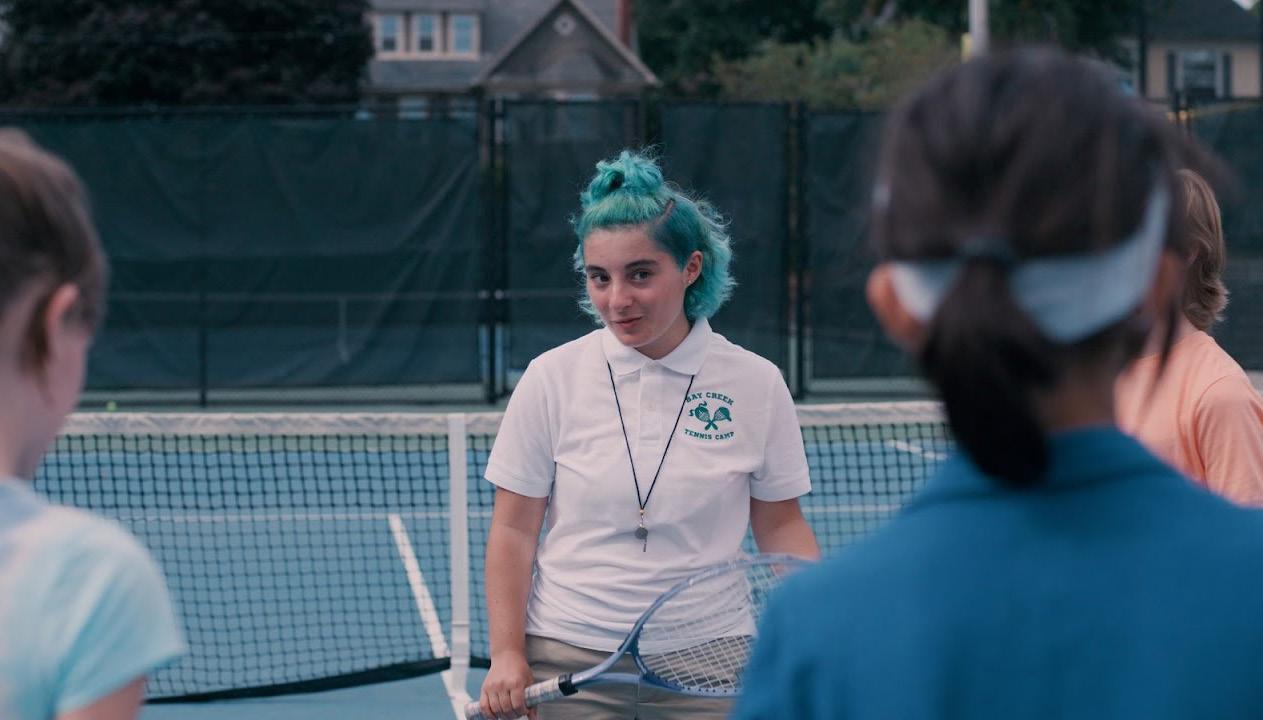
MM: With youth as the subject of films that adults both create and consume, how do we access youth stories authentically? I became interested in navigating this in an ethical way, and so Bay Creek Tennis Camp is a movie about youth made with youth, stemming partly from my being a parent of two gender-bending kids and also from the realisation that as adult filmmakers, we can engage youth as part of the process.
LD: Your book Consent Culture and Teen Films: Adolescent Sexuality in US Movies is grounded in wider cultural shifts surrounding youth sexuality and consent. How do you see conversations about on screen representation positively informing a meaningful consent culture?
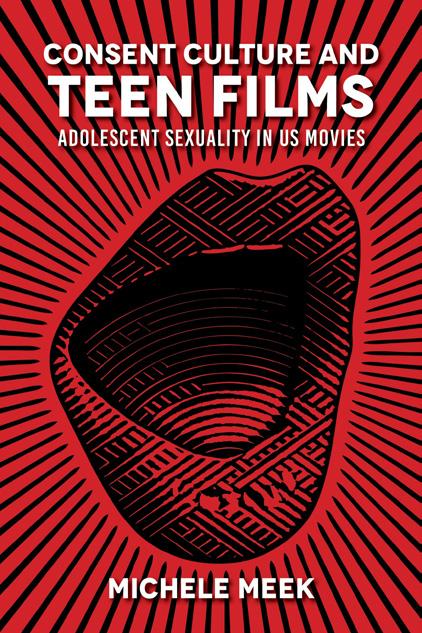
MM: Consent Culture and Teen Films includes a chapter on how trans teens are represented through teen films. I also talk about how
boys are represented in teen movies, particularly today, where the industry’s solution seems to be to swap gender roles so that girls become the aggressors. One of the most important elements of these conversations is to resist oversimplifying consent, which has the potential to erase many problematic experiences in the real world, which are often illuminated in this genre of film. Teens are constantly navigating complex sexual encounters that are confusing or ambiguous in many ways, and we need to make sure that we’re talking about those encounters.
LD: There is a recurring theme in your writing of how institutions like the Academy and the US’ National Film Registry fail to represent and engage with diversity. How do you see movement towards representational parity within these institutions progressing?
MM: I have short-term pessimism and long-term optimism. In the short term, we’re experiencing legislative backlash against women and non-binary and trans people. I’m seeing more women directing, and we’re seeing some women nominated for Oscars, and so we can’t say there has been no change. That being said, women are about half of the population and ought to be represented as such. We’re still in an era of tokenism in some ways. It’s a hard time to feel optimistic, but in the long term, it’s harder to keep people down. n
Bay Creek Tennis Camp
41
“Bay Creek Tennis Camp is a movie about youth made with youth, stemming partly from my being a parent of two genderbending kids.”
CINEGIRL’S PICKS
Film Festivals and Tradeshows
Festival de Cannes 2023
May 16-27, 2023
https://www.festival-cannes.com/en/
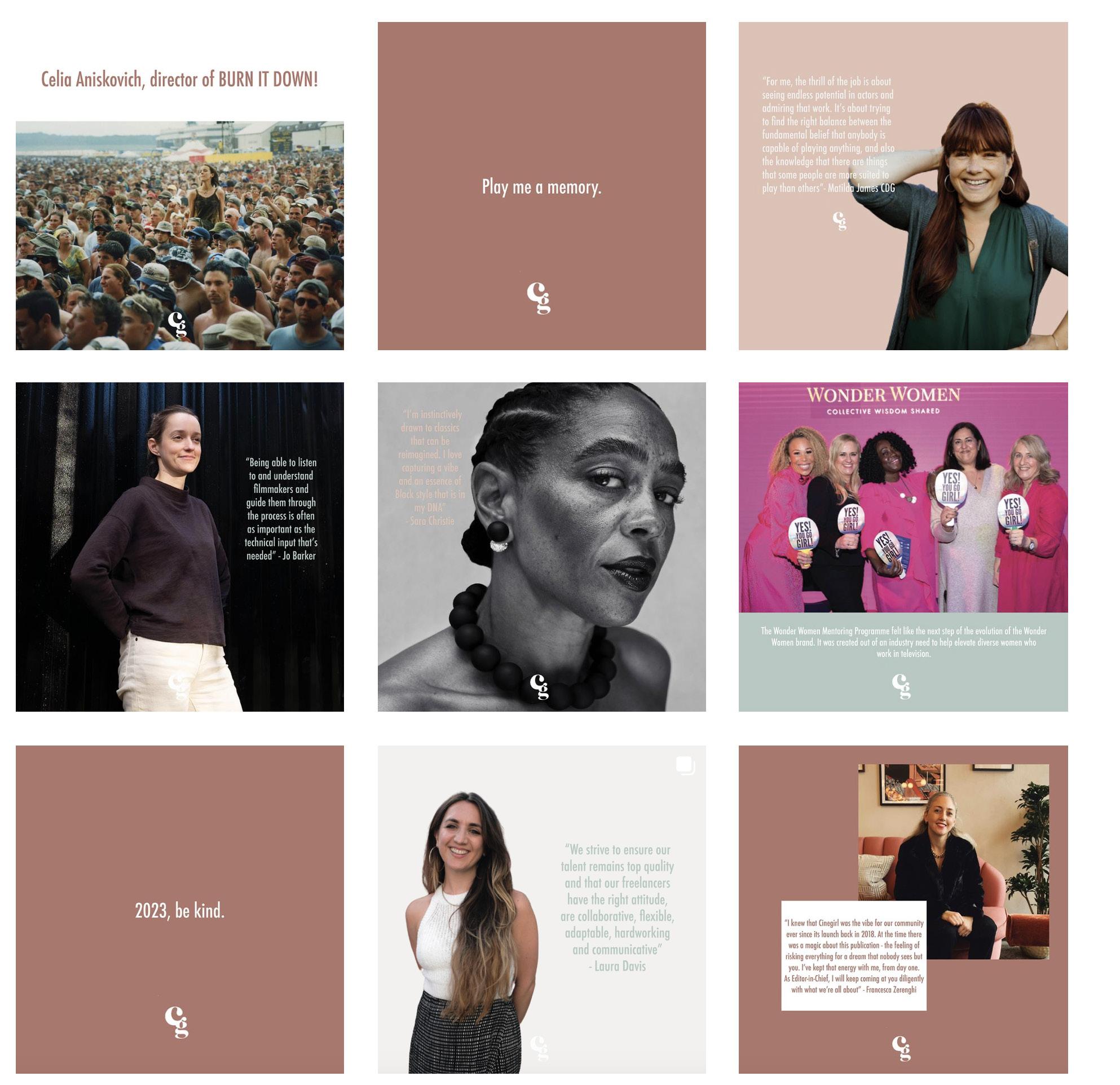
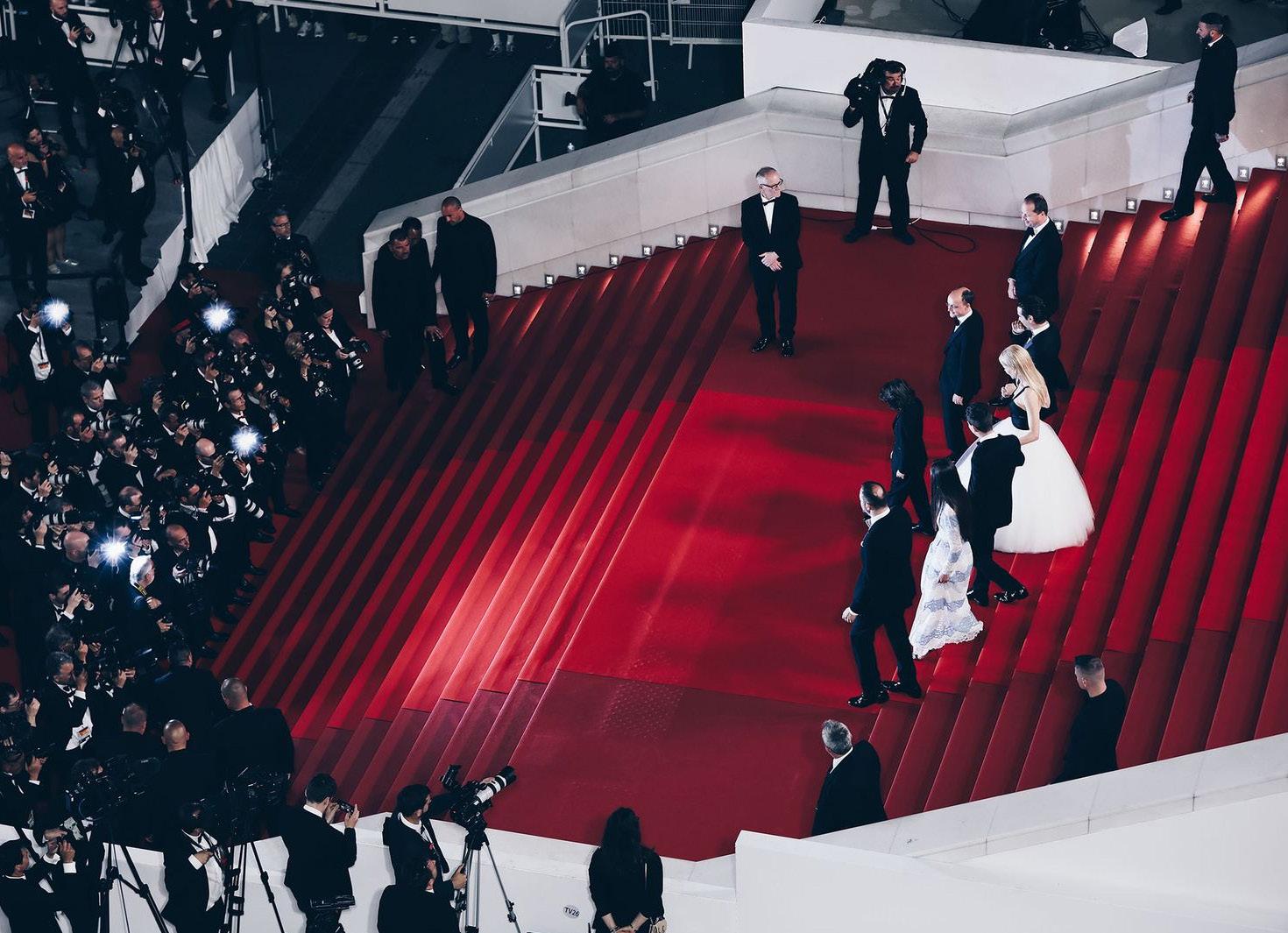
Venice Film Festival
Biennale Cinema - Mostra
internazionale d’arte cinematografica
30 August- 9 September, 2023
https://www.labiennale.org/en
Raindance Film Festival
Autumn 2023
https://raindance.org/
IBC 2023
15-18 September, 2023
https://show.ibc.org/

London Film Festival
October 2023
https://whatson.bfi.org.uk/lff/Online/
stay informed of Cinegirl news, activities and updates, follow us @cinegirlmag instagram.com/cinegirlmag 42
Festival de Cannes (Credit: Christophe Bouillon FDC)
To
TITOUNE
Instagram: @titoune.illustration Website: https://titoune.shop
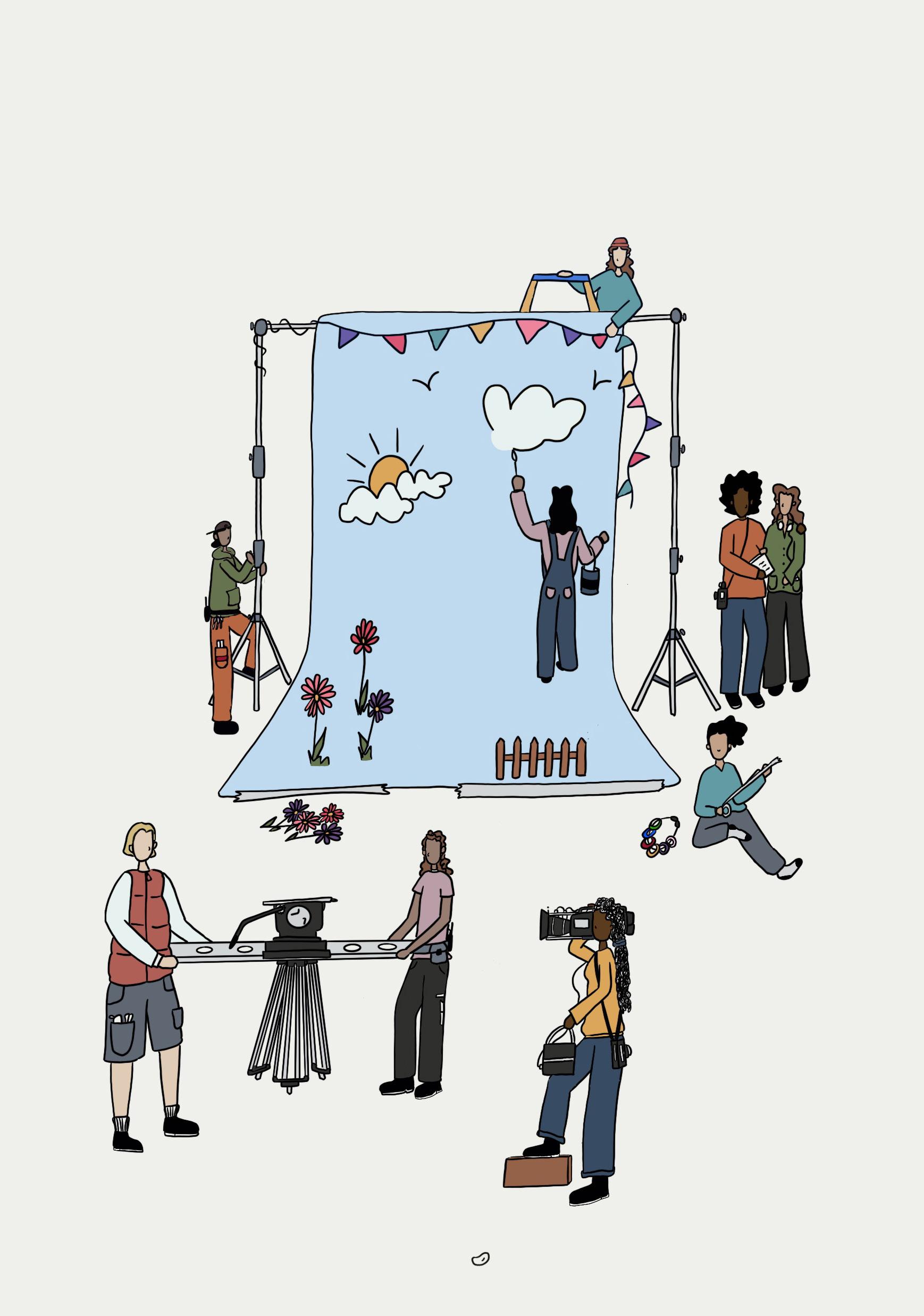
43
A unique destination for creative people to come together.

CREATIVE SPACE
81 Charlotte Street, London, is an exciting collaboration between CVP & ARRI, designed as a destination that celebrates all aspects of our community, from early access to the latest production solutions - including the ALEXA 35, Mini LF, TRINITY 2 - to learning, socialising and networking.
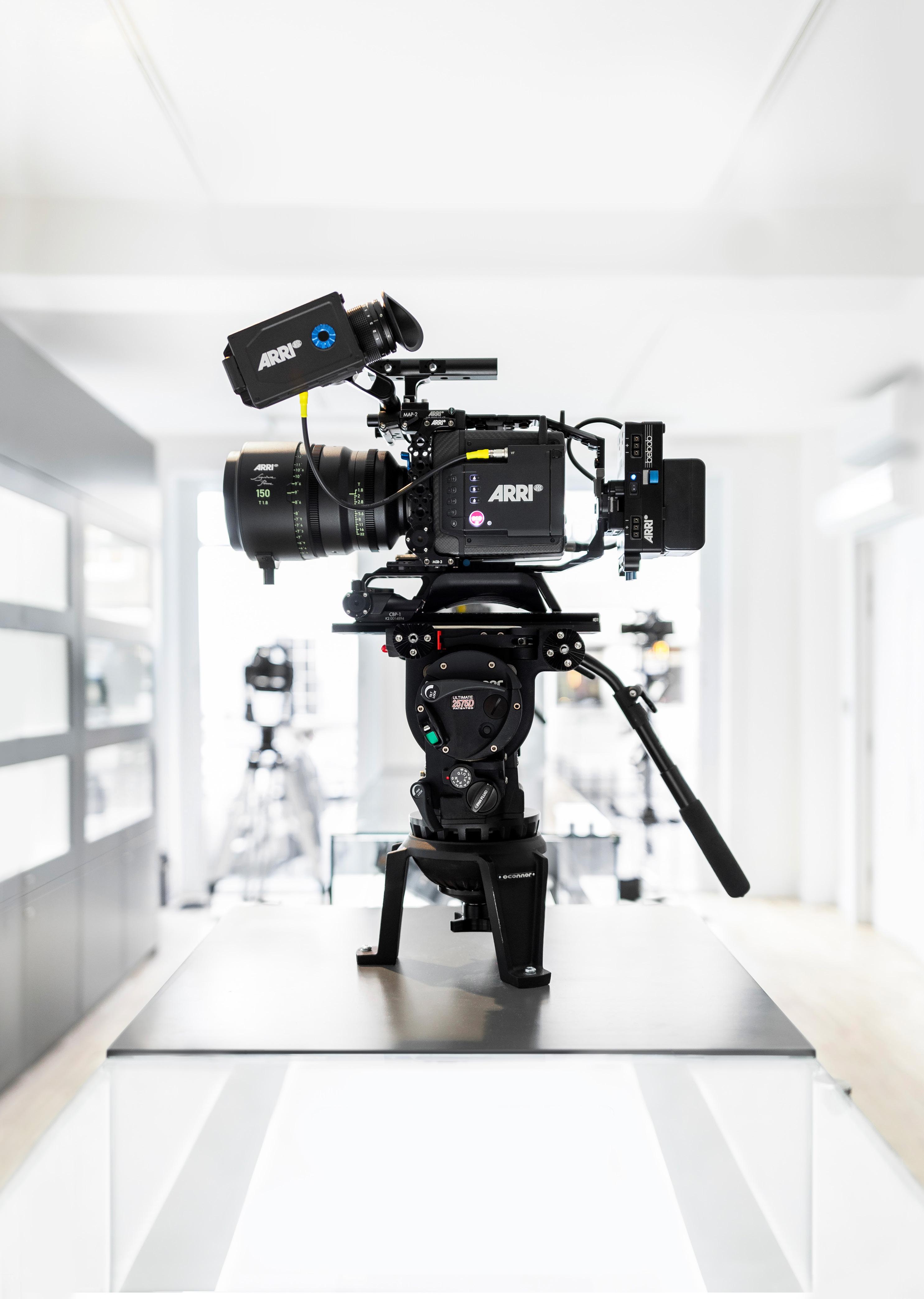











 Abbi Collins
Abbi Collins






 1 - Sticks & Balls by Jacqueline Wright & Alice Lowe (London, Best 8 2007)
2 - Perversion by Chelsy Mitchell & Rebecca Louise Tiernan (New York, Best 8 2017)
1 - Sticks & Balls by Jacqueline Wright & Alice Lowe (London, Best 8 2007)
2 - Perversion by Chelsy Mitchell & Rebecca Louise Tiernan (New York, Best 8 2017)







 (l-r) Carly Stone, Pippa Bhatt and Michelle Stapleton
(l-r) Carly Stone, Pippa Bhatt and Michelle Stapleton








 Seven Winters in Tehran
Seven Winters in Tehran



 by Oriana Gregorj
by Oriana Gregorj




















